- Metaphysics玄学:御定奇门遁甲(343P):2024年-04月-28日
- Metaphysics玄学:掌上乾坤解析奇门遁甲(450P):2024年-04月-28日
- Metaphysics玄学:奇门星象绝学(685P):2024年-03月-31日
- Metaphysics玄学:妙派奇门遁甲使用方法(93P):2024年-03月-28日
- Metaphysics玄学:飞龙道人太公奇门遁(101P):2024年-03月-28日
- Metaphysics玄学:奇门遁甲盘解说(163P):2024年-03月-24日
- Metaphysics玄学:奇门股市实战解秘(364P):2024年-03月-19日
- Metaphysics玄学:奇门遁甲秘笈大全(314P):2024年-03月-19日
- Metaphysics玄学:奇门遁甲工具篇(332P):2024年-03月-19日
- Metaphysics玄学:奇门遁甲笔记(62P):2024年-03月-03日
- Metaphysics玄学:奇门遁甲详解(260P):2024年-02月-24日
- Metaphysics玄学:奇门启悟(315P):2024年-02月-15日
- Metaphysics玄学:奇门法窍(313P):2024年-02月-15日
- Metaphysics玄学:学奇门遁甲这本最好用(259P):2024年-01月-17日
- Metaphysics玄学:奇门速断实例(208P):2024年-01月-17日
- Metaphysics玄学:奇门秘占(417P):2024年-01月-17日
- Metaphysics玄学:奇门枢要(98P):2023年-12月-15日
- Metaphysics玄学:神奇之门 - 张志春(392P):2023年-12月-15日
- Metaphysics玄学:奇门旨归(273P):2023年-12月-15日
- Metaphysics玄学:姜太公奇门遁甲十二宫取用神(151P):2023年-12月-10日
- Metaphysics玄学:参筹秘书(奇门)(533P):2023年-12月-10日
- Metaphysics玄学:商战与奇门(151P):2023年-12月-10日
- Metaphysics玄学:奇门堪舆学(525P):2023年-12月-10日
- Metaphysics玄学:奇门遁甲基础篇(275P):2023年-12月-05日
- Metaphysics玄学:奇门遁甲阳宅篇(233P):2023年-12月-05日
- Metaphysics玄学:奇门归宗(378P):2023年-12月-05日
- Metaphysics玄学:奇门遁甲与商战(144P):2023年-12月-01日
- Metaphysics玄学:彩票与奇门(62P):2023年-11月-27日
- Metaphysics玄学:奇门一得(273P):2023年-10月-20日
- Metaphysics玄学:奇门遁甲天地全书(318P):2023年-09月-22日
- Metaphysics玄学:不吹牛第一届奇门遁甲培训班讲义(689P):2023年-09月-22日
- Metaphysics玄学:御定奇门宝鉴(385P):2023年-09月-20日
- Metaphysics玄学:斗转星移:解开奇门遁甲之谜(465P):2023年-09月-20日
- Metaphysics玄学:阴盘法术奇门面授班教材(140P):2023年-09月-19日
- Metaphysics玄学:奇门遁甲200问(221P):2023年-09月-02日
- Metaphysics玄学:一善居士奇门遁甲应用诀(205P):2023年-07月-30日
- Metaphysics玄学:万真生活化奇门遁甲(197P):2023年-07月-30日
- Metaphysics玄学:奇门遁甲精要(166P):2023年-06月-02日
- Metaphysics玄学:阴盘奇门真的很神奇(512P):2023年-04月-24日
- Metaphysics玄学:凤麟易理阴盘奇门(298P):2023年-04月-24日
- Metaphysics玄学:于成道人法术奇门(89P):2023年-04月-19日
- Metaphysics玄学:铁书生奇门遁甲笔记(154P):2023年-04月-12日
- Metaphysics玄学:问道太公奇门遁(191P):2023年-04月-12日
- Metaphysics玄学:遁甲三书(581P):2023年-04月-08日
- Metaphysics玄学:遁甲护身术(333P):2023年-04月-04日
- Metaphysics玄学:法奇门天机秘(167P):2023年-04月-04日
- Metaphysics玄学:奇门改运秘术(320P):2023年-04月-04日
- Metaphysics玄学:奇门遁甲秘笈大全(332P):2022年-09月-22日
《奇门遁甲学》原出军事上的九宫八卦的排兵布阵。《皇帝阴符经》上讲:“八卦甲子,神机鬼藏。”《神奇之门》说:“奇门遁甲的神秘奥妙之处均藏在八卦和甲子之中。”
九宫和八卦是空间的象征和全息场,六十甲子是时间的代表和全息场,奇门遁甲学将二者结合起来,将时间与空间构成一体,从中寻找时空的运行规律及时空的交汇点,进行整体观察认识,在不利的环境中,选择有利时空进行趋吉避凶。
由于奇门遁甲学来源于军事上的九宫八卦的排兵布阵,十天干除代表时间象征,其特征是具有人格化的军事内容。甲、乙、丙、丁、戊、己、庚、辛、壬、癸在奇门遁甲排兵布阵中代表军事上特定的机构。
甲为元帅,他隐藏在阵中,所以遁甲中的乙、丙、丁为三奇是元帅身边的最得力的三个辅佐官,就象现代军队中的参谋部、政治部、后勤部三个机关。参谋部制定作战计划,提出合理建议,起参谋作用。政治部作政治思想宣传教育工作,起着鼓舞部队的作用。后勤部主要负责军需给养,起着供应粮草的作用。乙、丙、丁三奇也可作为三支奇兵来理解。在奇门遁甲学中,庚为主要敌人,甲为主帅,为阳木,最怕阳金庚来克杀;乙为阴木,乙与庚合,甲把乙嫁庚为妻来解除甲木的威胁;丙为阳火,好比甲木的儿子,阳火能克杀庚金,以解除甲木之危;丁为阴火,也能克伤庚金,保护甲木之父,故将乙、丙、丁称谓三奇。
将戊、己、庚、辛、壬、癸称为六仪,即六支军队,也可称为六支仪仗或六面旗帜等等。十天干与十二地支相配形成六十甲子(十与十二的最小公倍数),十天干每个用六次,这样就有了六甲、六乙、六丙、六丁、六戊、六己、六庚、六辛、六壬、六癸。所谓六甲即甲子、甲戌、甲申、甲午、甲辰、甲寅它们分别代表军队中的六个将帅。甲子为元帅,其他五甲为将军,在战场上他们按分布顺序和时间先后出战,或者按照时间顺序值班管事。
一甲子隐蔽在正黄旗戊土的仪仗之下,二甲戌隐蔽在镶黄旗己土仪仗之下,三甲申隐蔽在正白旗庚金的仪仗之下,四甲午隐蔽在镶白旗辛金仪仗之下。五甲辰隐蔽在正黑旗壬水仪仗之下,六甲寅隐蔽在镶黑旗癸水仪仗之下。所以甲子又叫甲子戊,甲戌又叫甲戌己,甲申又叫甲申庚,甲午又叫甲午辛,甲辰又叫甲辰壬,甲寅又叫甲寅癸。组合成永远不变列与乙、丙、丁三奇分布九宫,以备守。
六甲分别隐蔽在六仪之下,行不变的队形和顺序,即戊、己、庚、辛、壬、癸、丁、丙、乙组合无头无尾的太极图,循环往复,以致无穷无尽。
The Qimen Dunjia School originally originated from the military’s Nine Palaces and Eight Trigrams of arranging troops. The Emperor’s Yin Fu Jing states: “The Eight Trigrams Jia Zi, the Divine Machine and Ghost Cang.” The “Magic Gate” states: “The mysterious and mysterious aspects of the Qi Men Dun Jia are all hidden within the Eight Trigrams and Jia Zi.”
The Nine Palaces and Eight Trigrams are symbols and holographic fields of space, while the Sixty Jia Zi represents time and holographic fields. Qimen Dun Jia Xue combines the two, integrating time and space, searching for the laws of time and space and the intersection points of time and space, and conducting overall observation and understanding. In unfavorable environments, it chooses favorable time and space to seek good fortune and avoid evil.
Due to the fact that the Qimen Dunjia School originated from the military arrangement of the Nine Palaces and Eight Trigrams, and the Ten Heavenly Stems represent a symbol of time, its characteristic is the personification of military content. A, B, C, D, E, Ji, G, Xin, Ren, and Gui represent specific military institutions in the Qimen Dunjia formation.
A is a marshal who hides in the formation, so B, C, and D are the three most powerful assistants around the marshal, just like the staff, political, and logistics departments in modern armies. The staff department formulates operational plans, provides reasonable suggestions, and serves as a staff officer. The Political Department carries out political and ideological propaganda and education work, playing a role in inspiring the military. The logistics department is mainly responsible for military supplies and plays a role in supplying food and forage. The three wonders of B, C, and D can also be understood as the three wonders. In the Qimen Dunjia School, Geng is the main enemy, Jia is the commander, and Yang Mu is the most afraid of Yang Jin Geng’s attack; Yi is a Yin wood, and Yi merges with Geng. A marries Yi to Geng as his wife to relieve the threat from Jia wood; Bing is the Yang Fire, like the son of Jia Mu. Yang Fire can defeat Geng Jin and relieve the danger of Jia Mu; Ding is a Yin fire that can also damage the Geng metal and protect the father of armor and wood. Therefore, B, C, and D are called the Three Wonders.
Wu, Ji, Geng, Xin, Ren, and Gui are referred to as the Six Rites, which are the six armies and can also be referred to as the Six Honorary Guards or Six Banners. The ten heavenly stems are paired with the twelve earthly branches to form sixty Jia Zi (the smallest common multiple of ten and twelve). Each of the ten heavenly stems is used six times, resulting in six Jia, six Yi, six Bing, six Ding, six Wu, six Ji, six Geng, six Xin, six Ren, and six Gui. The so-called Six Jia refers to the six generals in the army, namely Jia Zi, Jia Xu, Jia Shen, Jia Wu, Jia Chen, and Jia Yin. Jia Zi is a marshal, while the other five Jia Jia are generals. On the battlefield, they go out in order of distribution and time, or they are on duty as managers in chronological order.
The first armor is hidden under the ceremonial guard of Wutu in Zhenghuang Banner, the second armor is hidden under the ceremonial guard of Jitu in Xianghuang Banner, the third armor is hidden under the ceremonial guard of Gengjin in Zhengbai Banner, and the fourth armor is hidden under the ceremonial guard of Xinjin in Xiangbai Banner. Wujia Chen is hidden under the Ren Shui ceremonial guard of Zhenghei Banner, while Liujia Yin is hidden under the Guishui ceremonial guard of Xianghei Banner. So Jia Zi is also called Jia Zi Wu, Jia Xu is also called Jia Xu Ji, Jia Shen is also called Jia Shen Geng, Jia Wu is also called Jia Wu Xin, Jia Chen is also called Jia Chen Ren, and Jia Yin is also called Jia Yin Gui. Combine into an eternal and unchanging column, with the distribution of B, C, and D in the nine palaces for defense.
The Six Armors are hidden under the Six Rites, forming an unchanging formation and sequence, that is, the combination of Wu, Ji, Geng, Xin, Ren, Gui, Ding, C, and B in a Tai Chi diagram without a head or tail, repeating in a loop, resulting in endless possibilities.



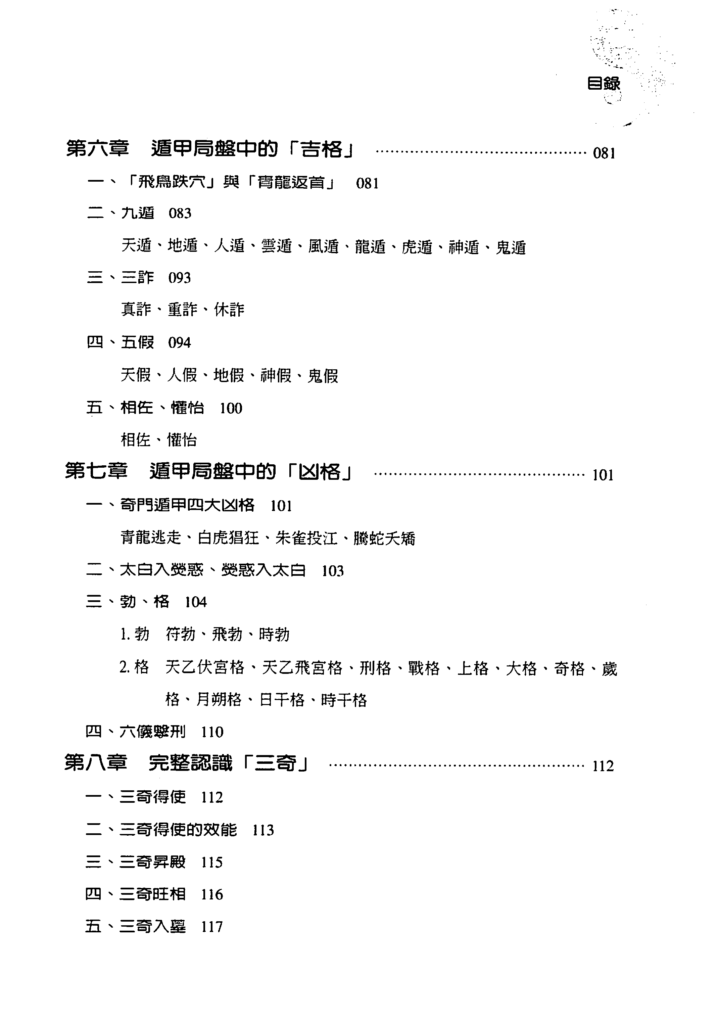



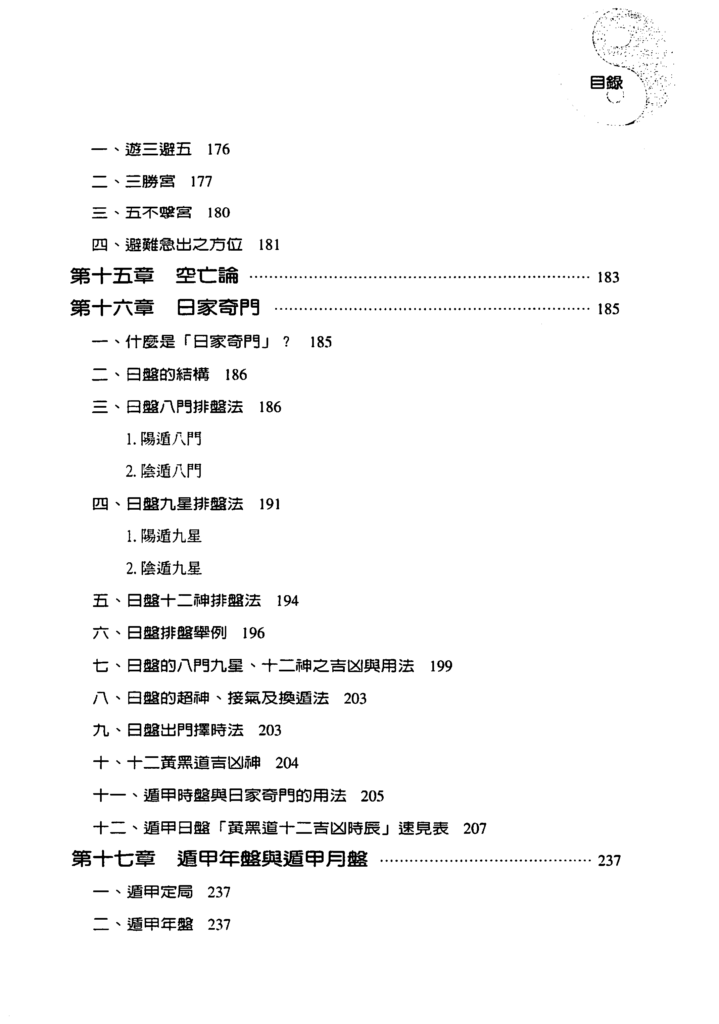
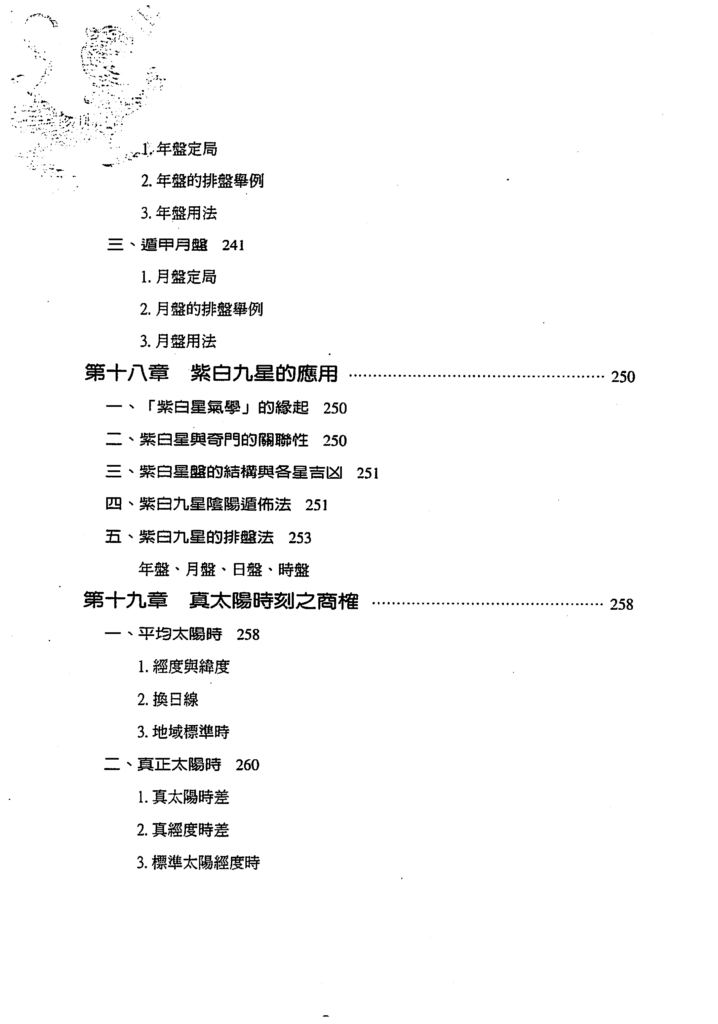

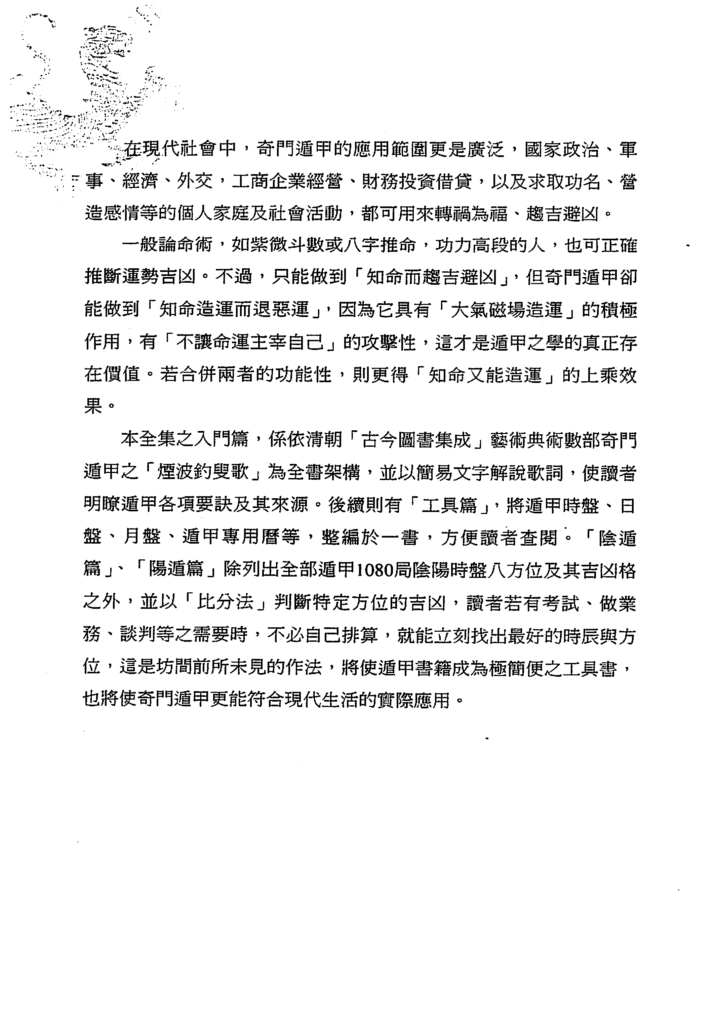

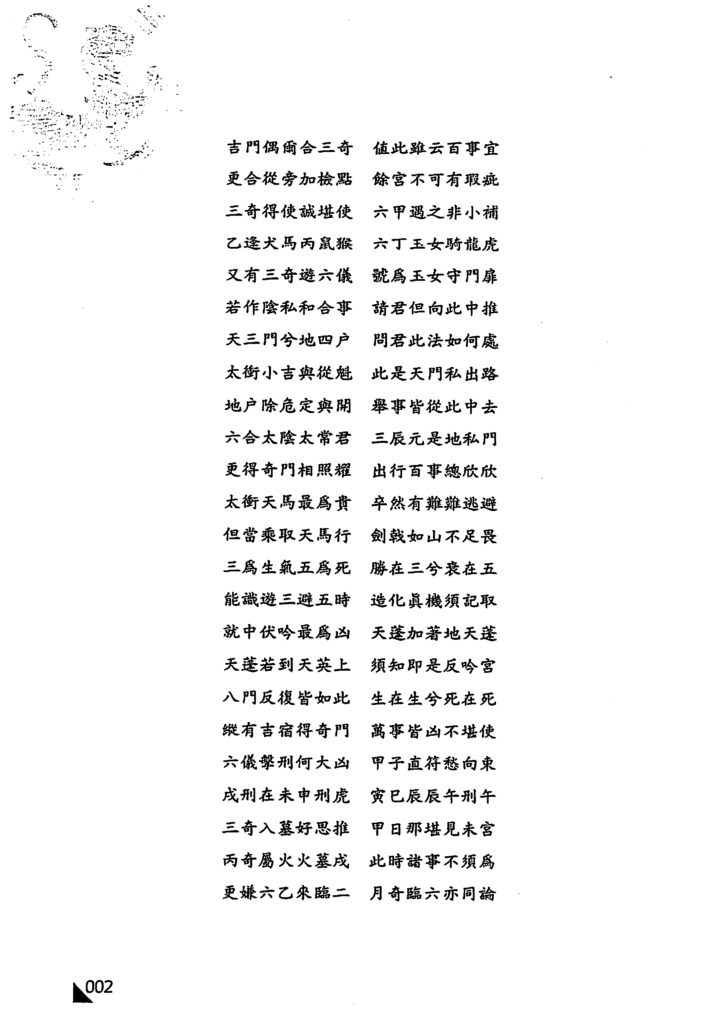

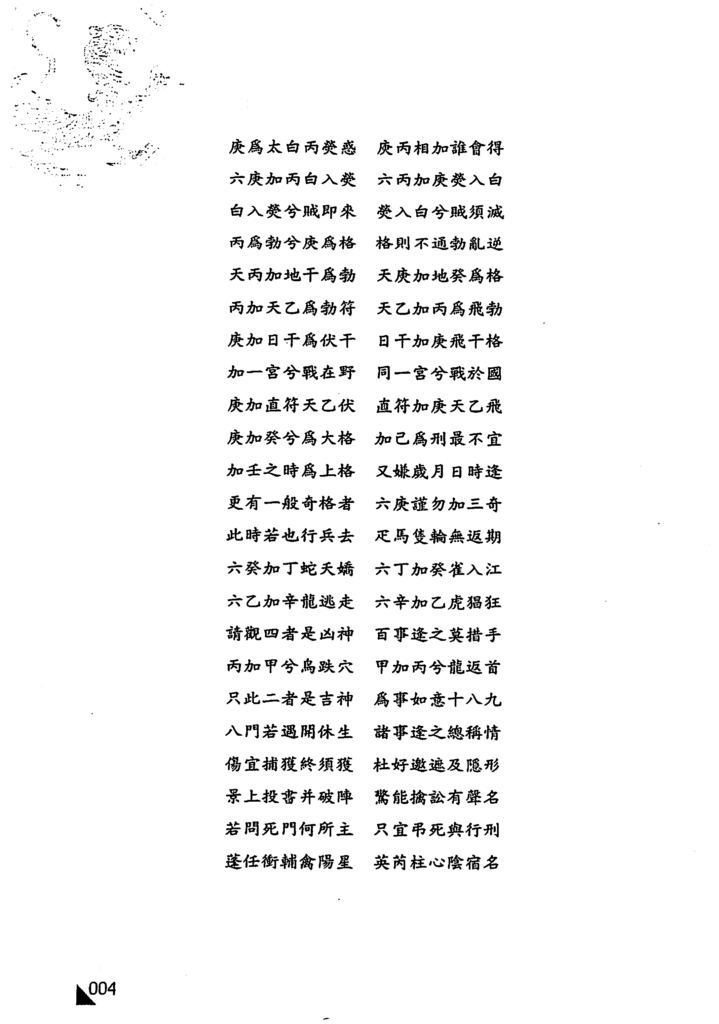





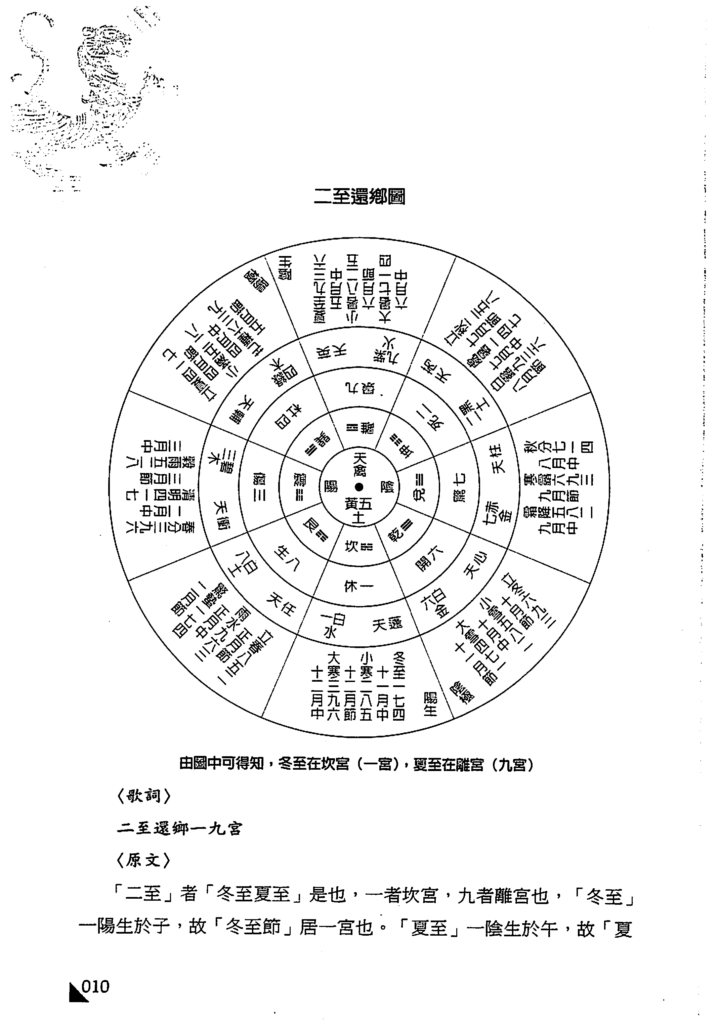
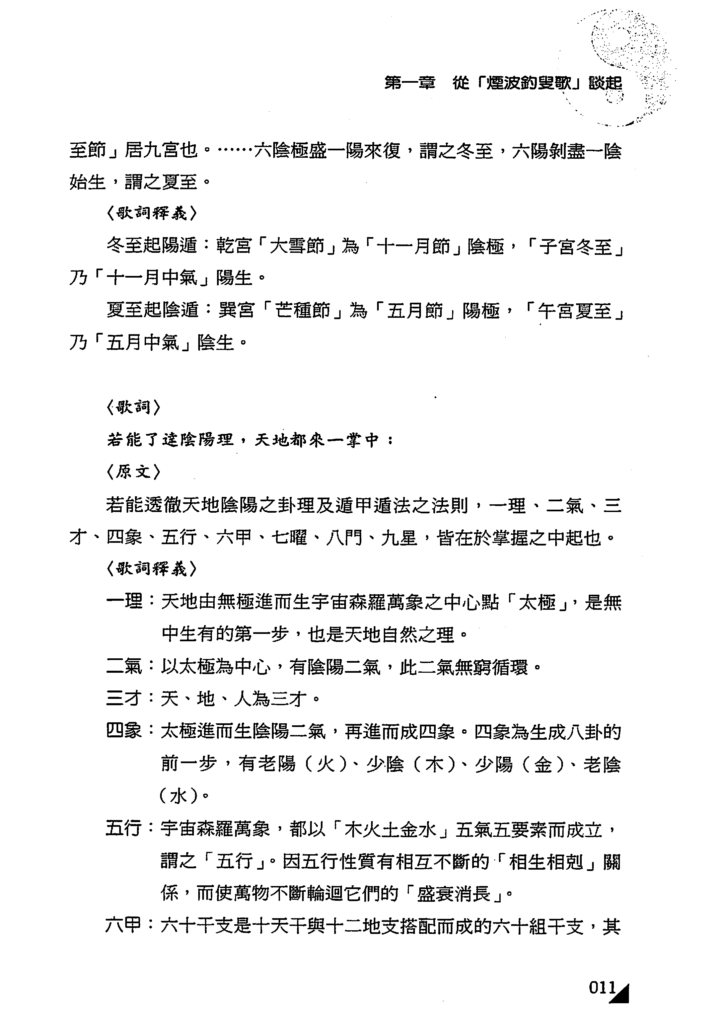

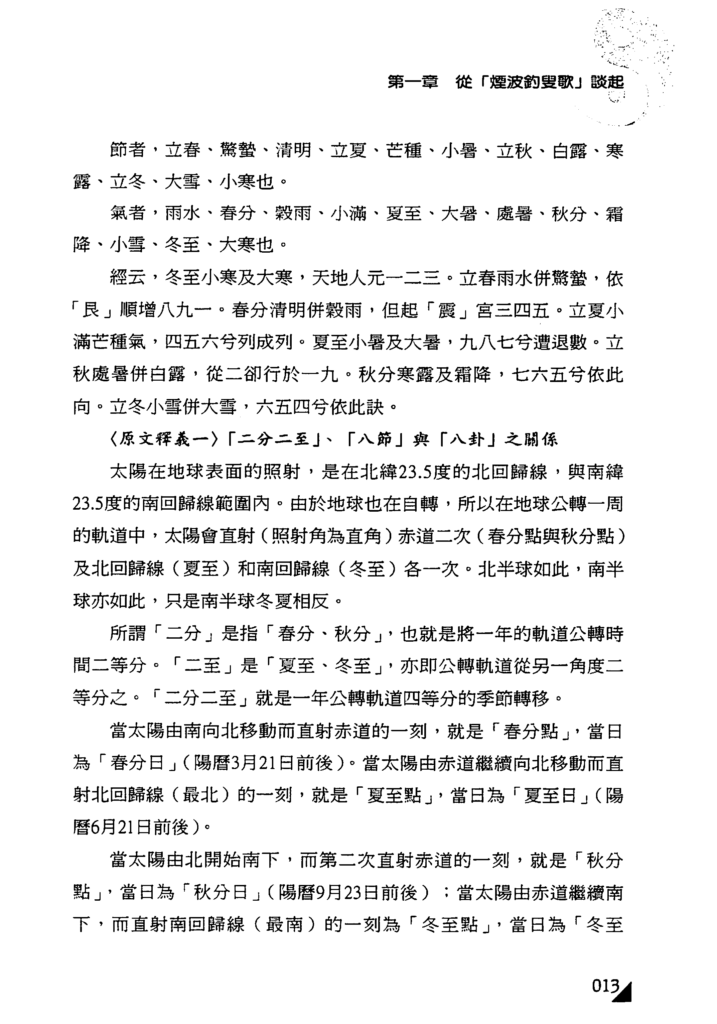

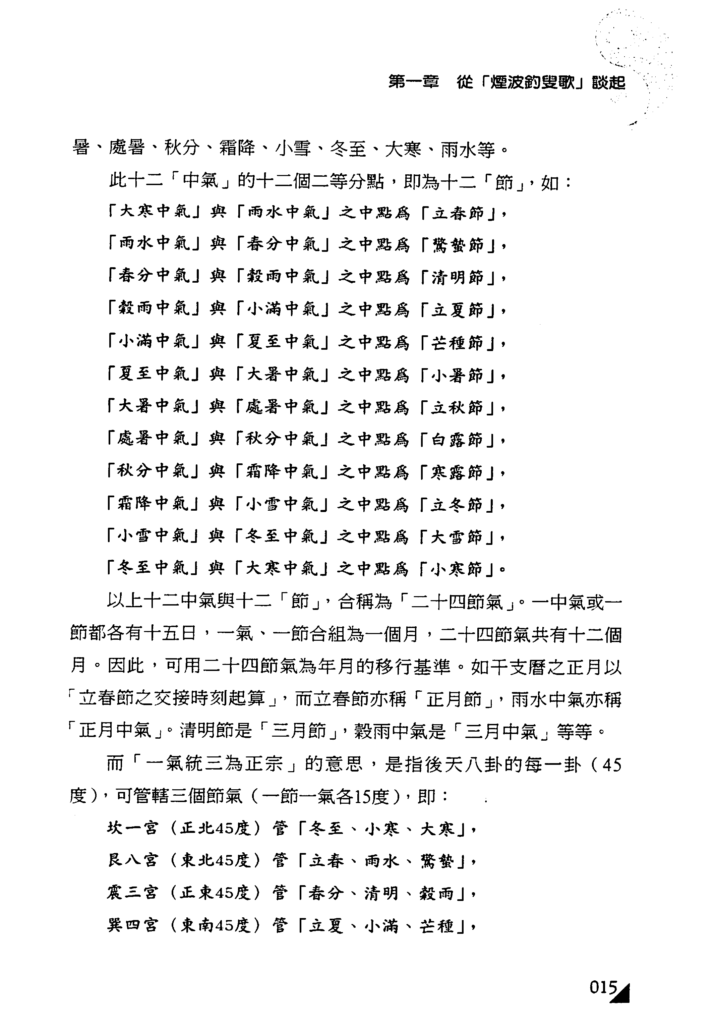
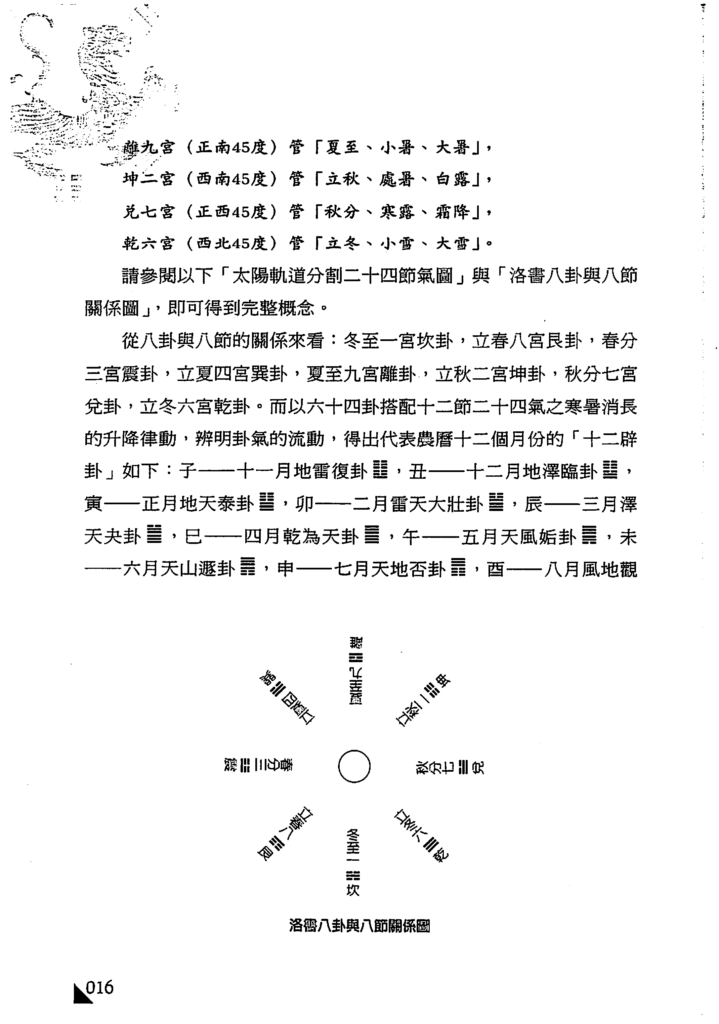
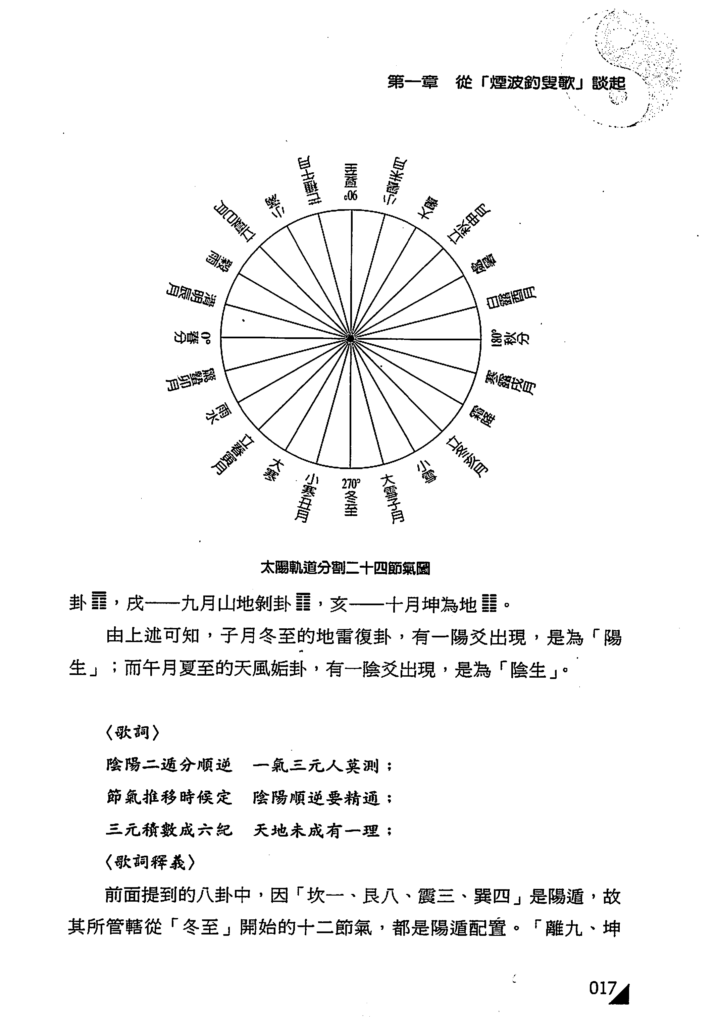
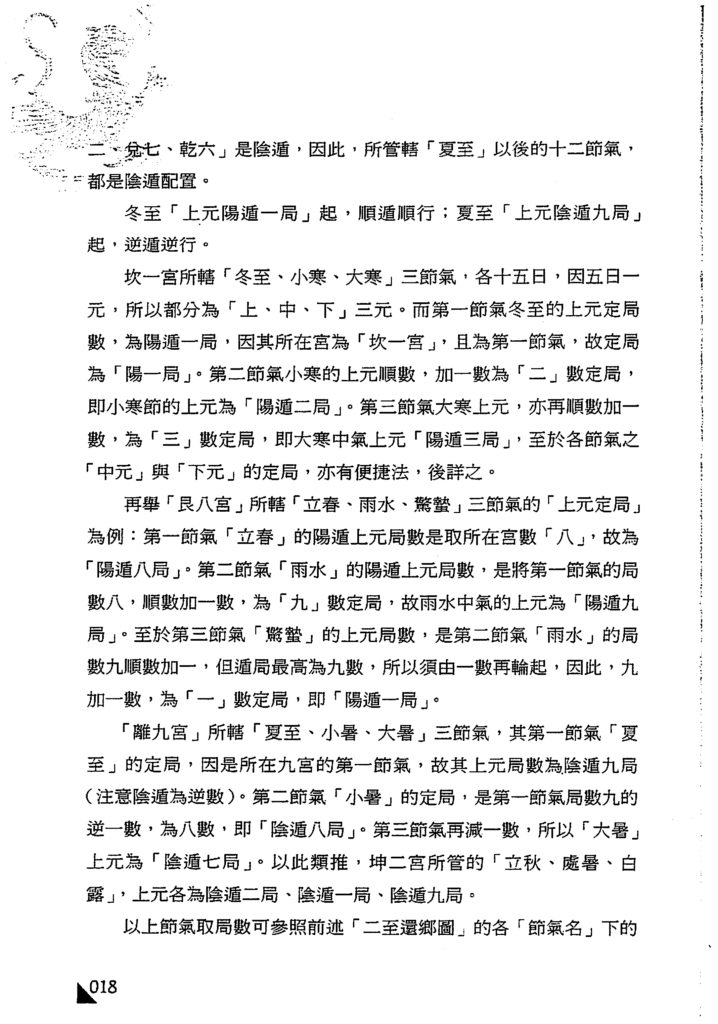
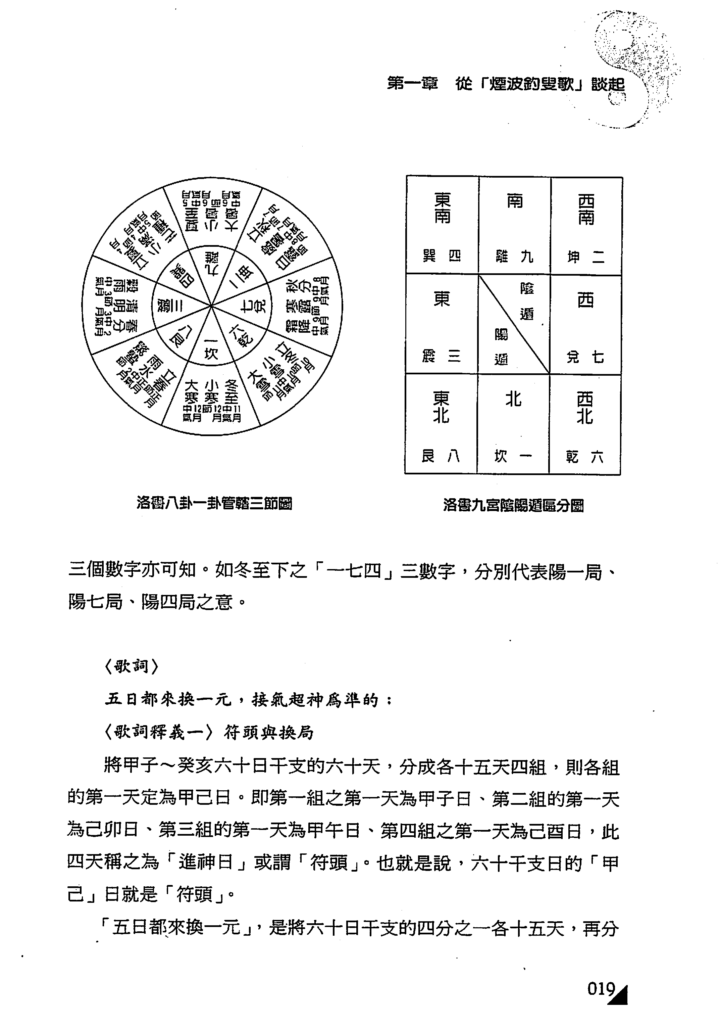

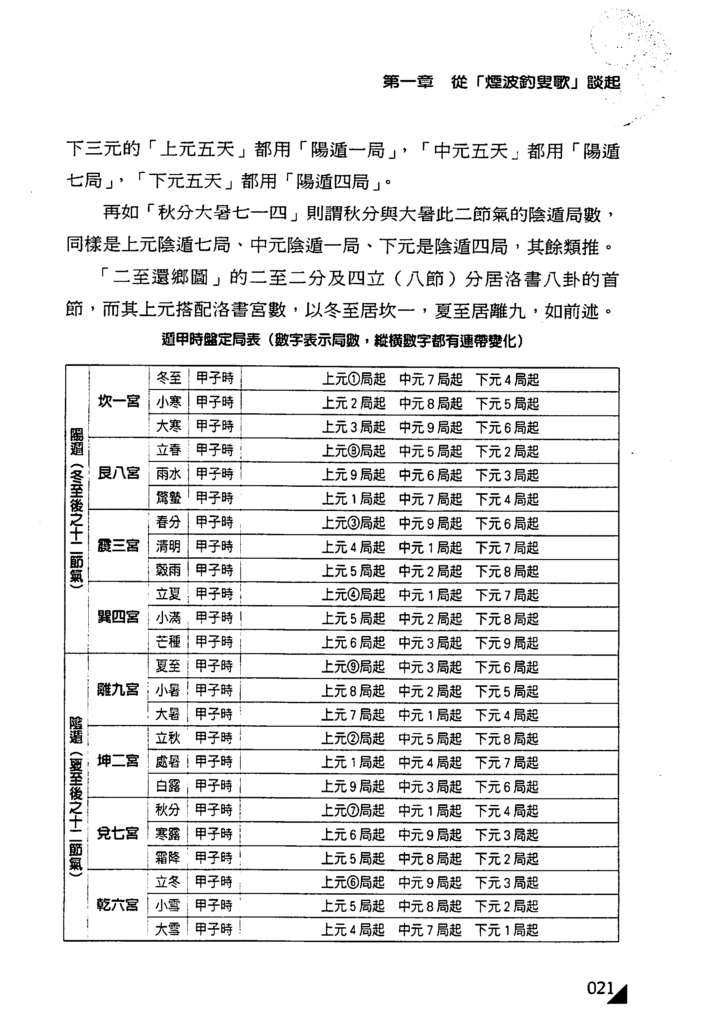


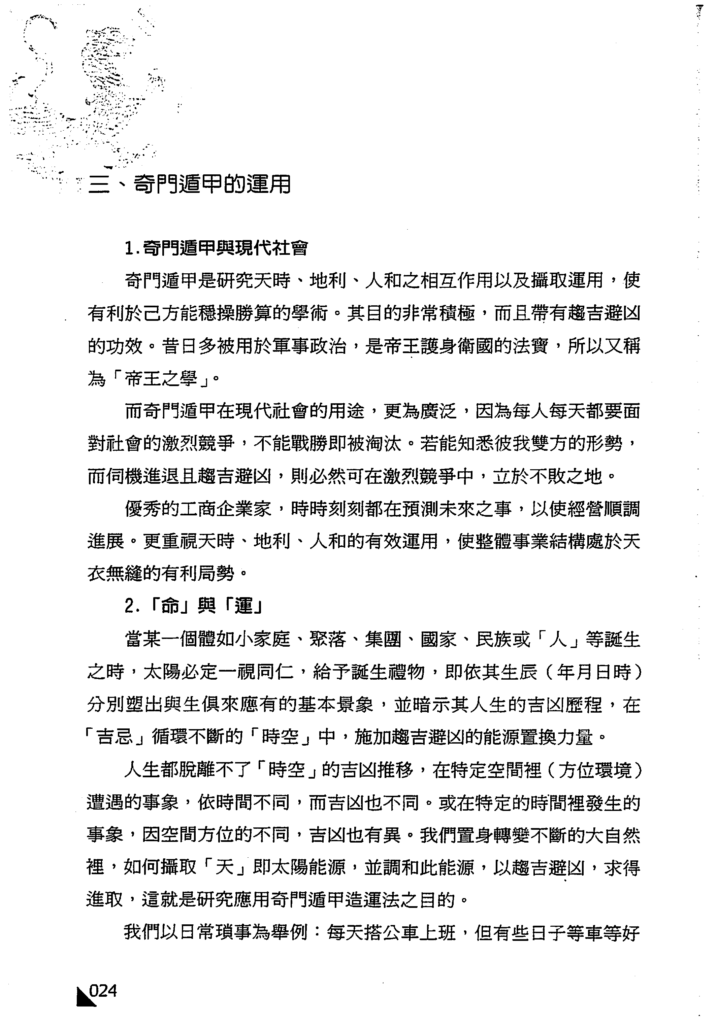
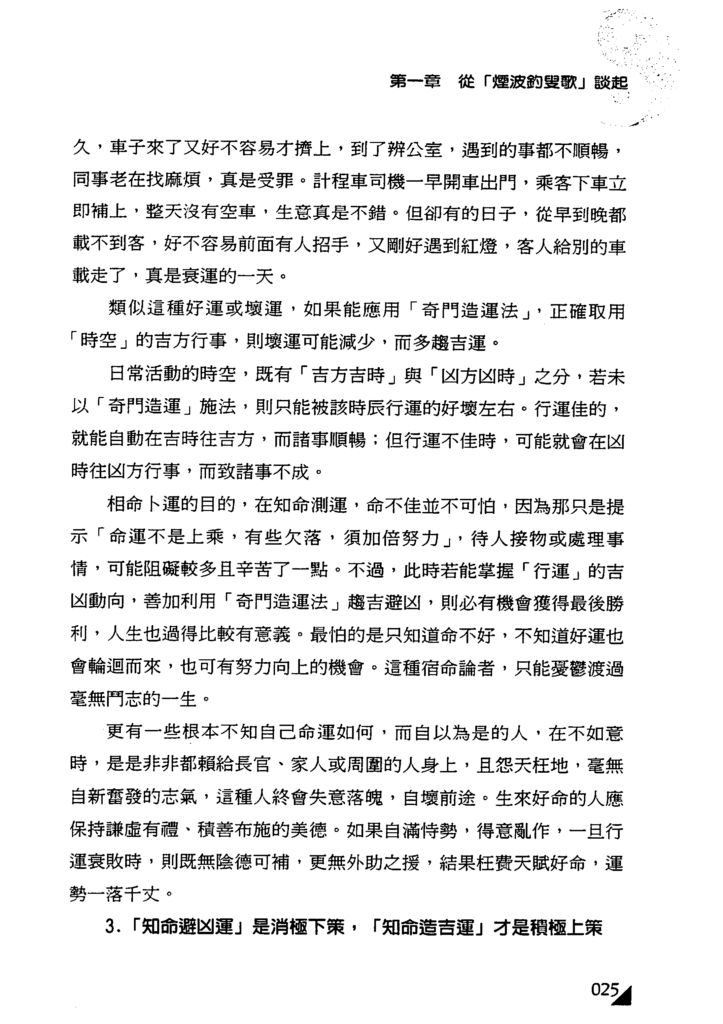



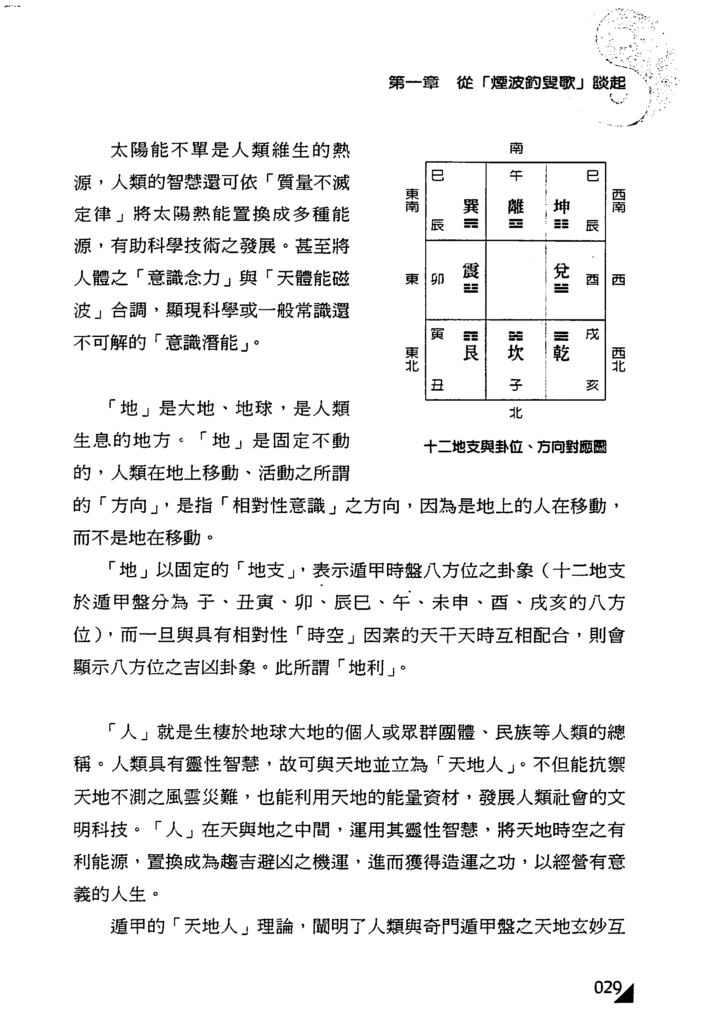
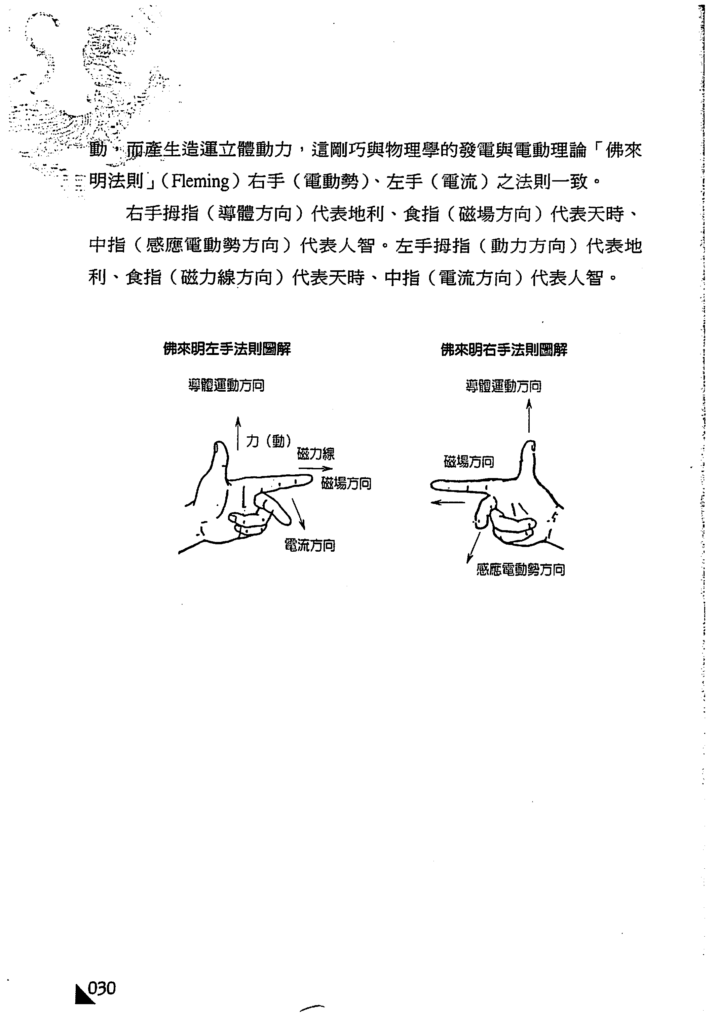

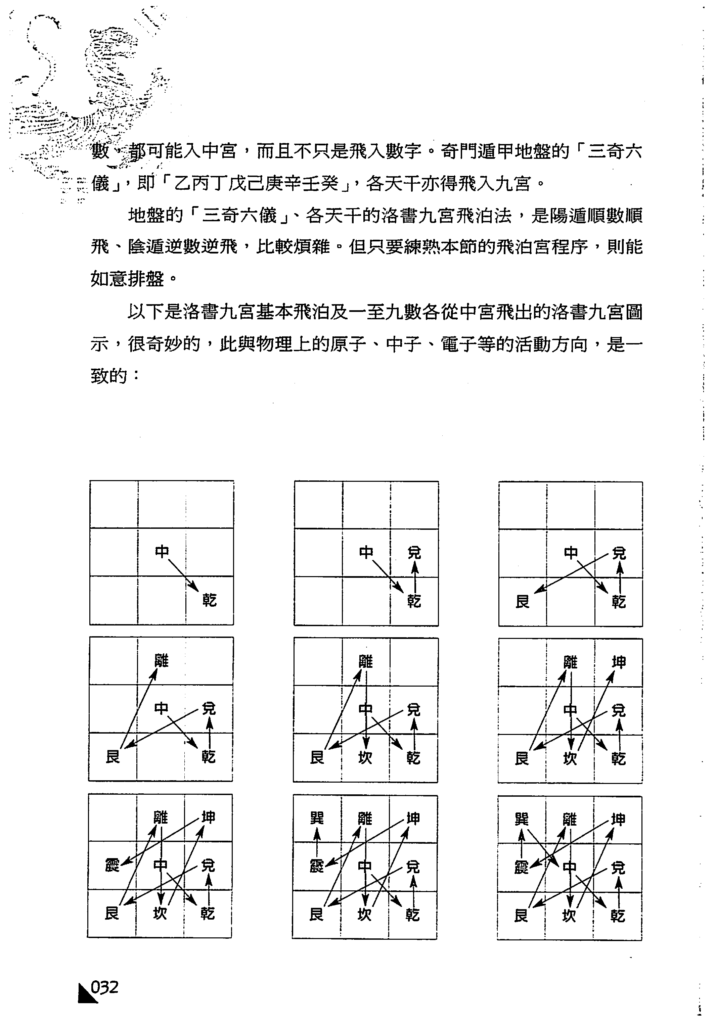
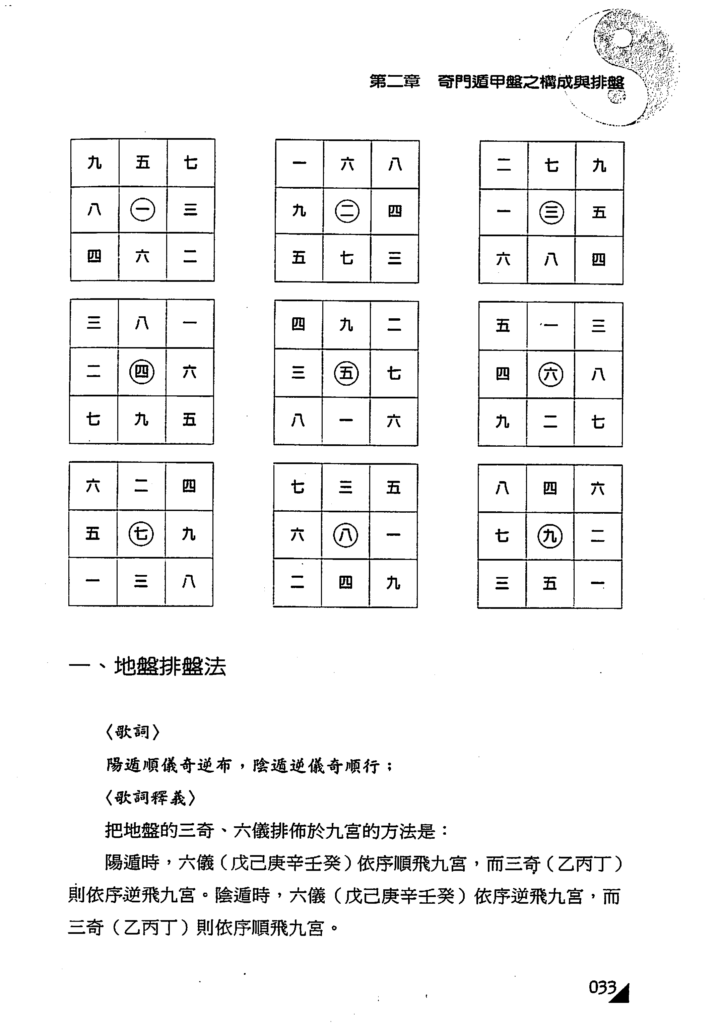




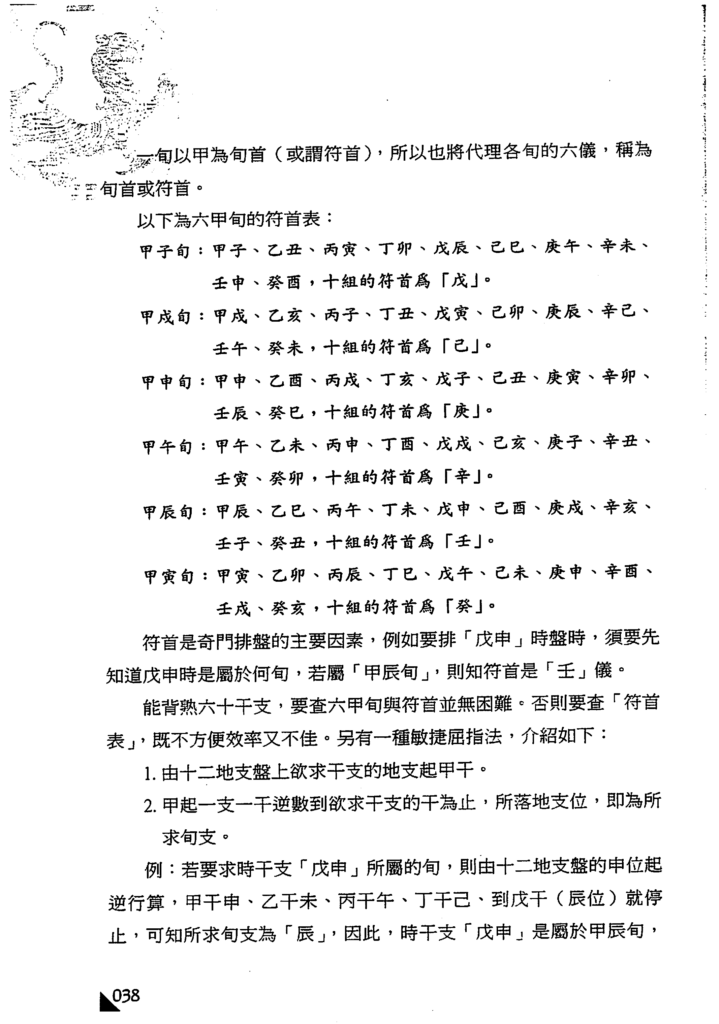
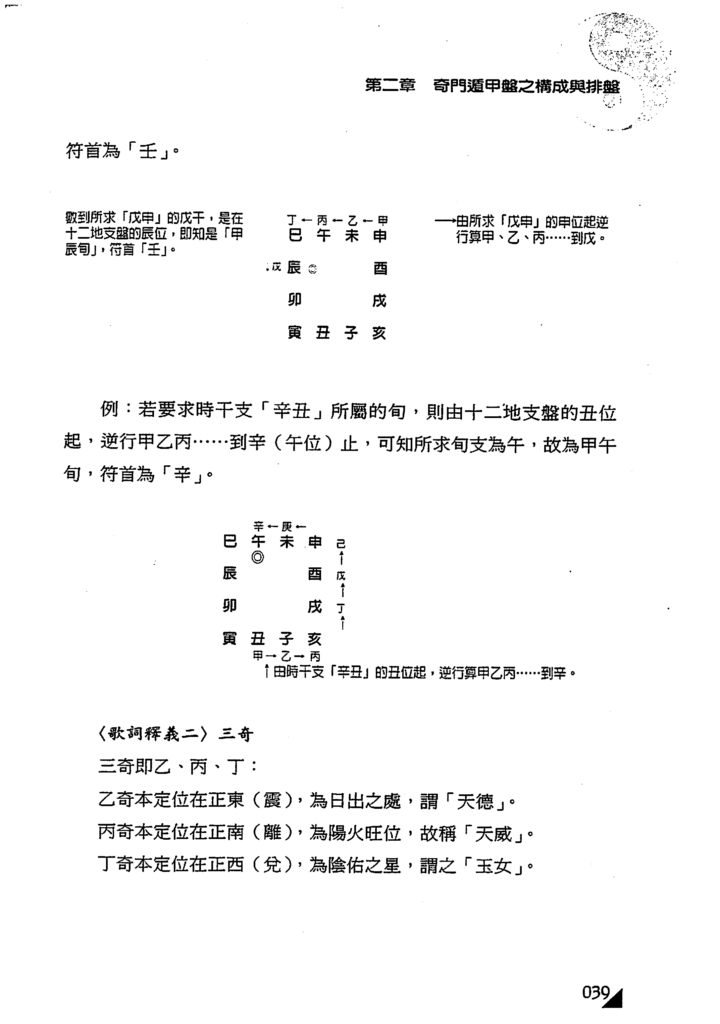

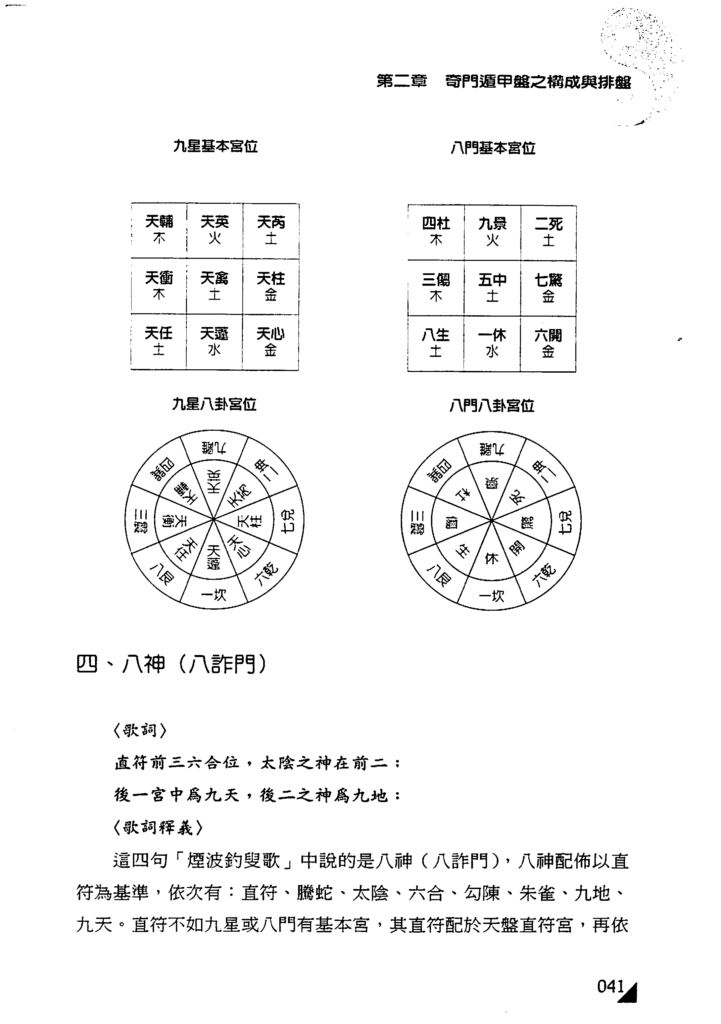

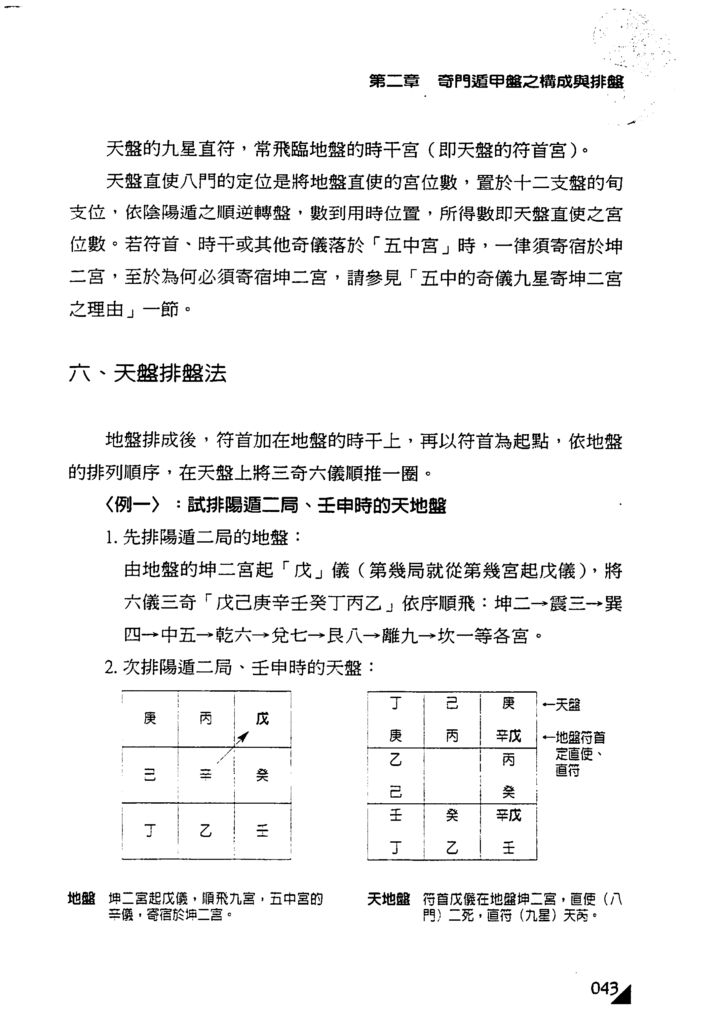
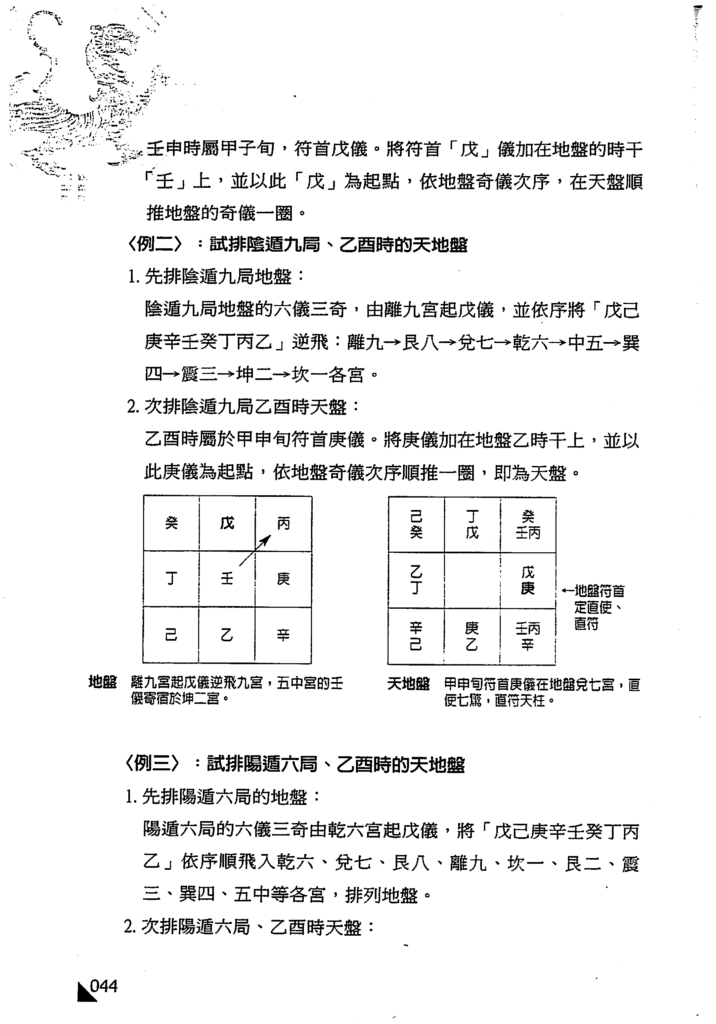
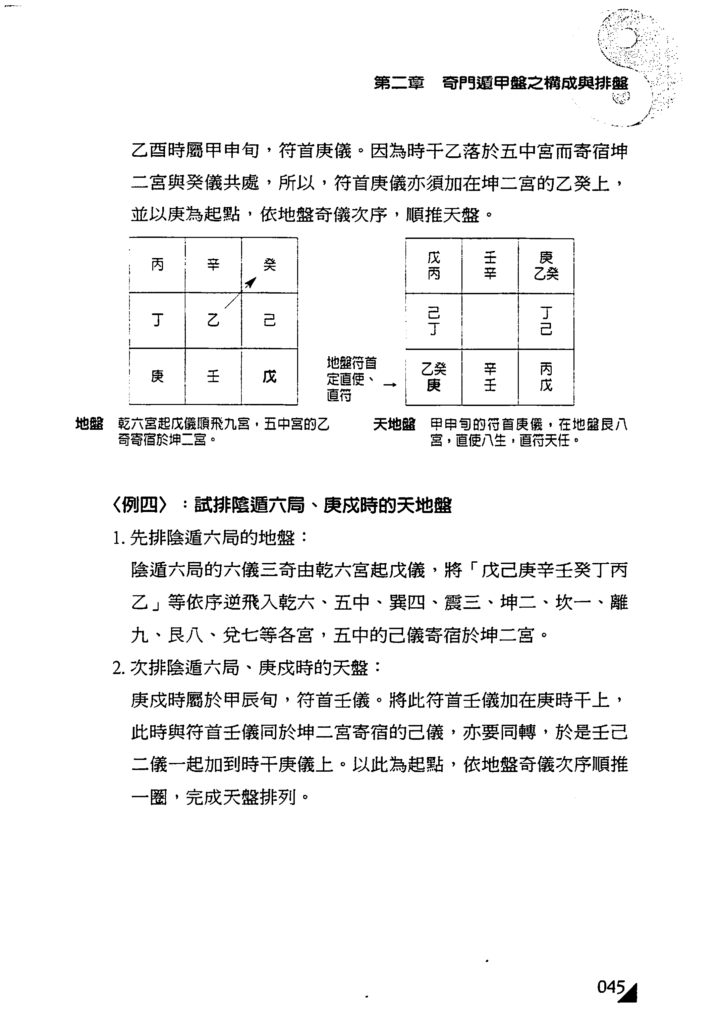
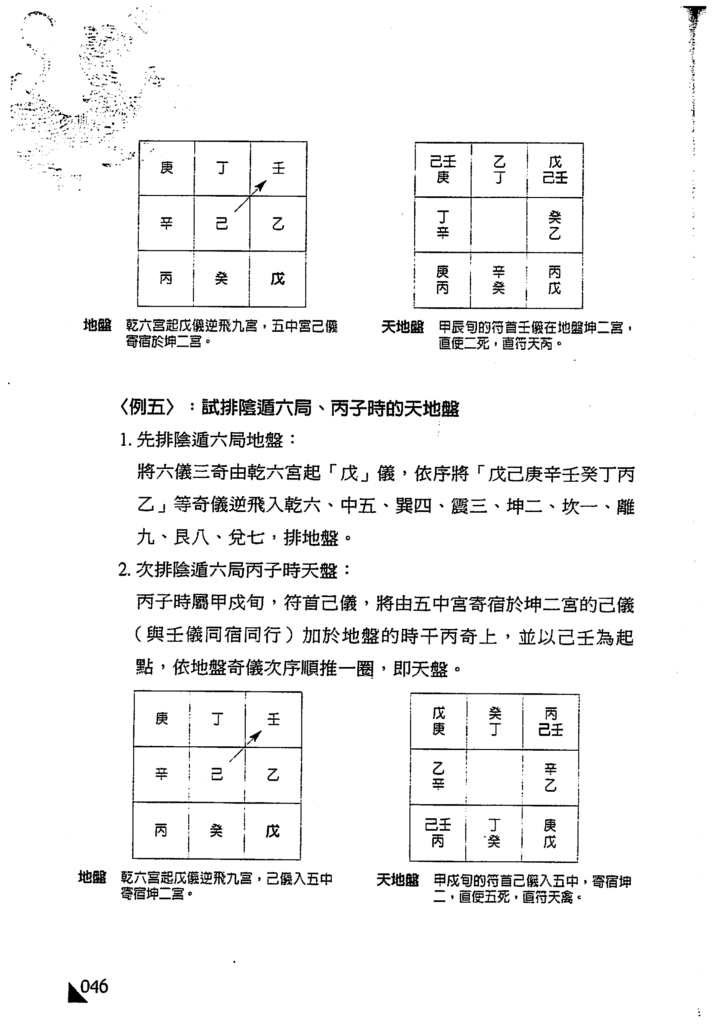
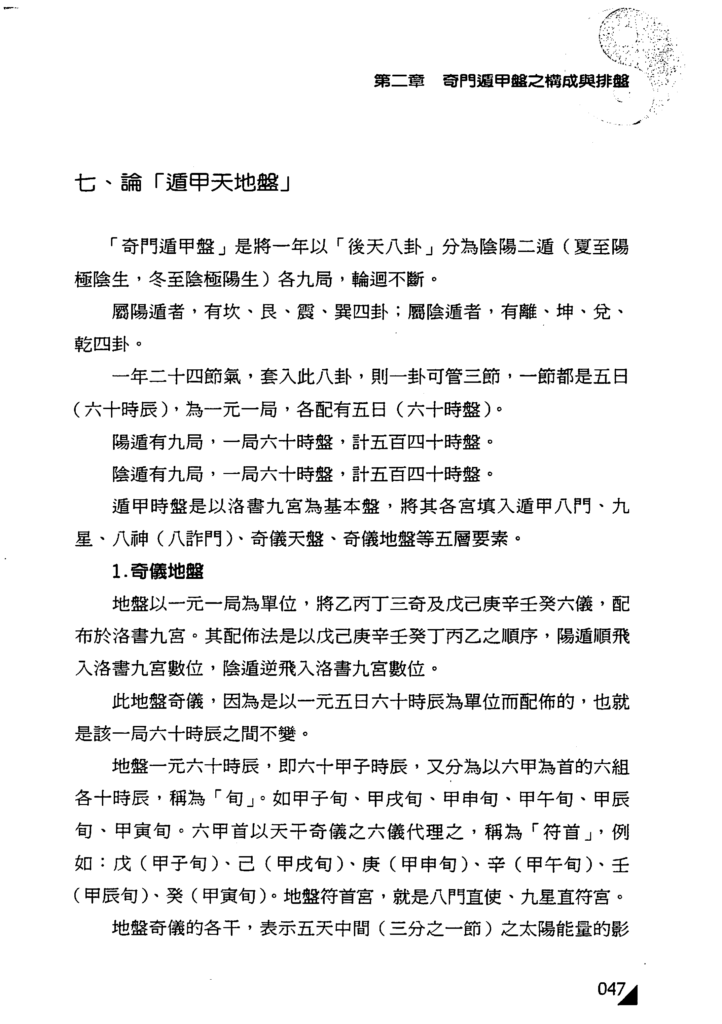
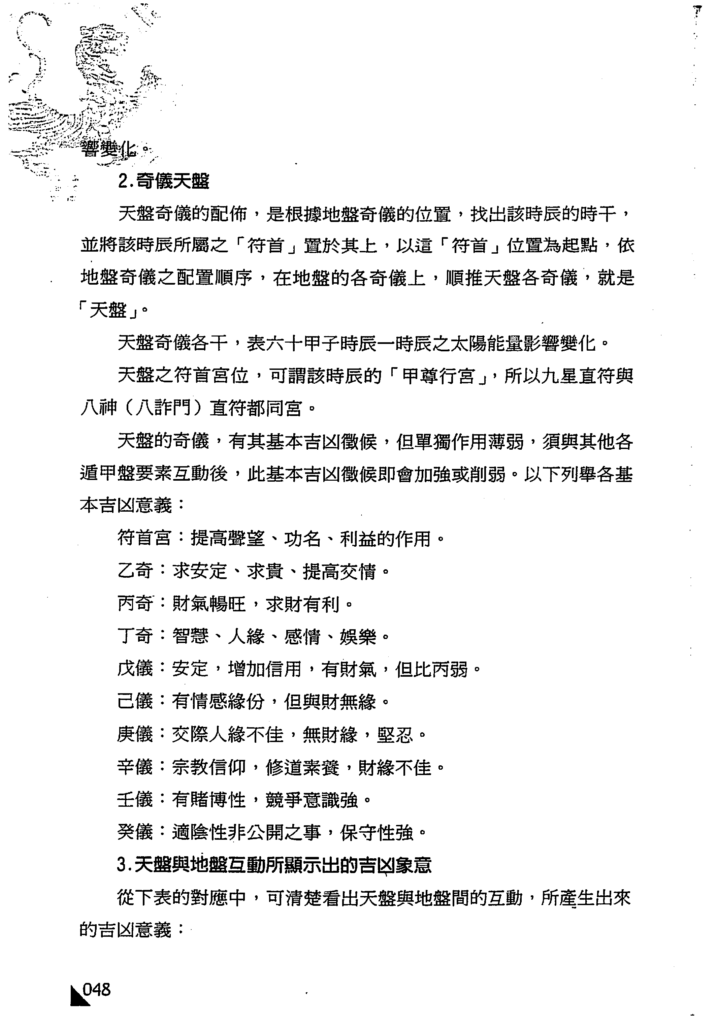


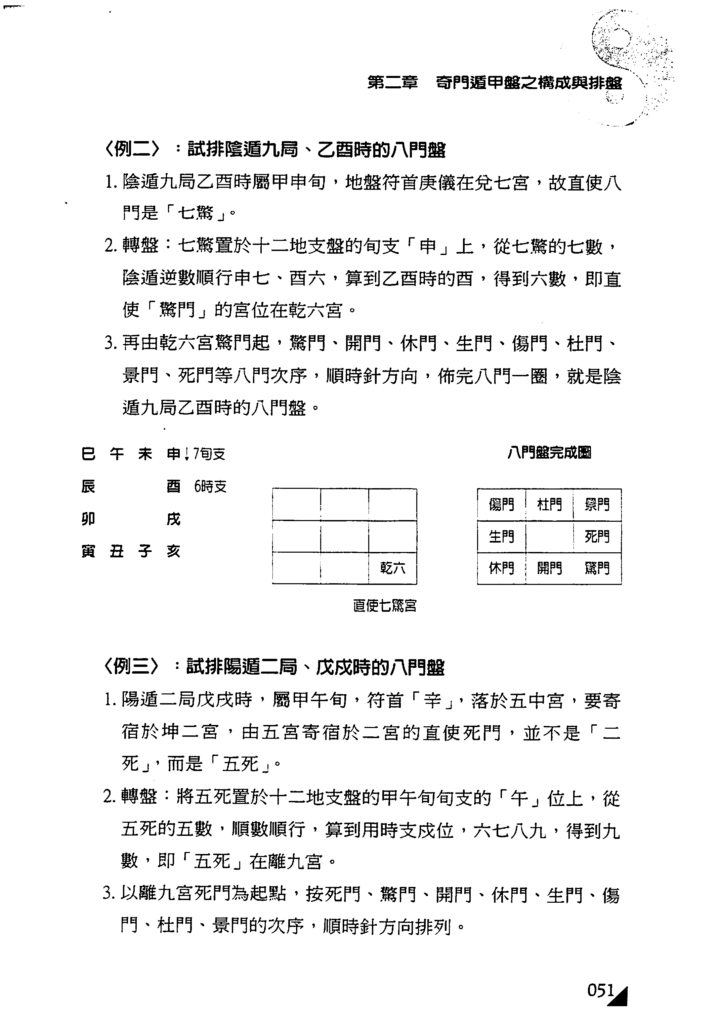
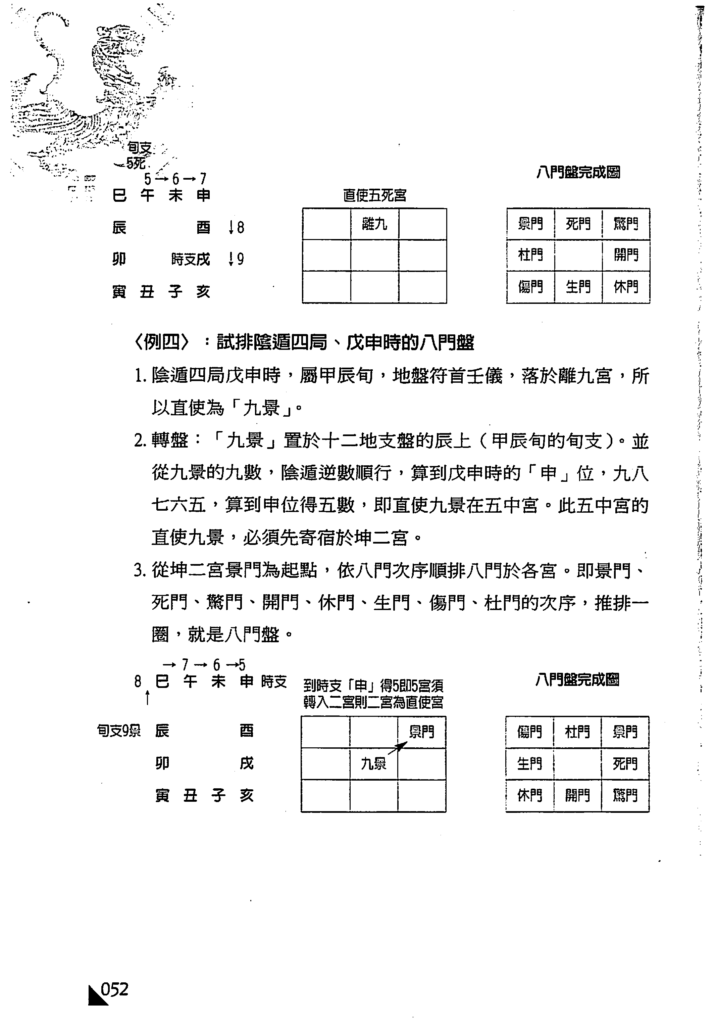
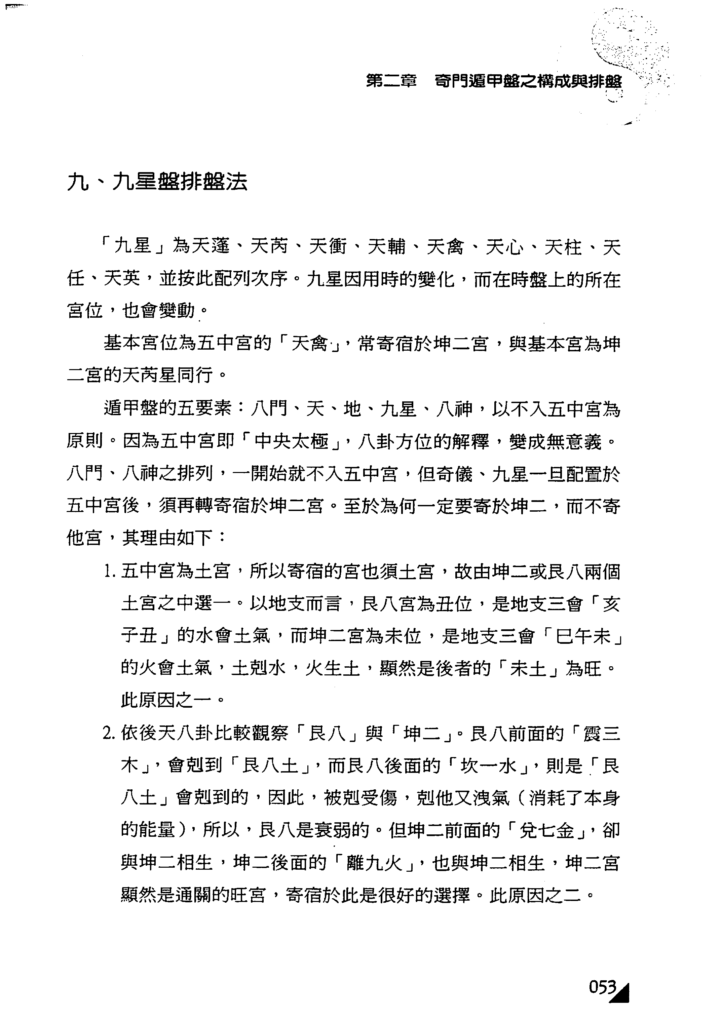
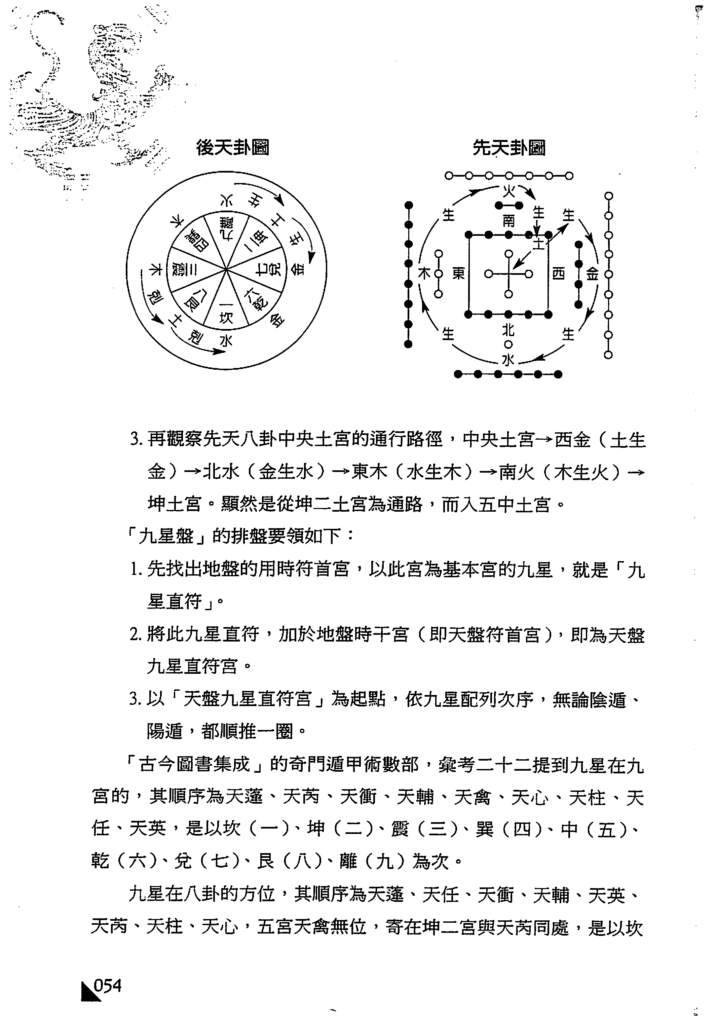

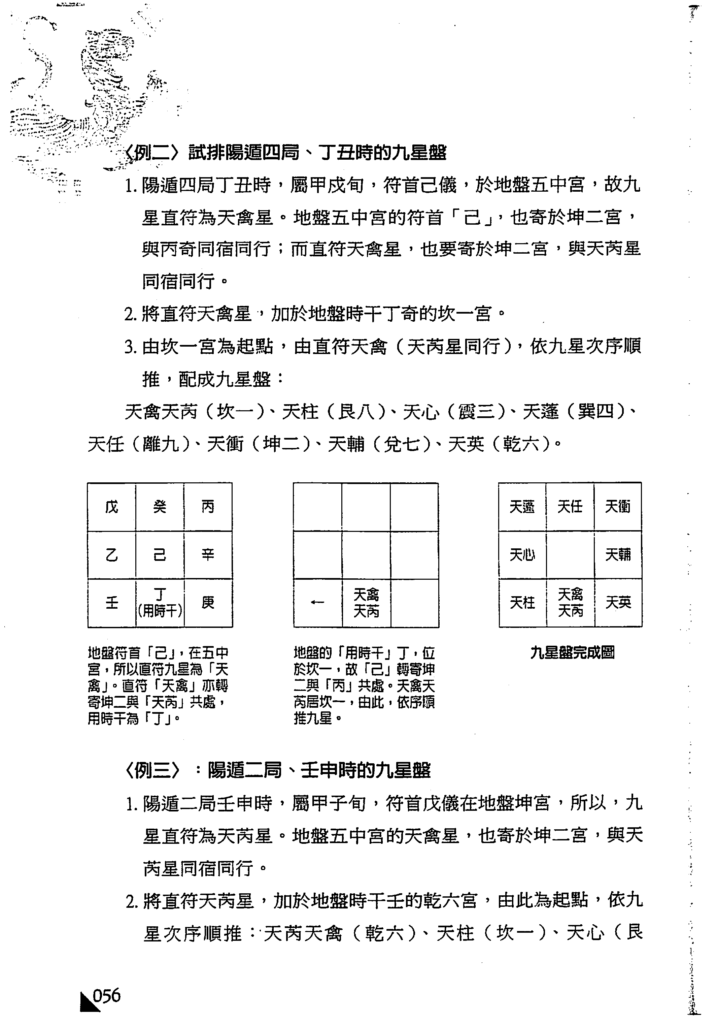
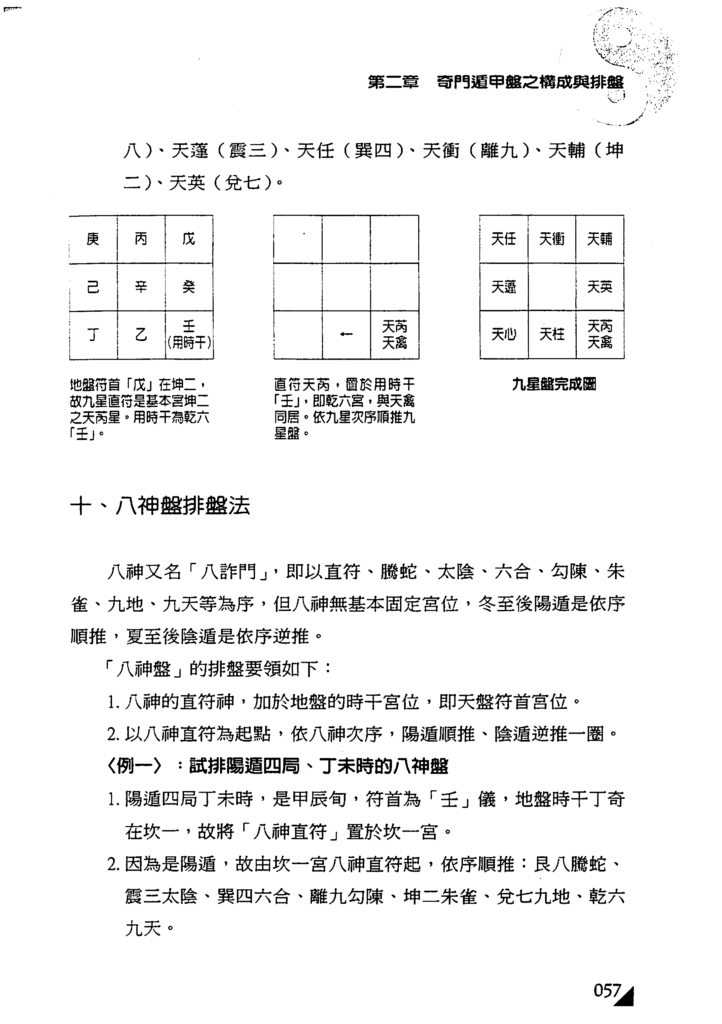

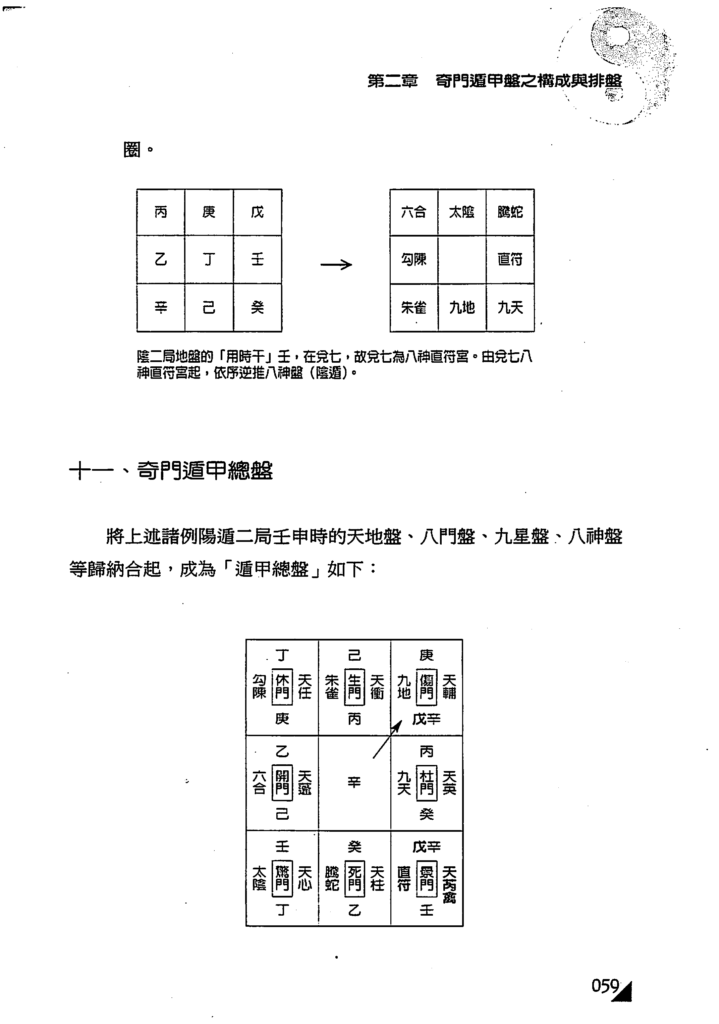
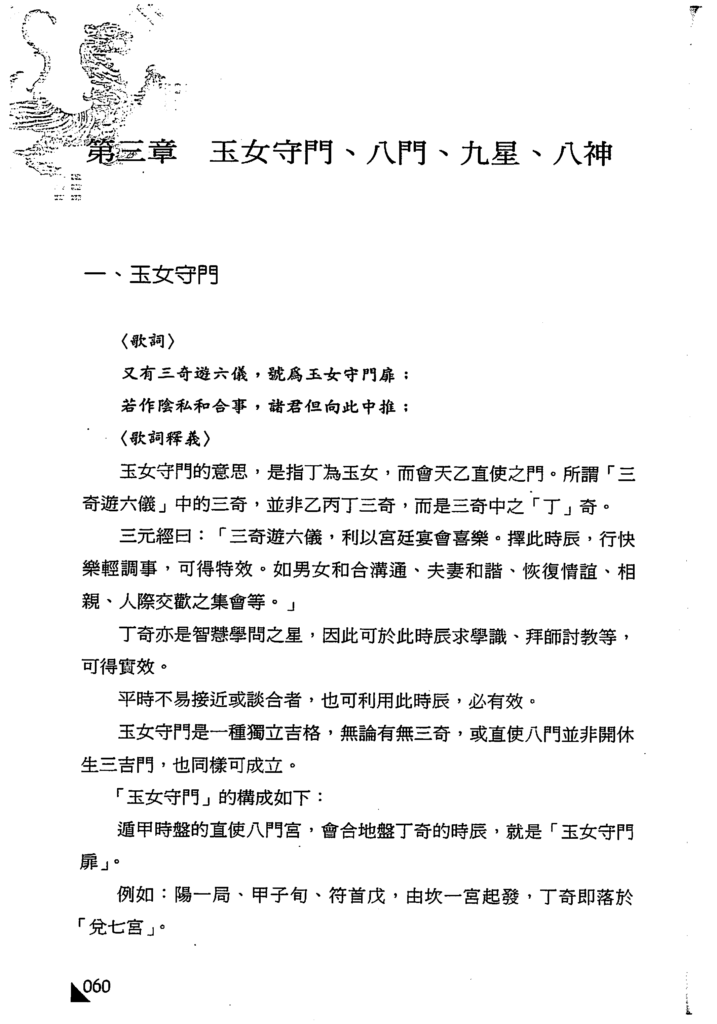
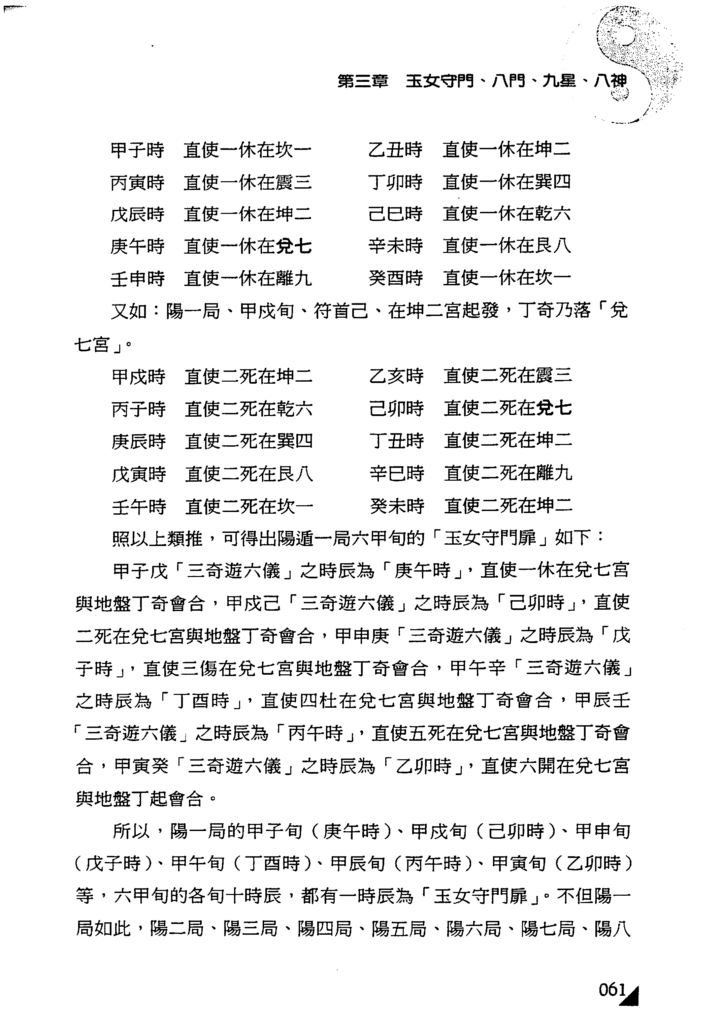
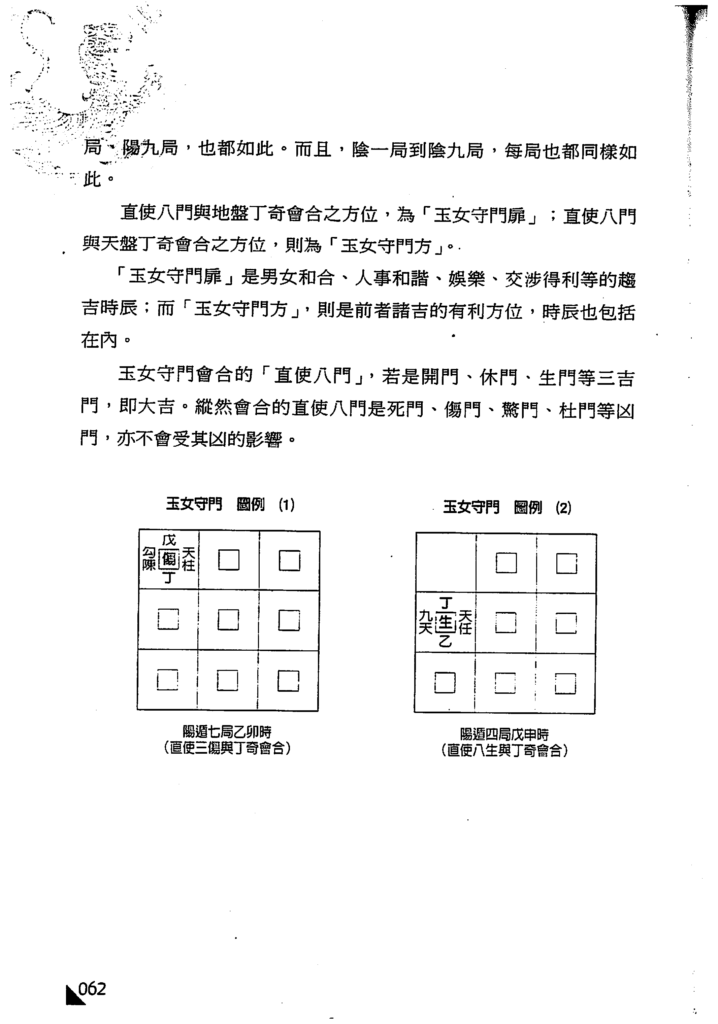
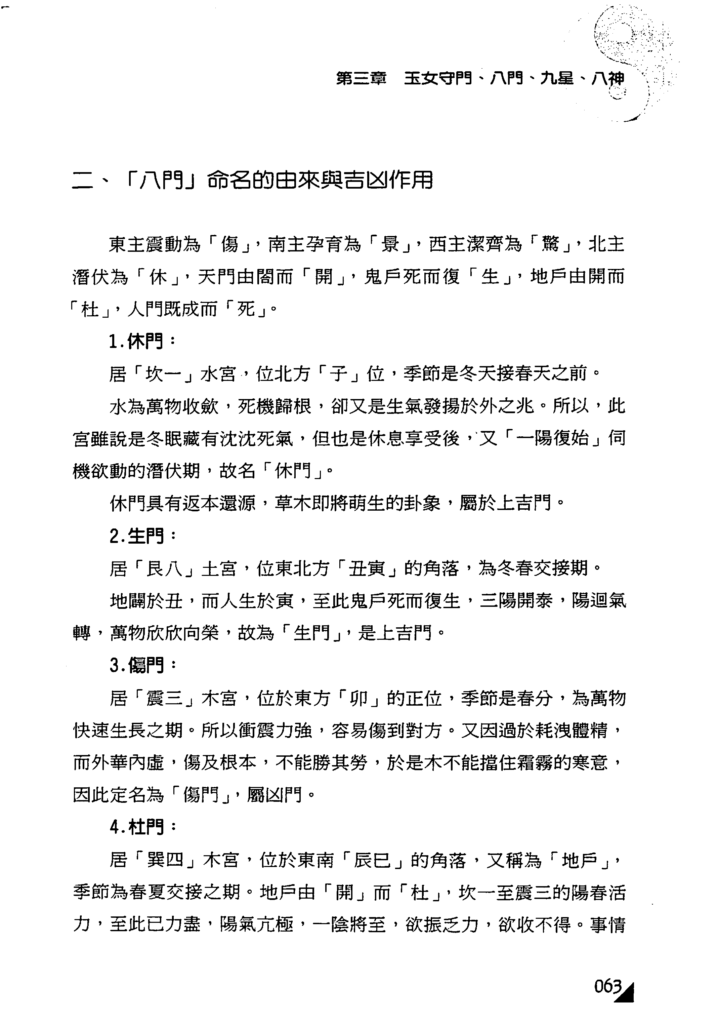
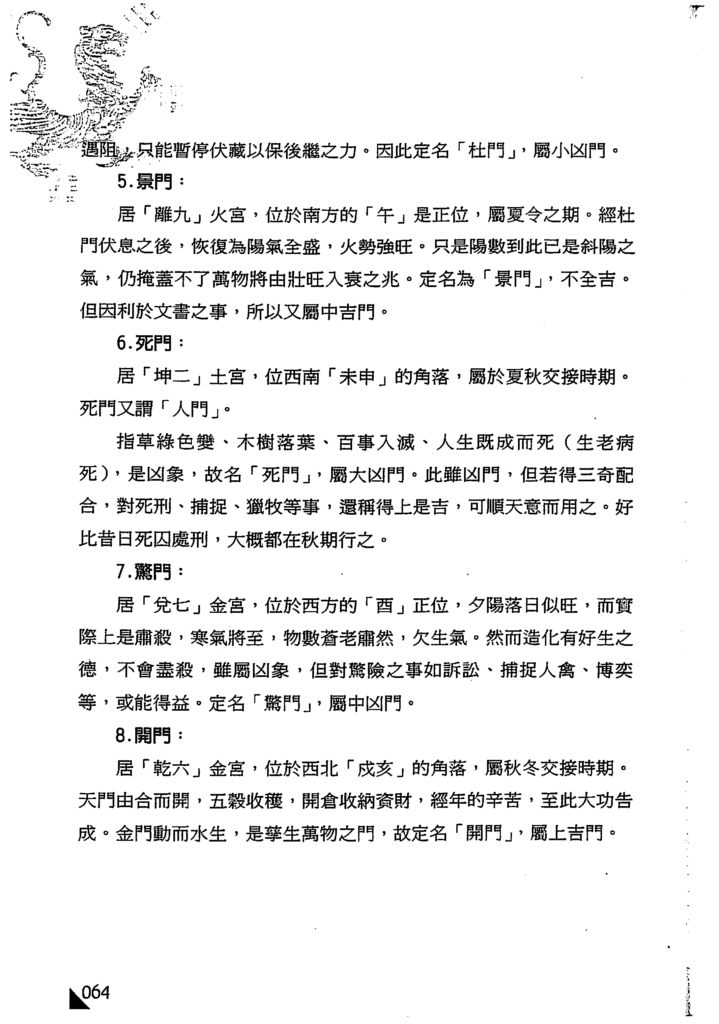
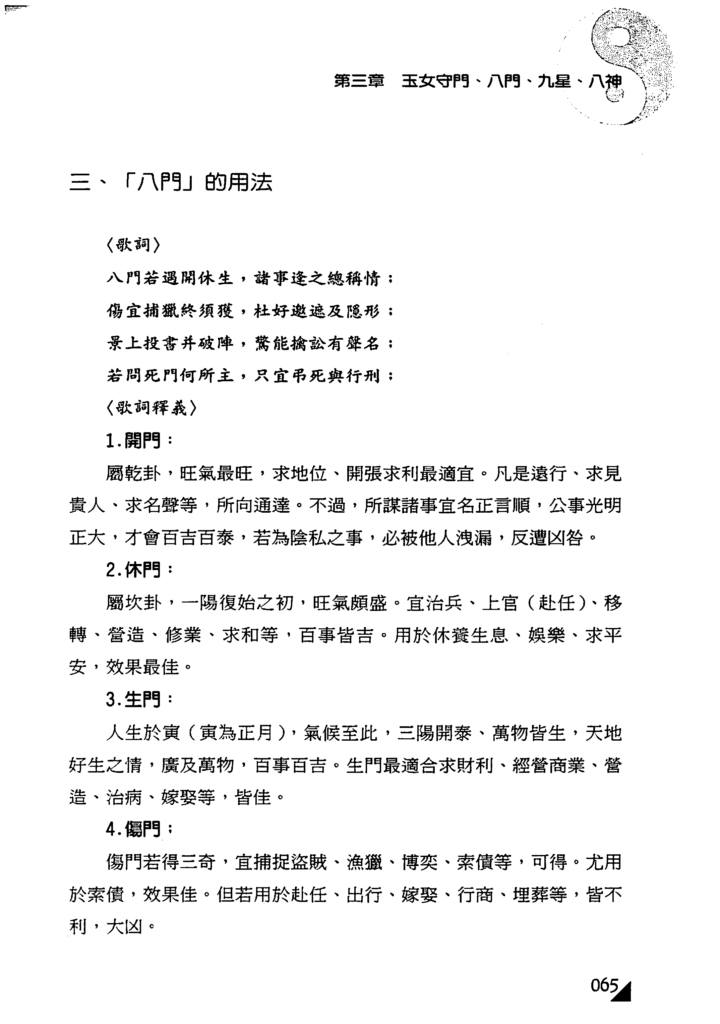

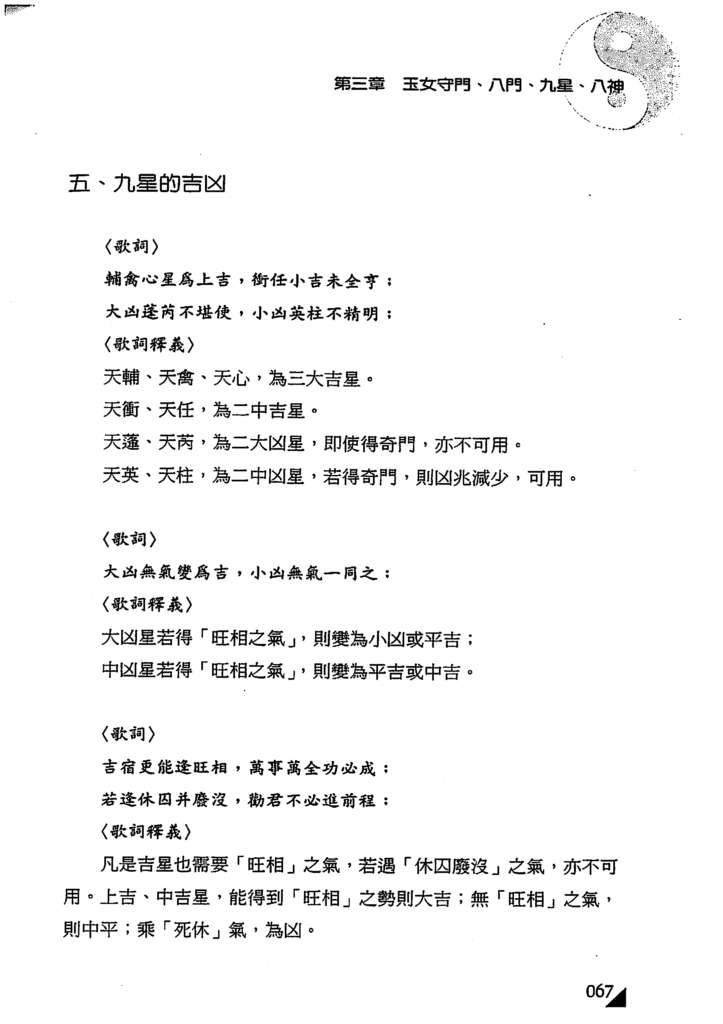
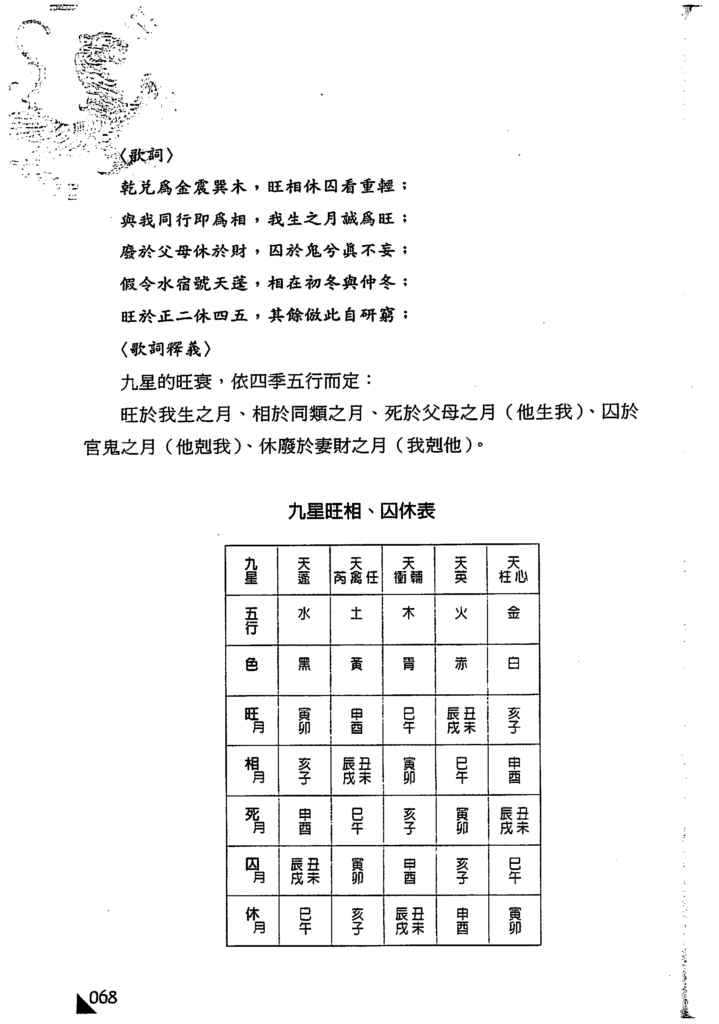
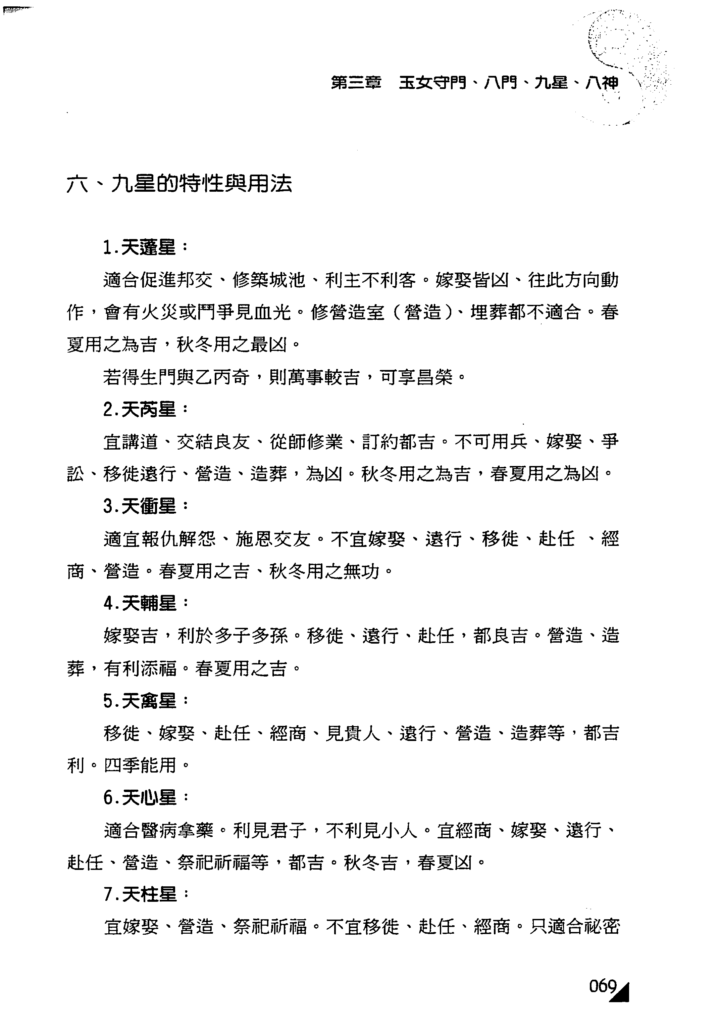
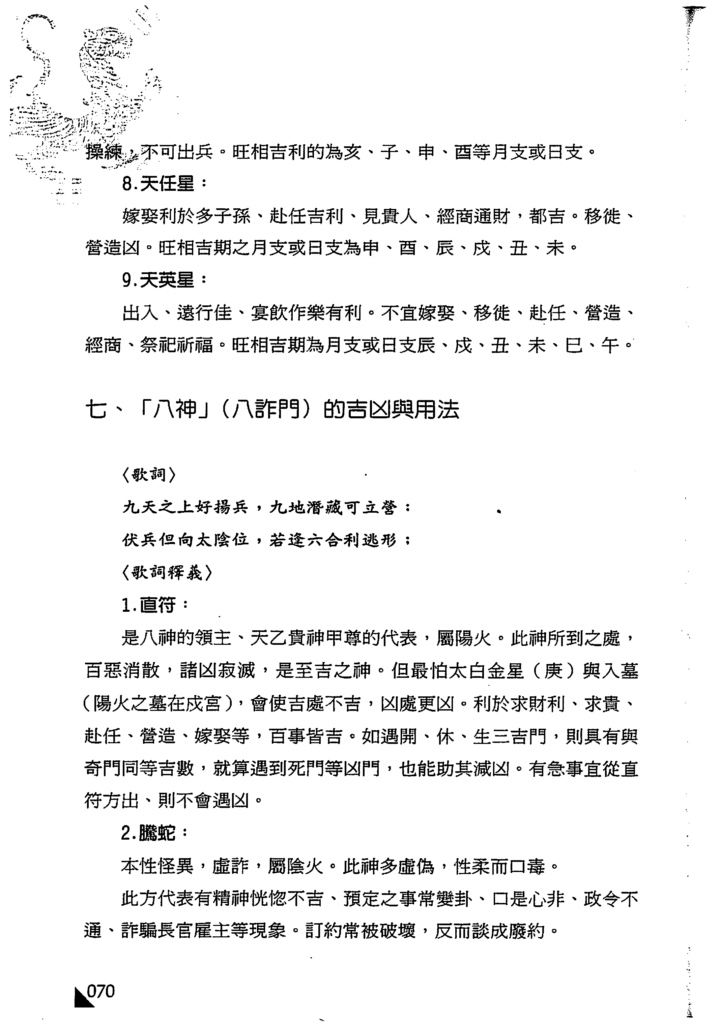


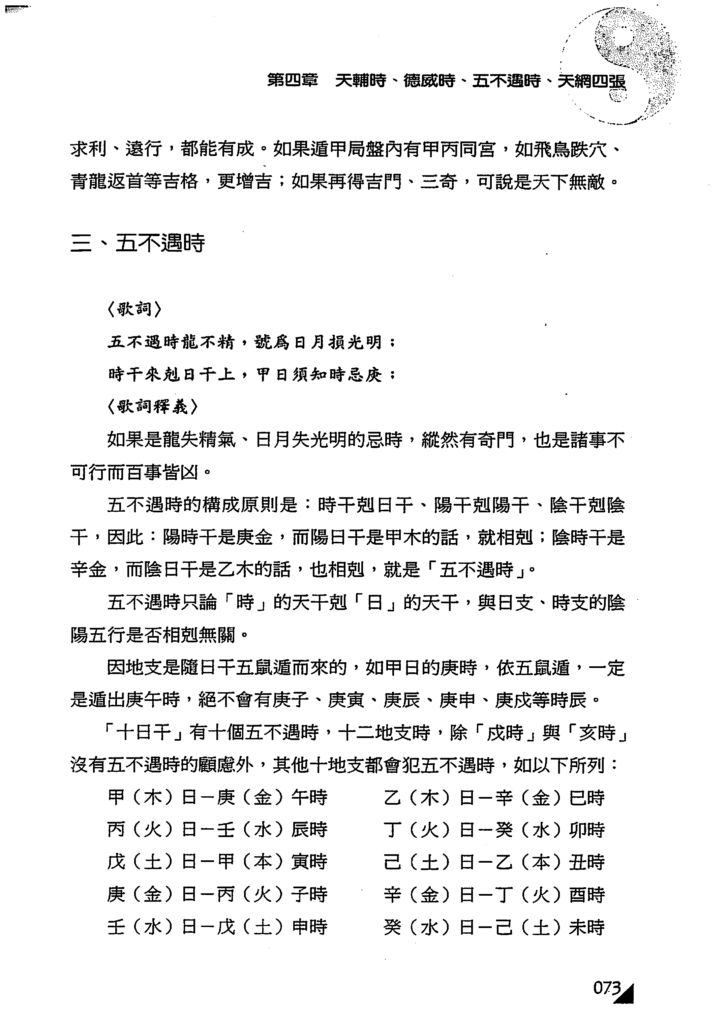
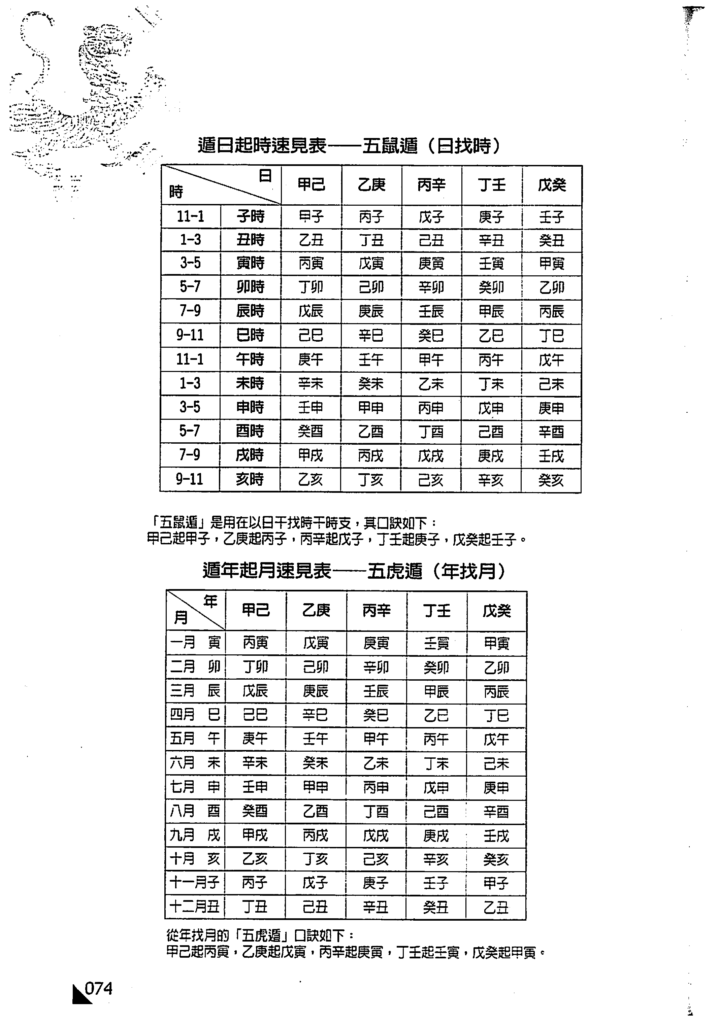

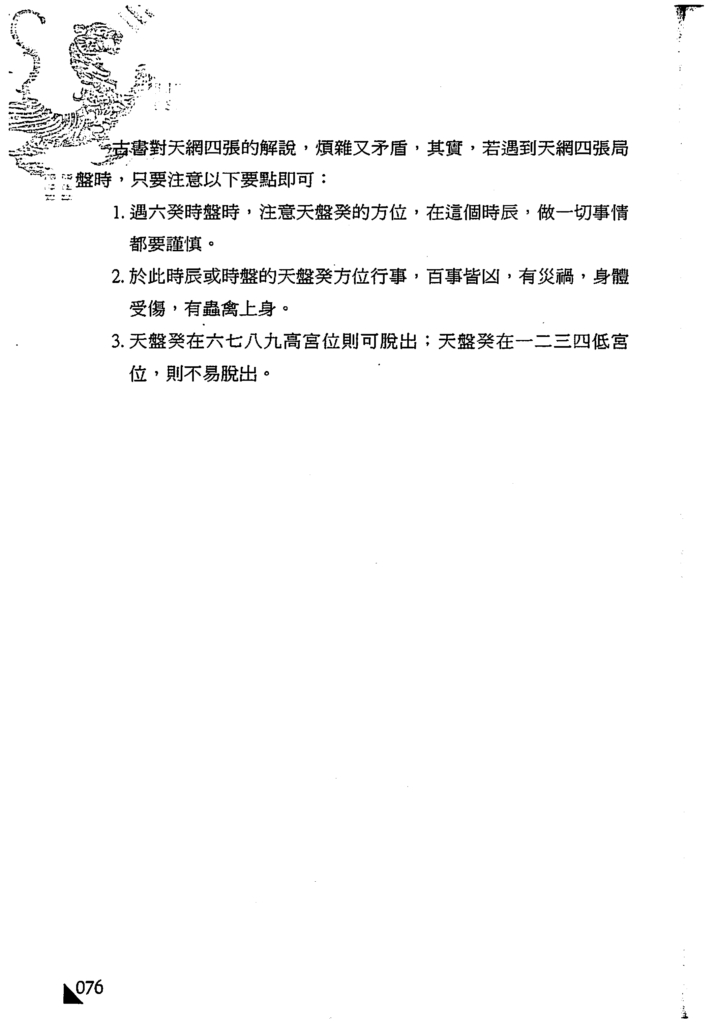
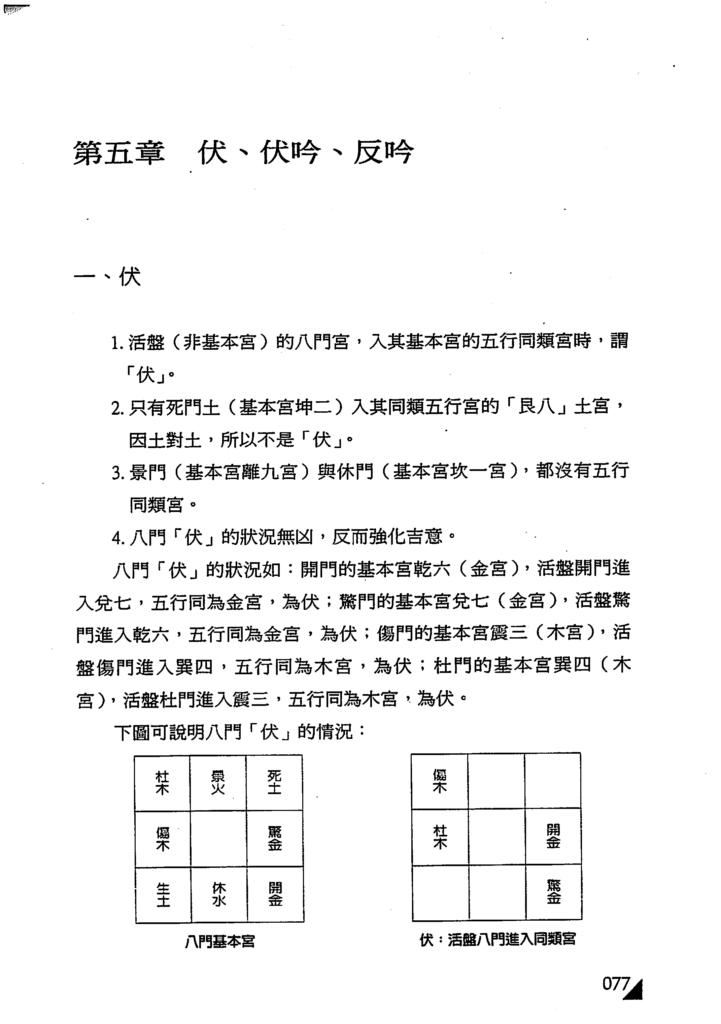

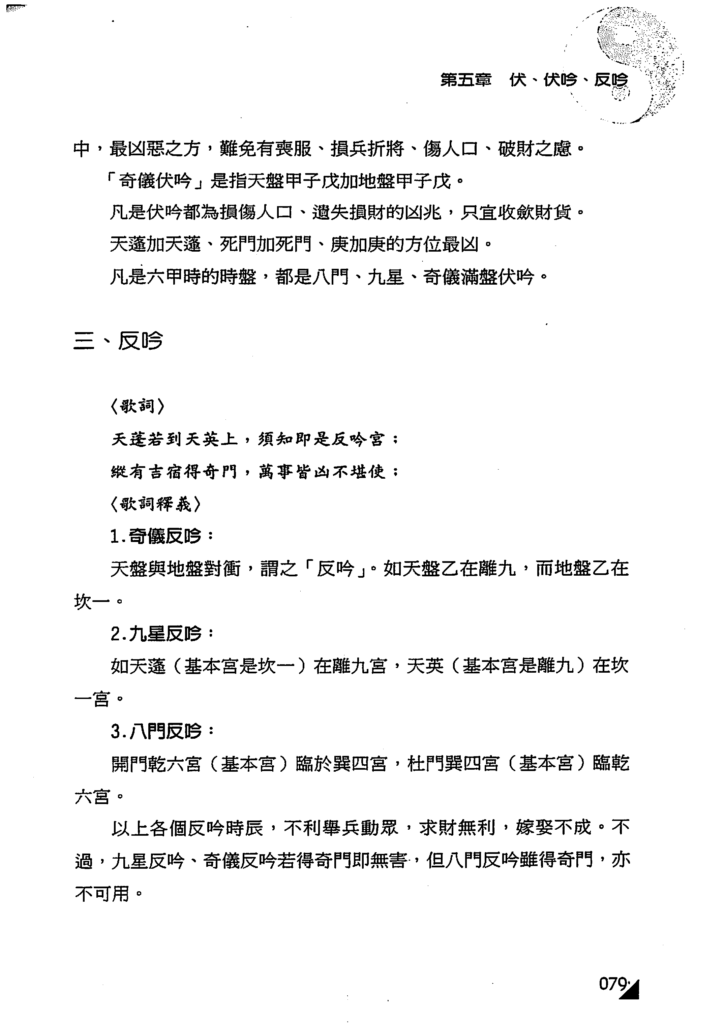

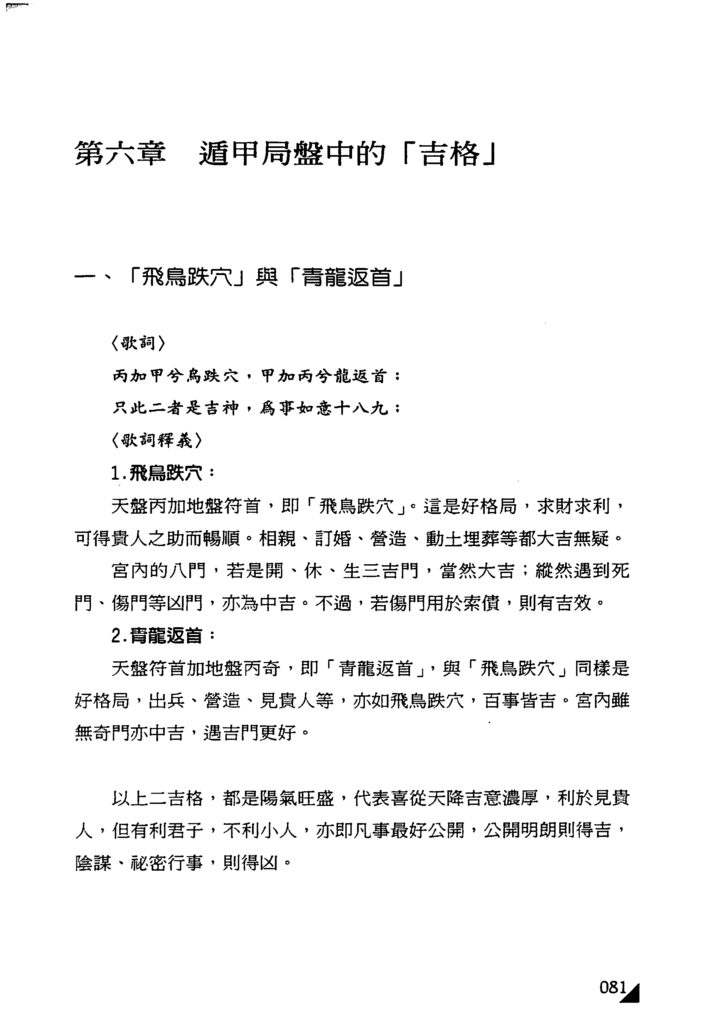

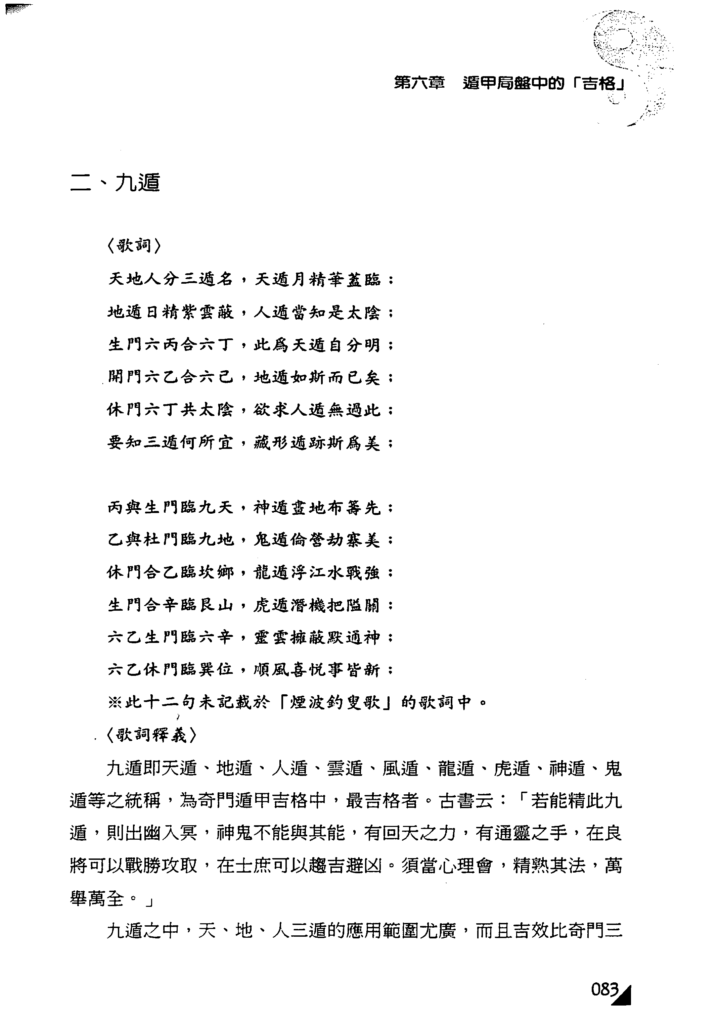
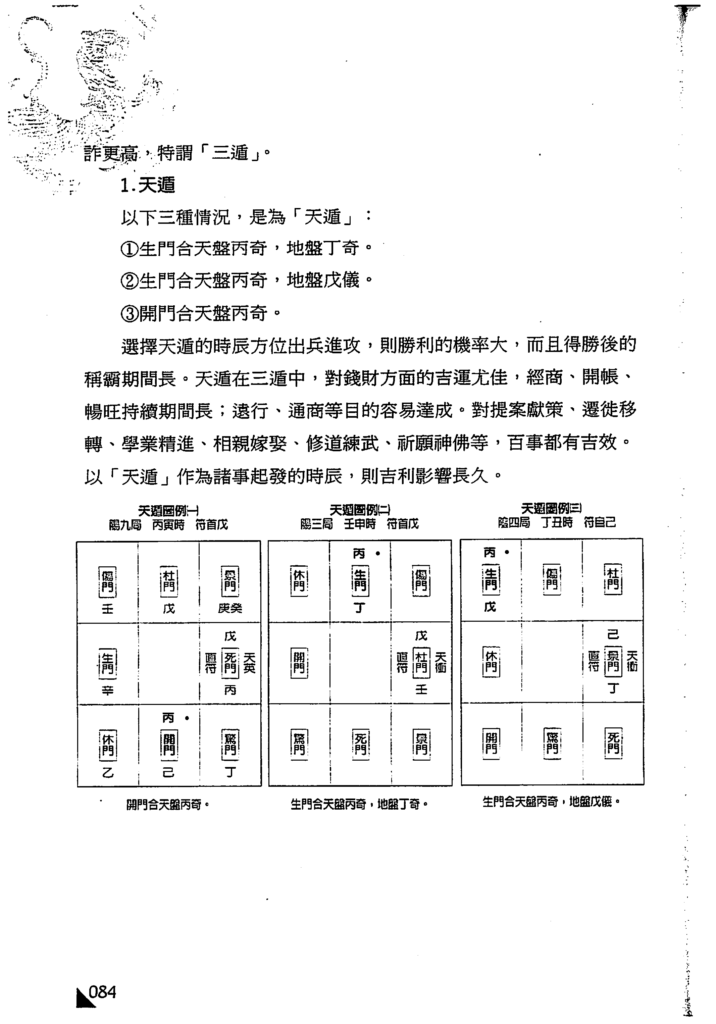
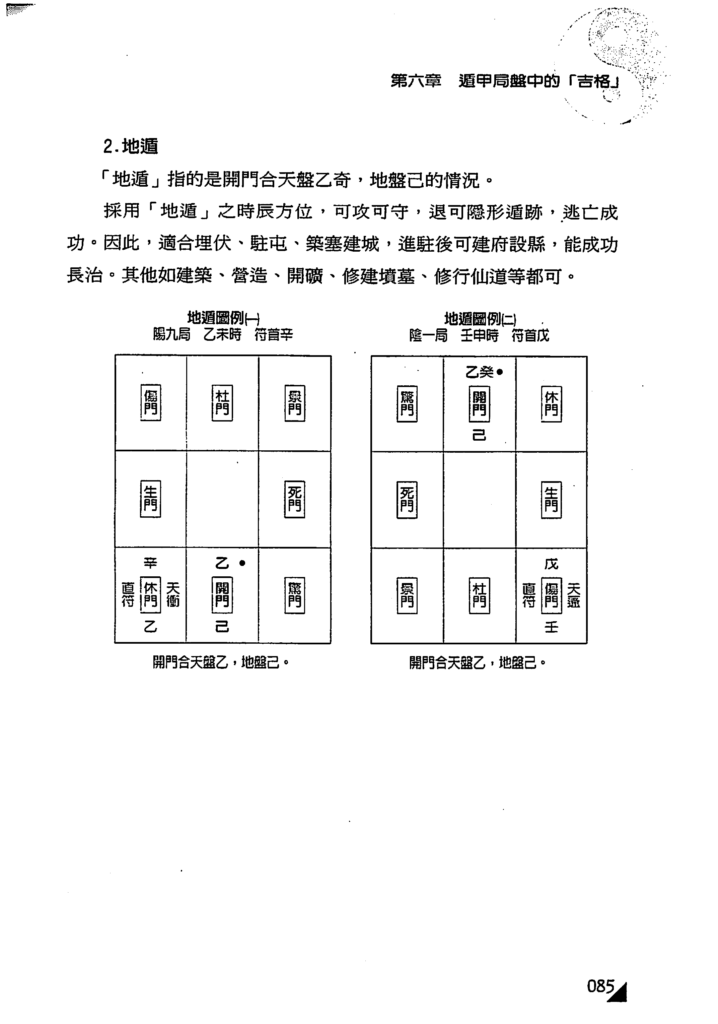

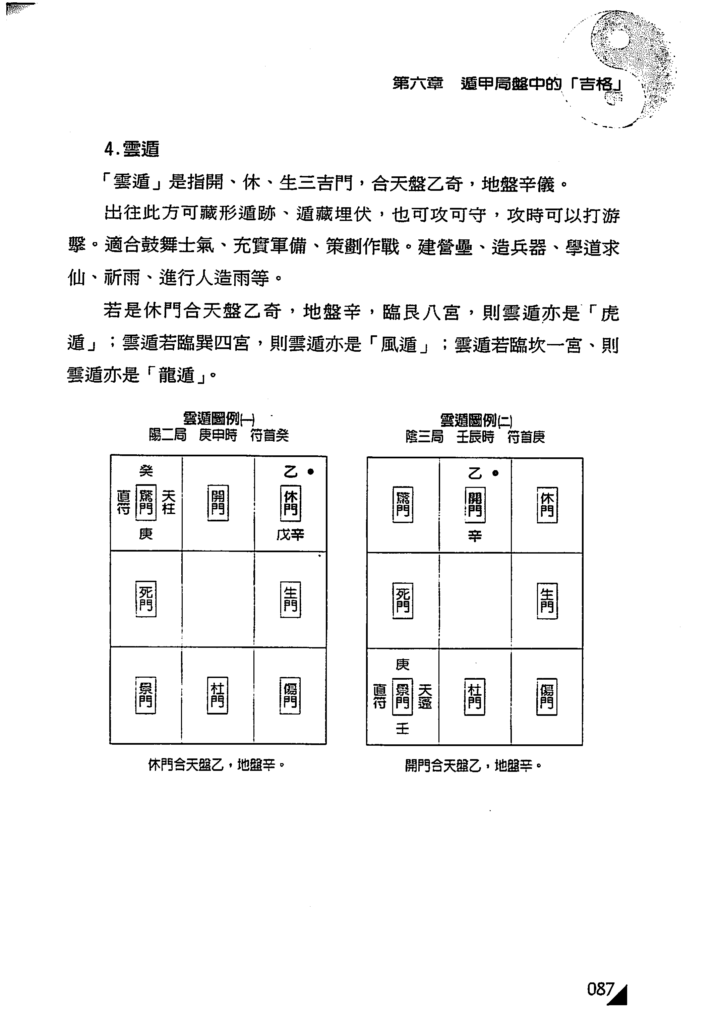
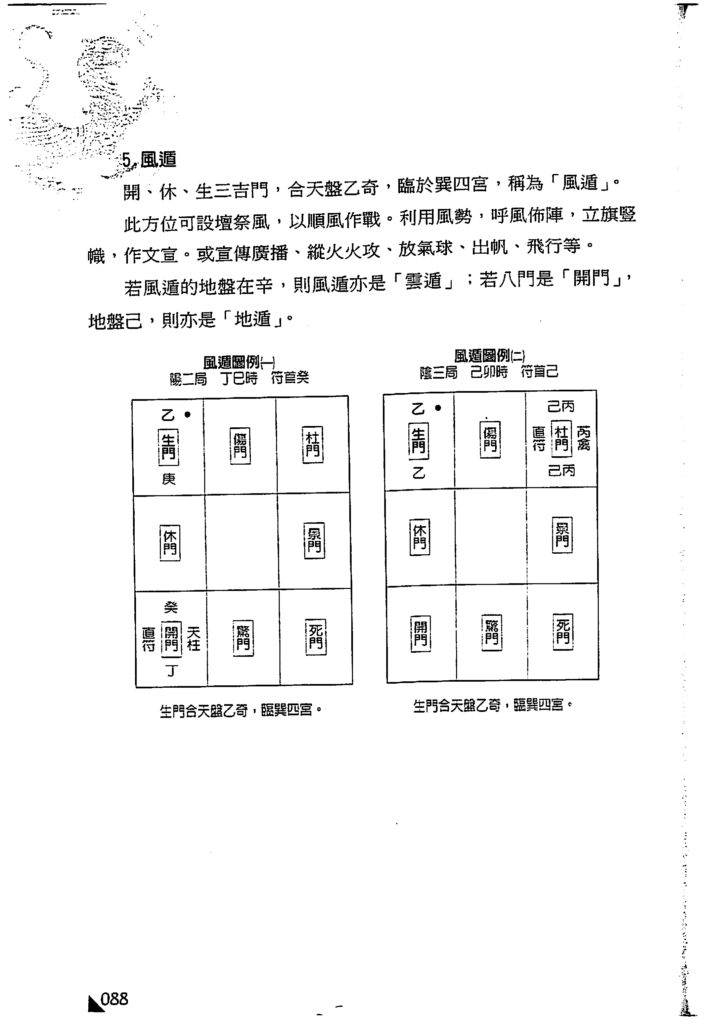


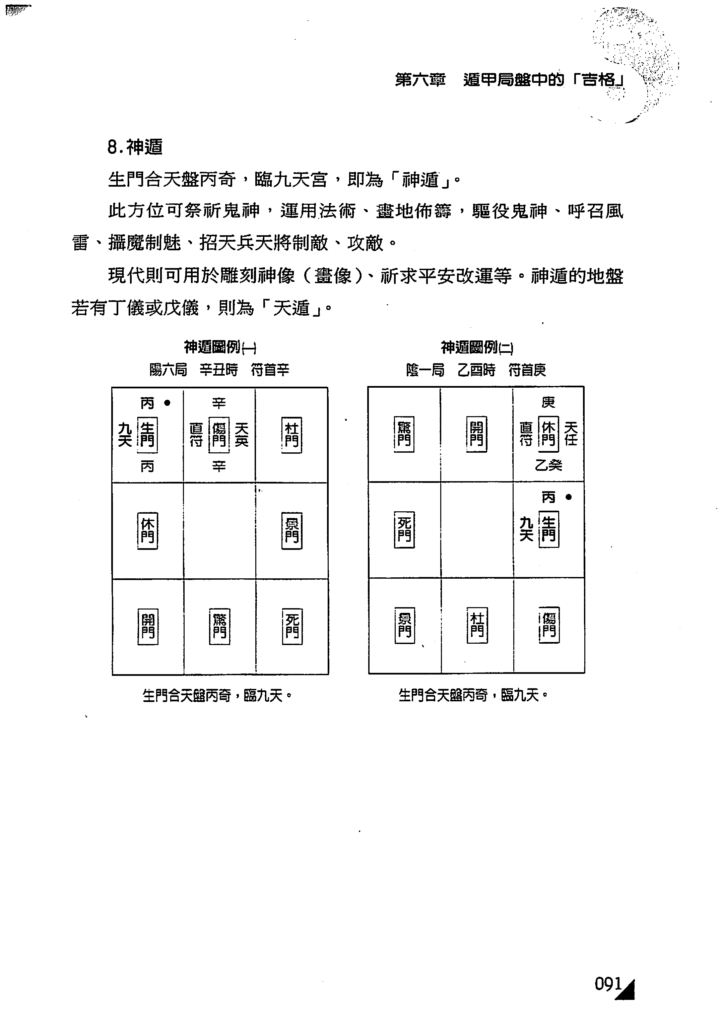
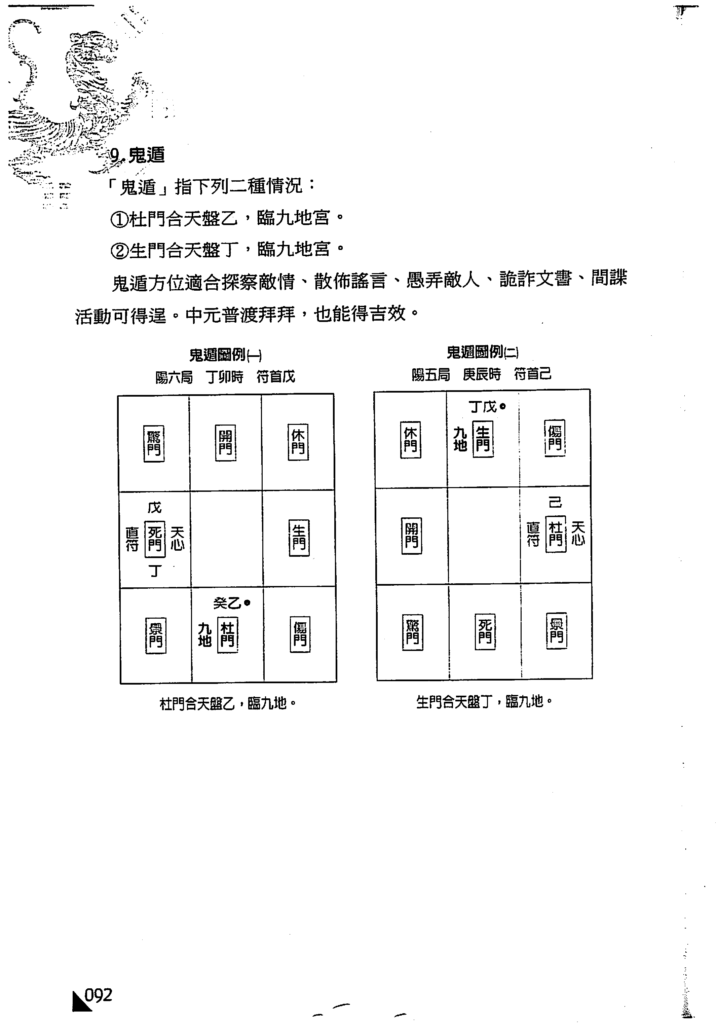
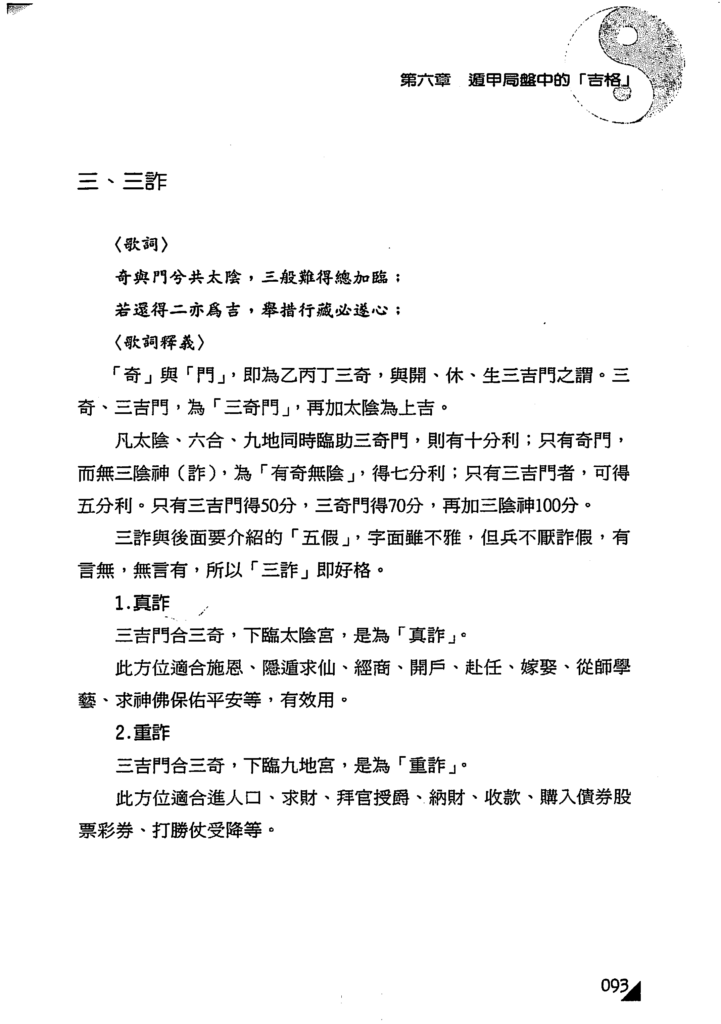
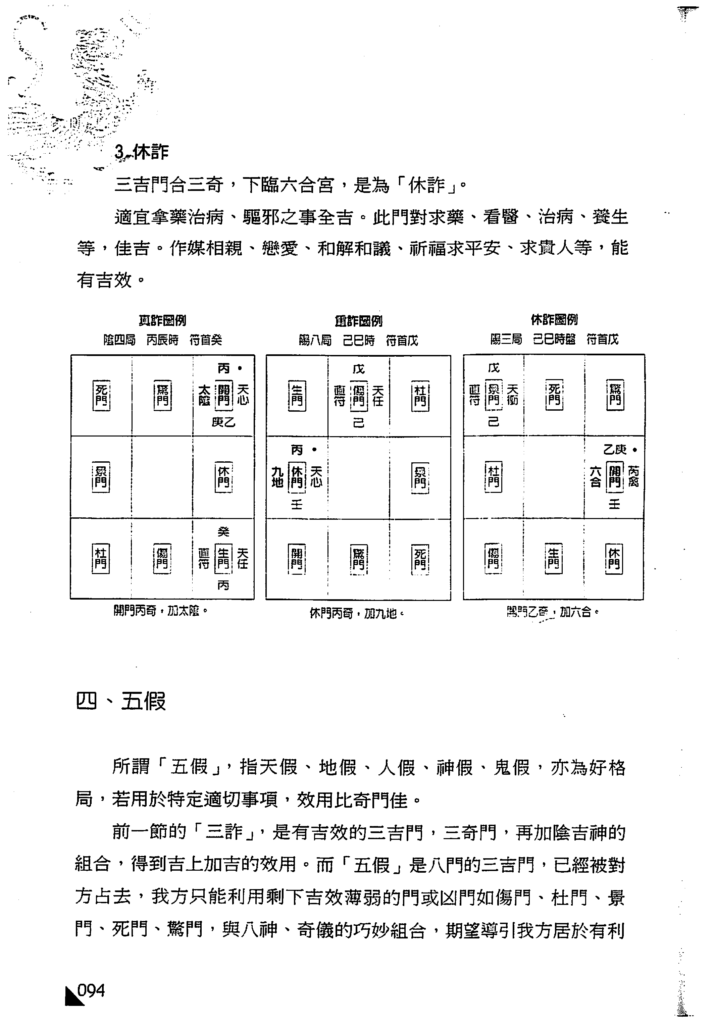

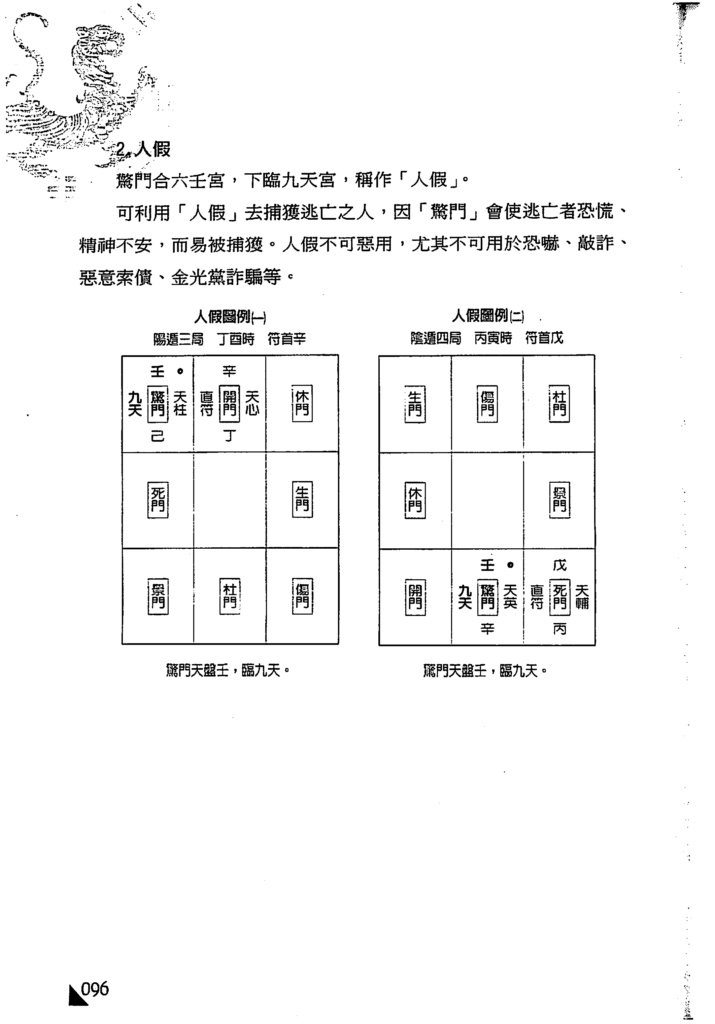
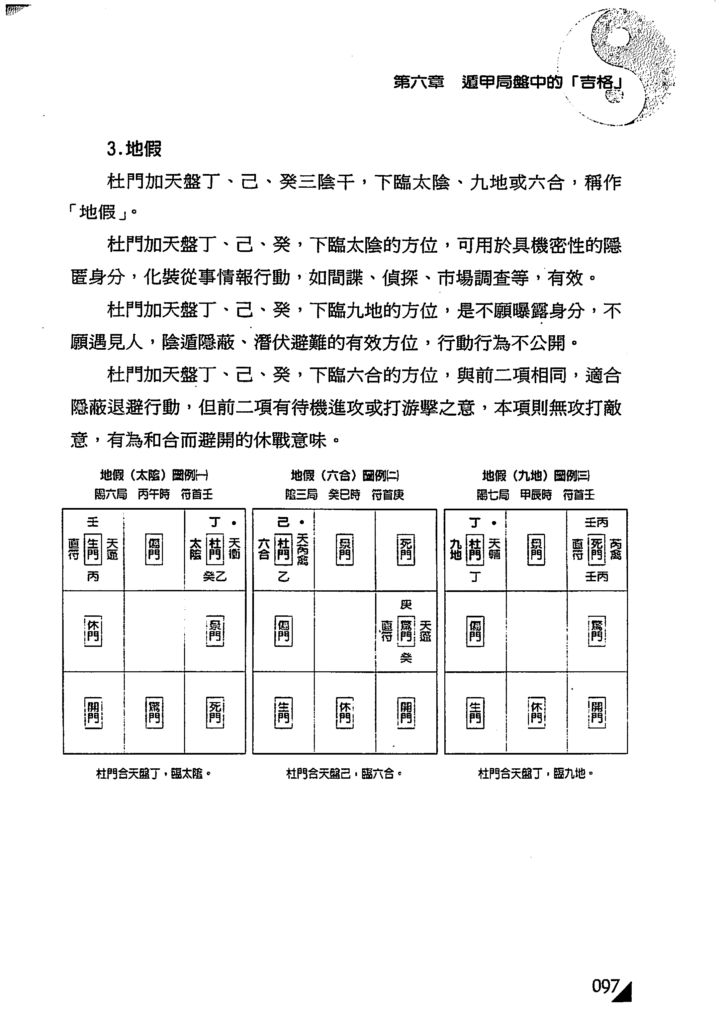


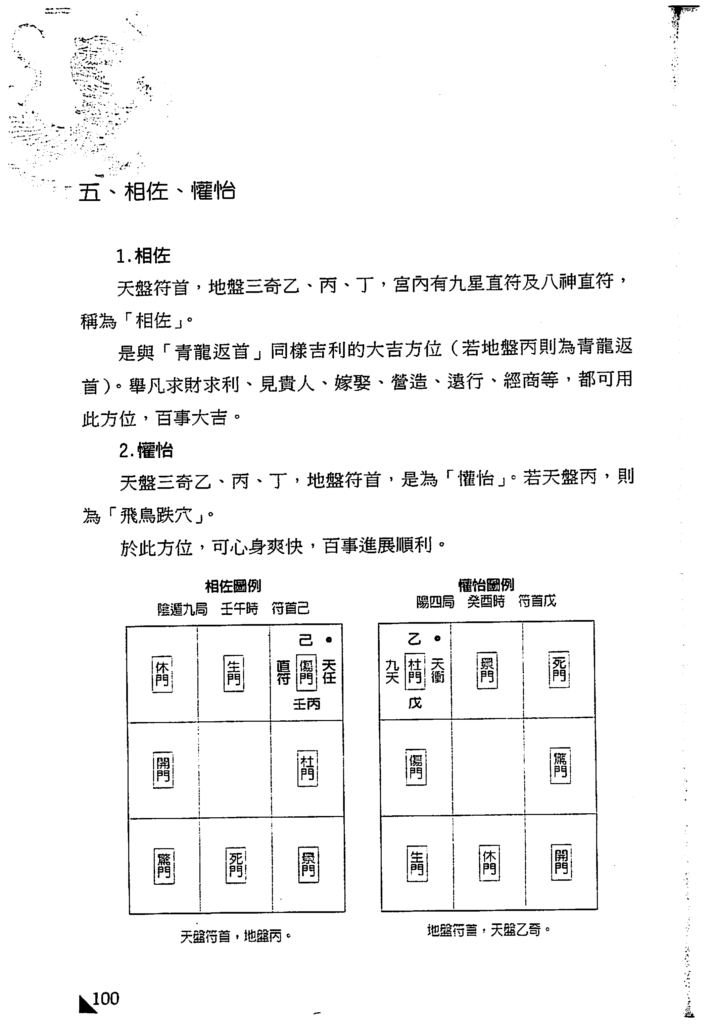



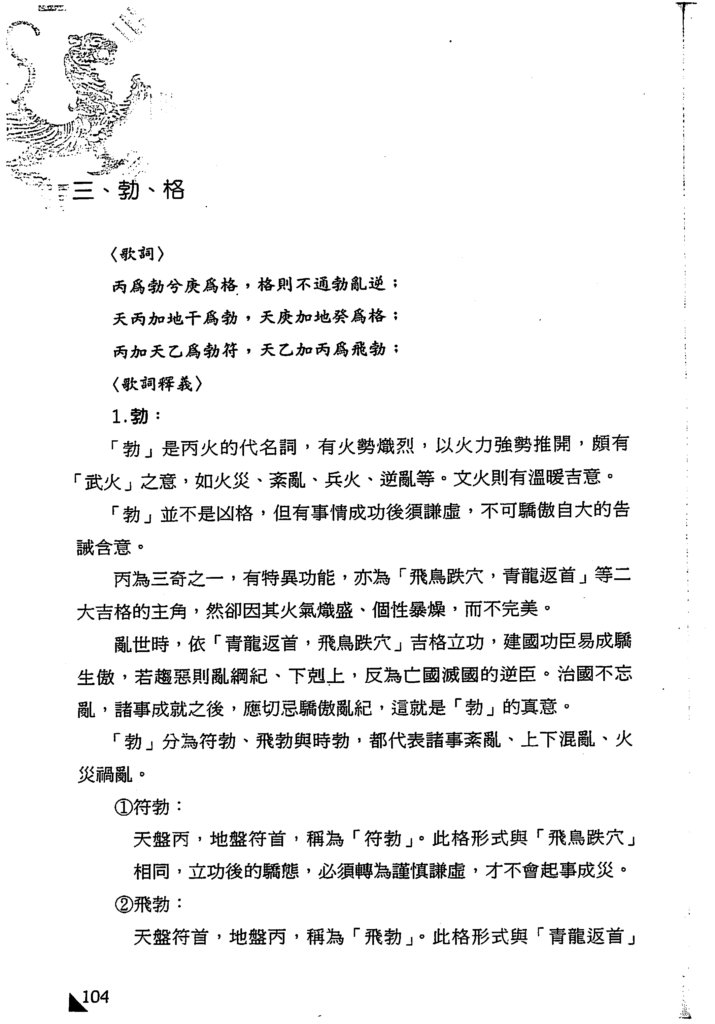
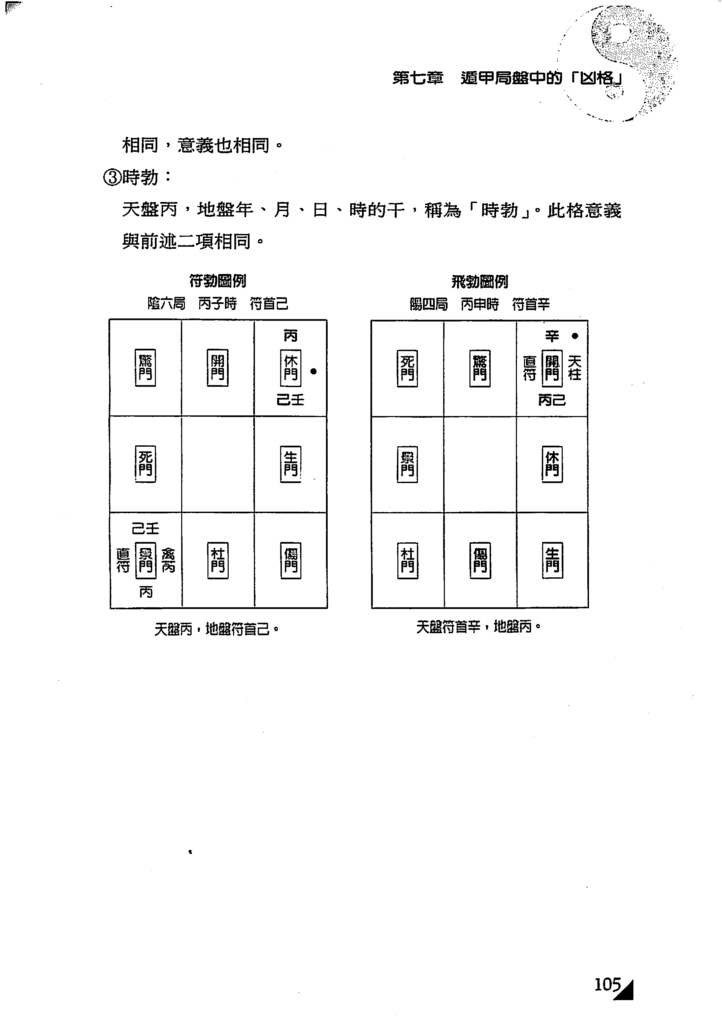
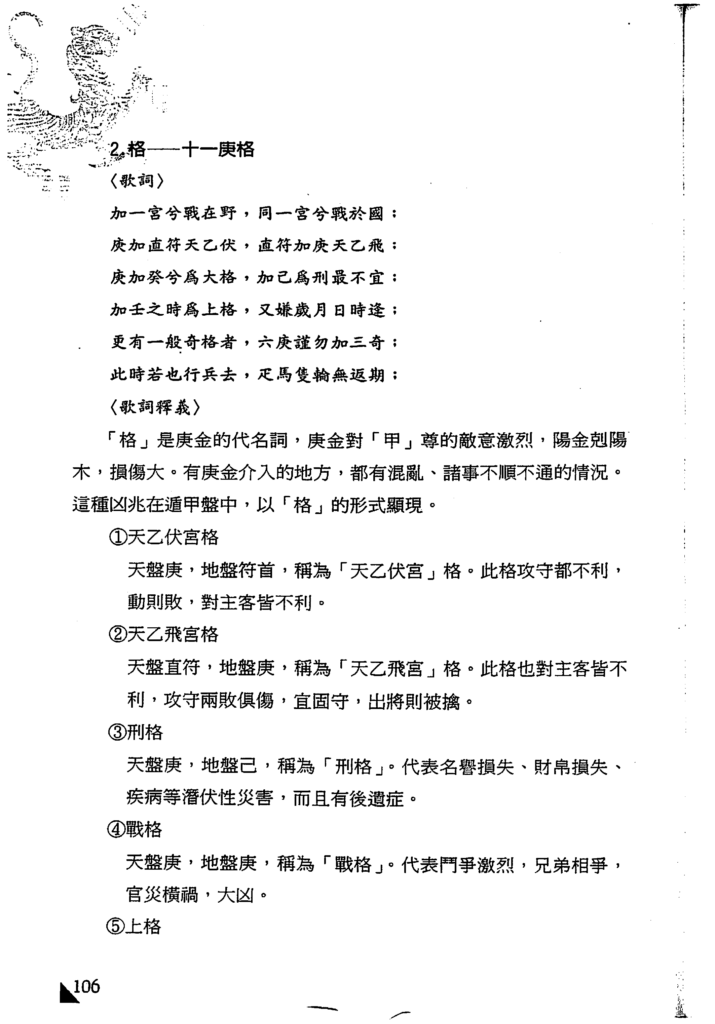
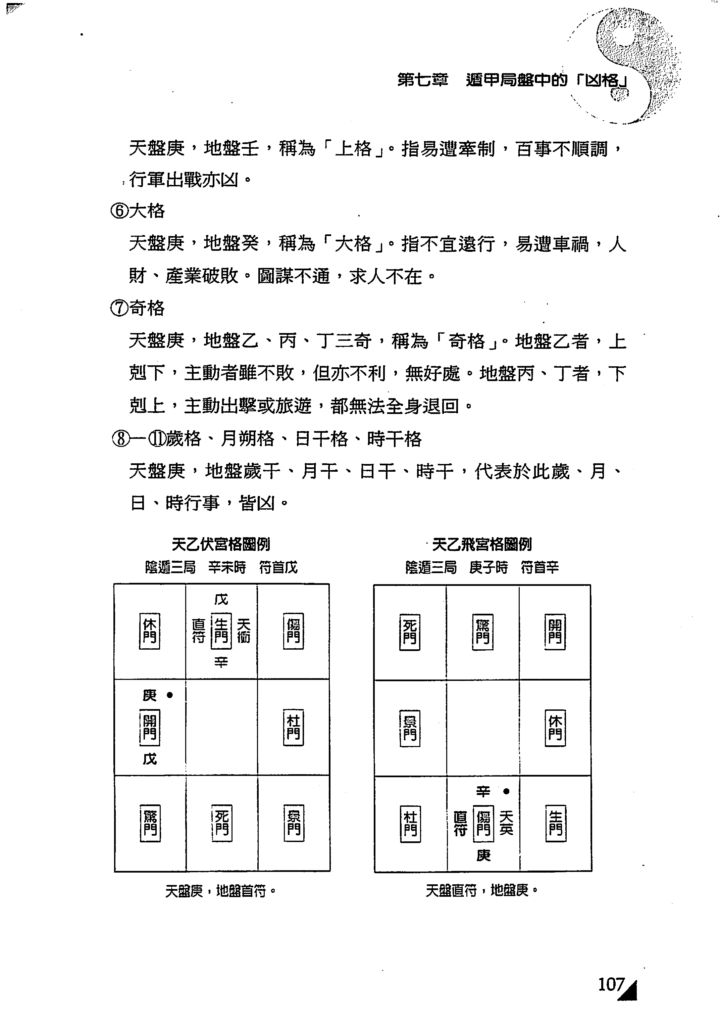

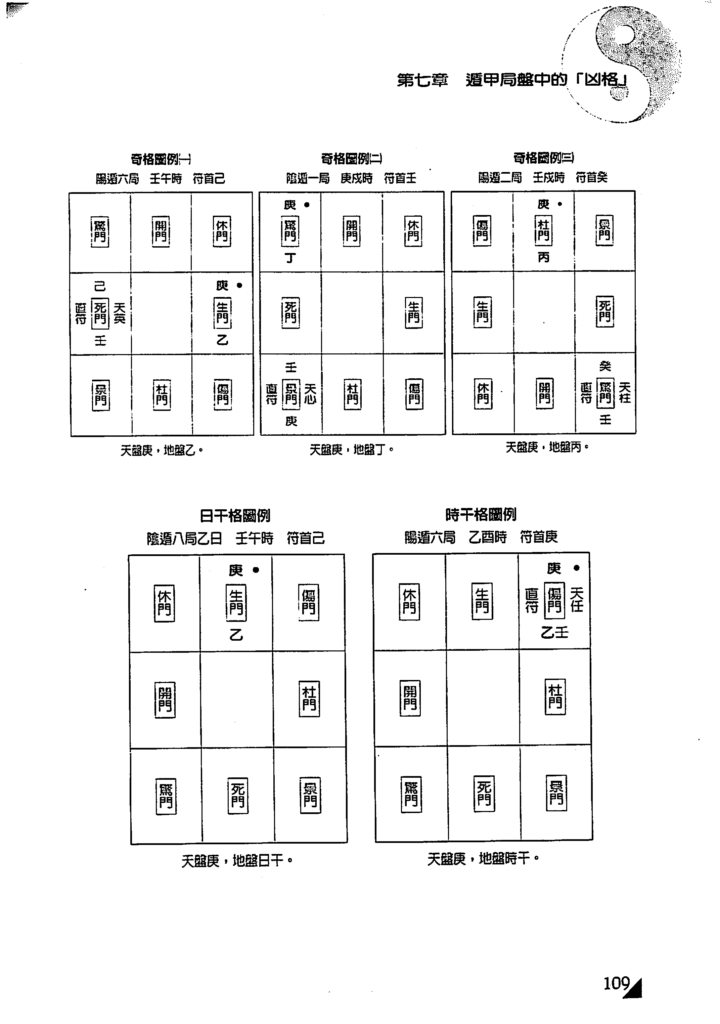
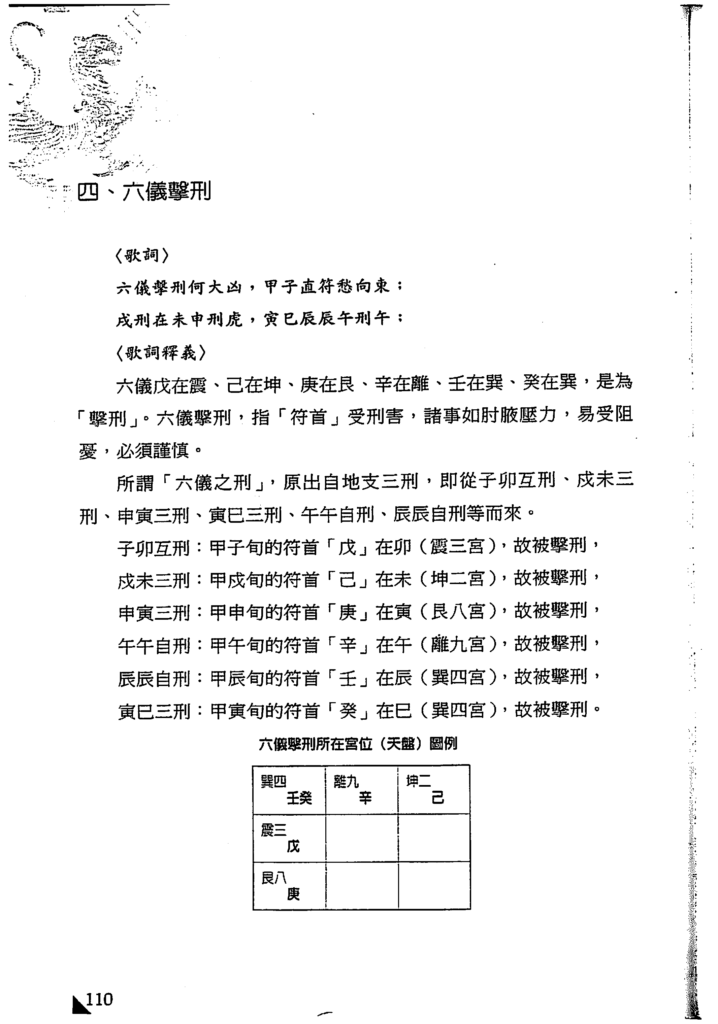
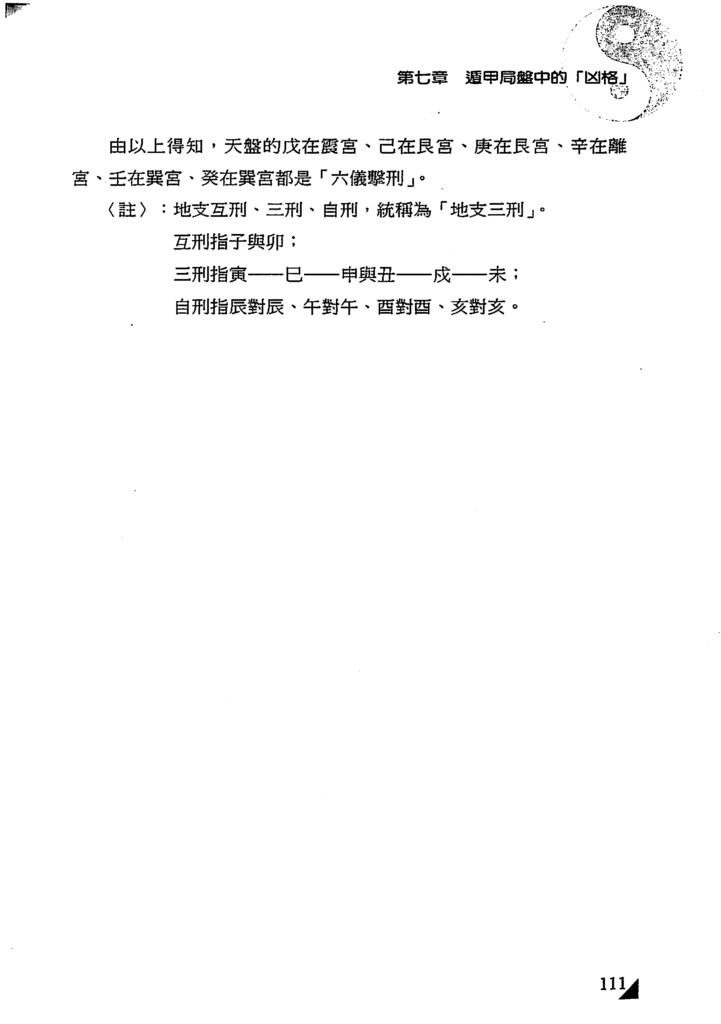
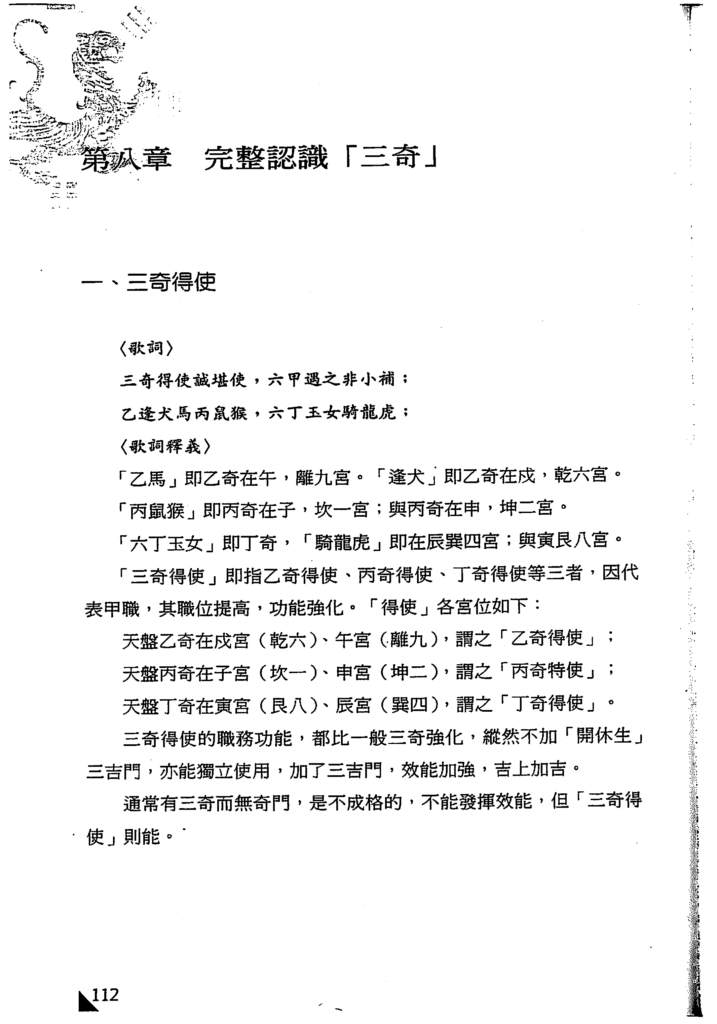

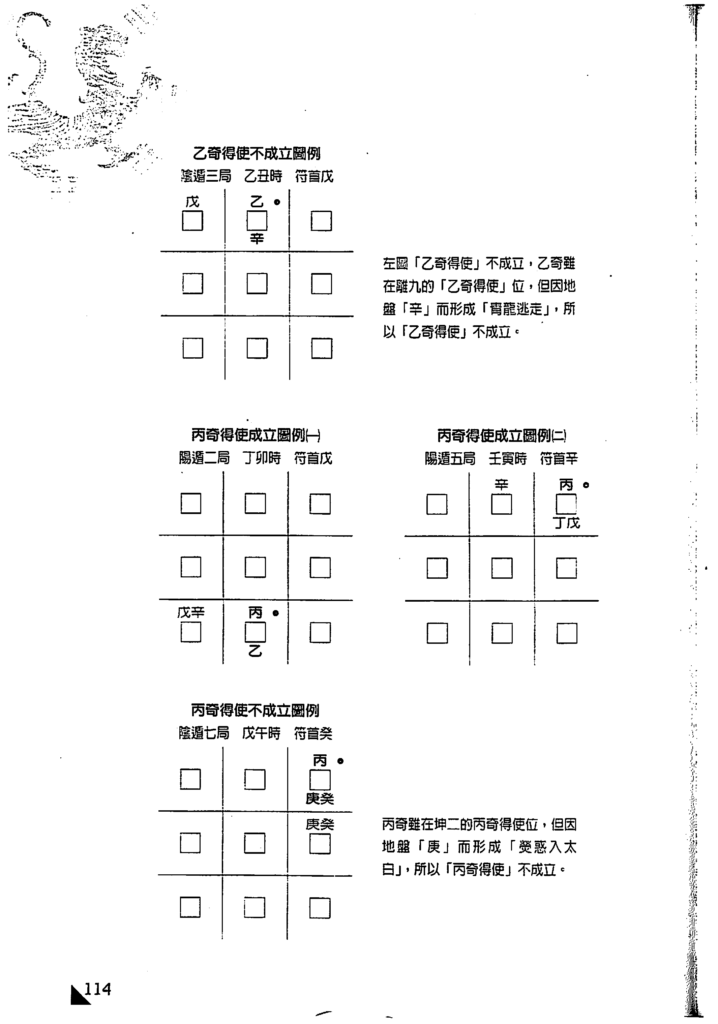

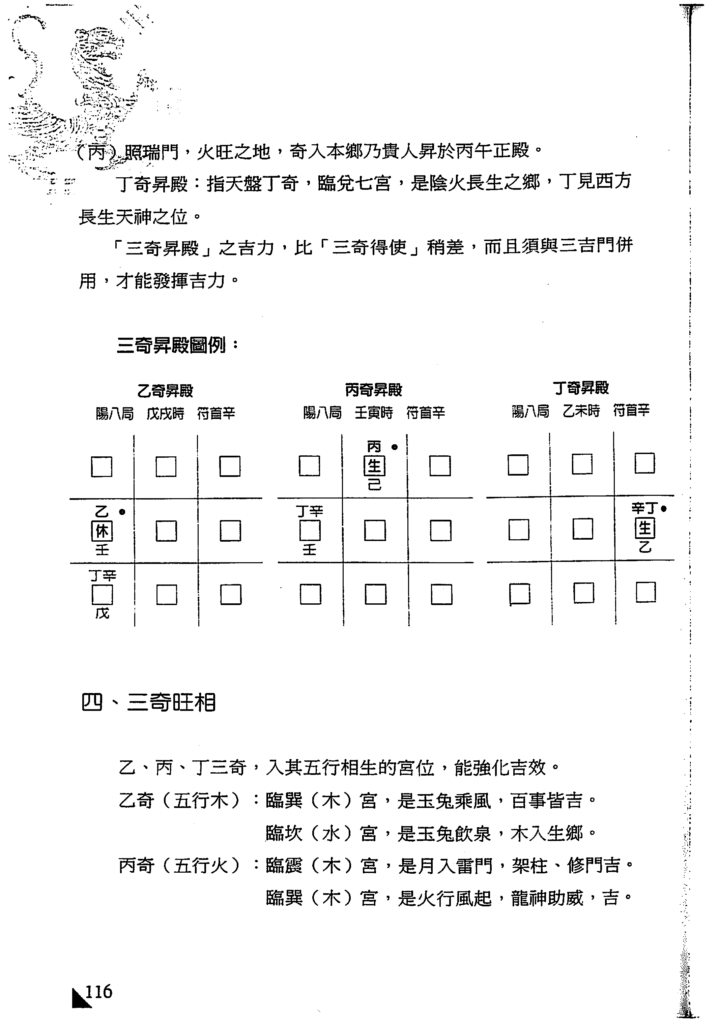

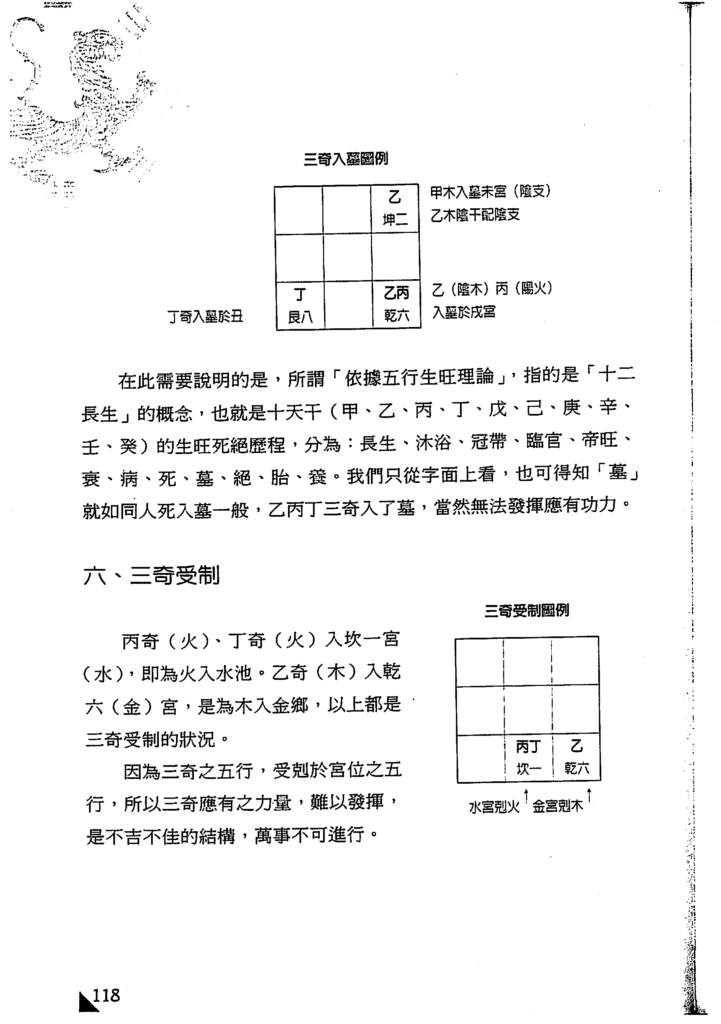
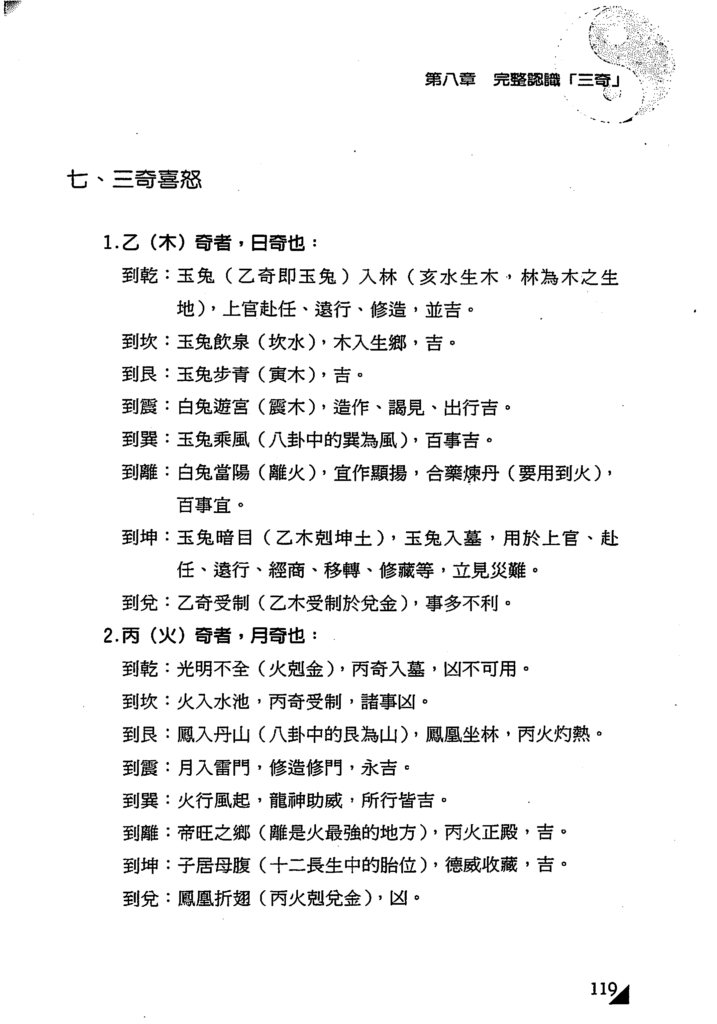
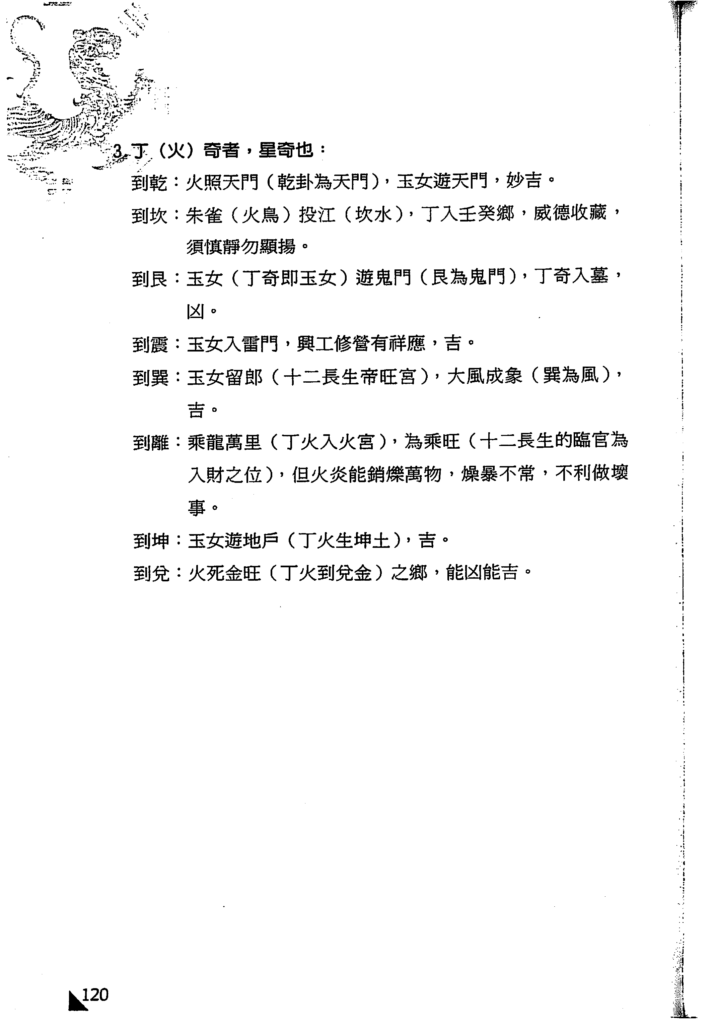
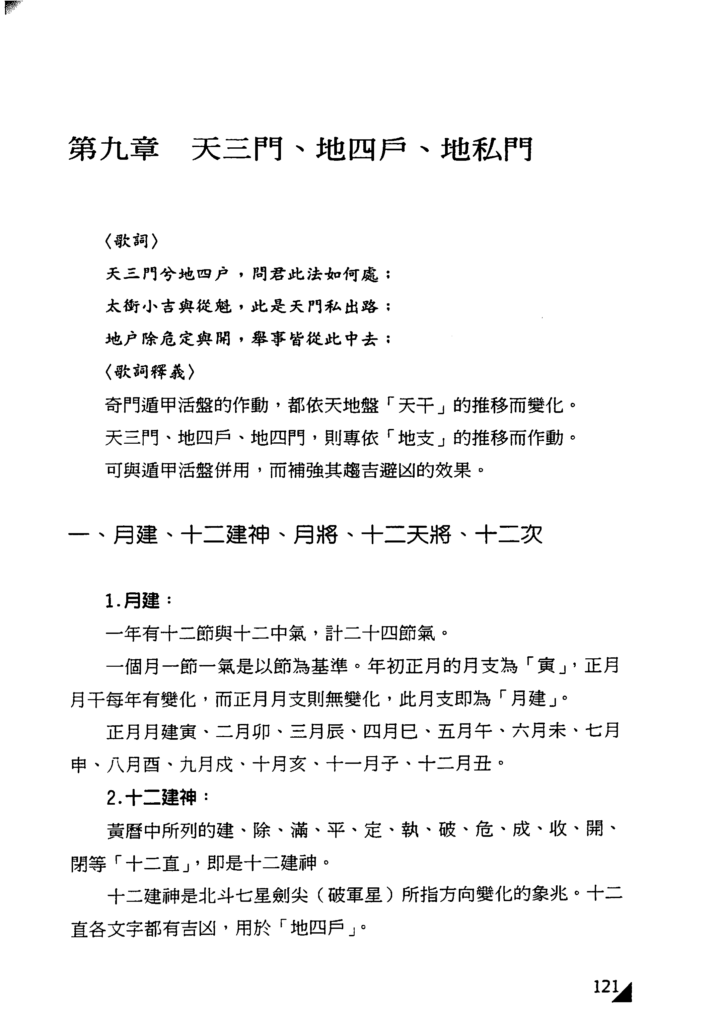



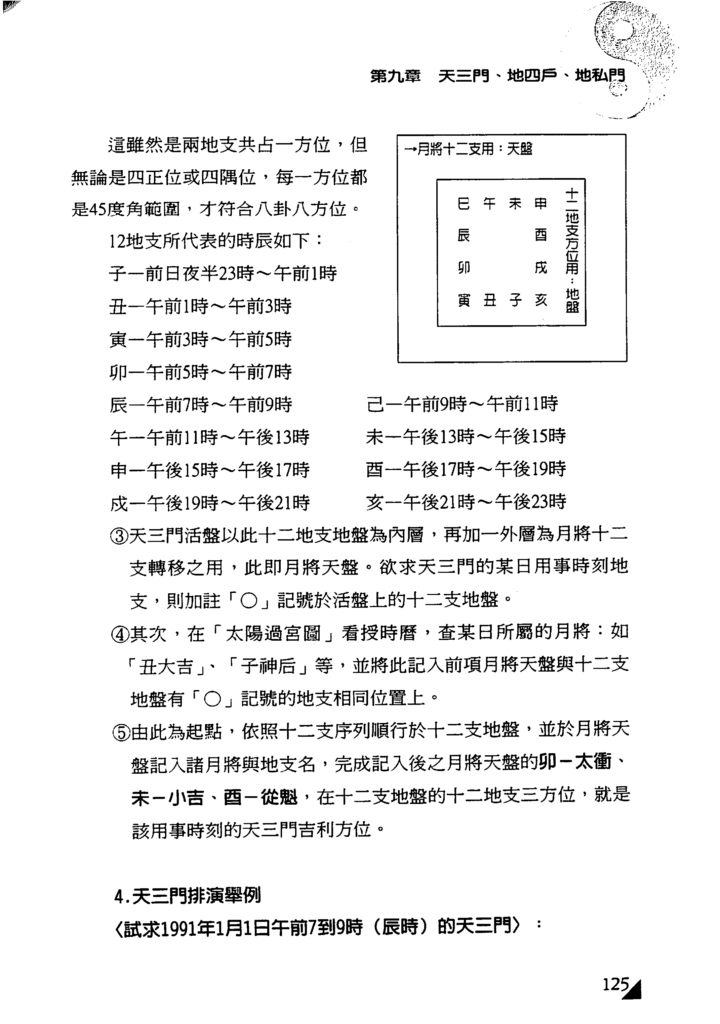
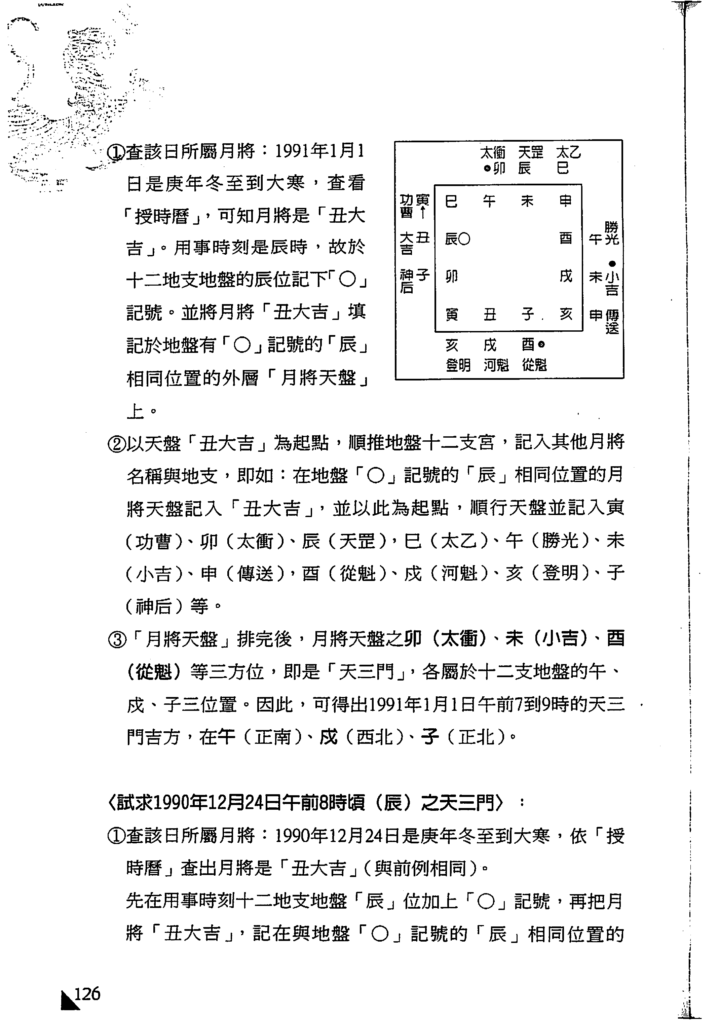

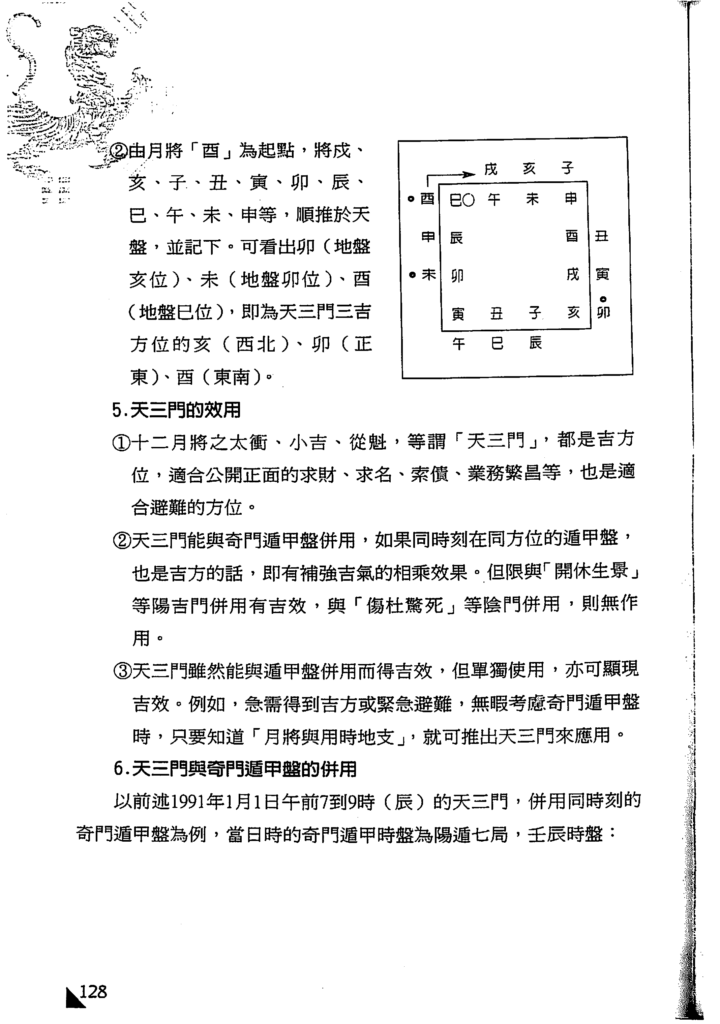

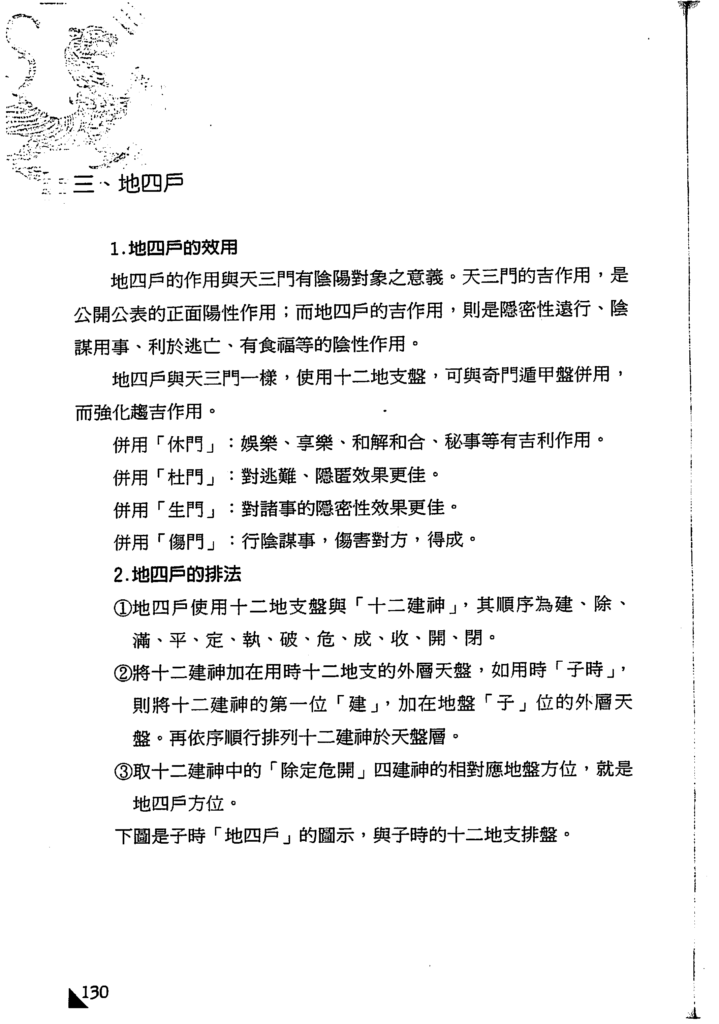
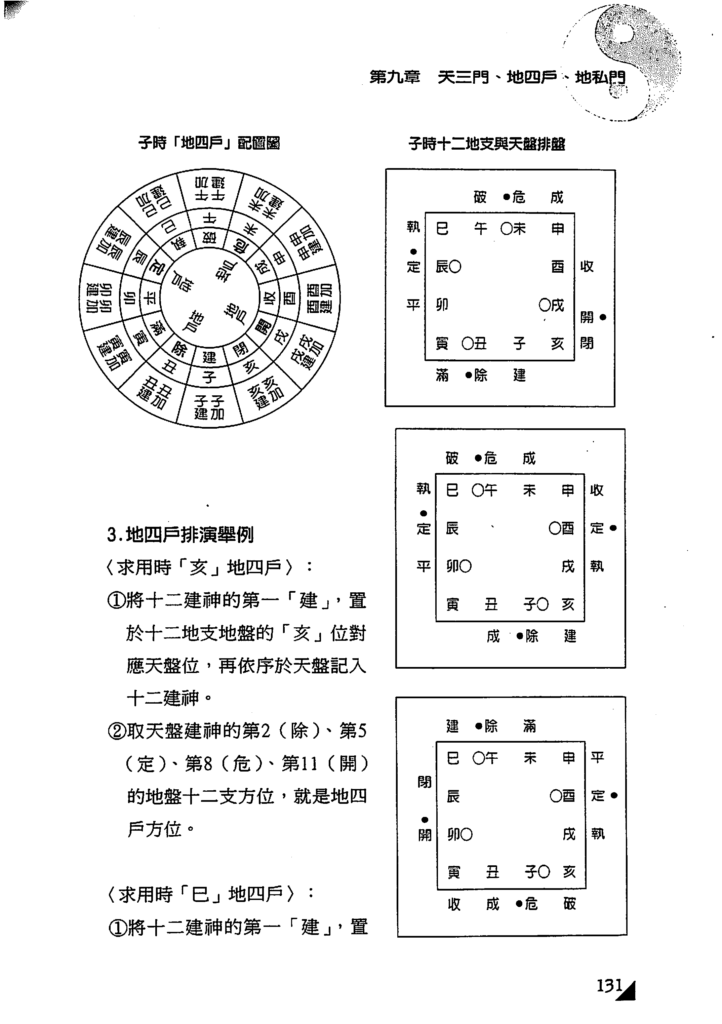
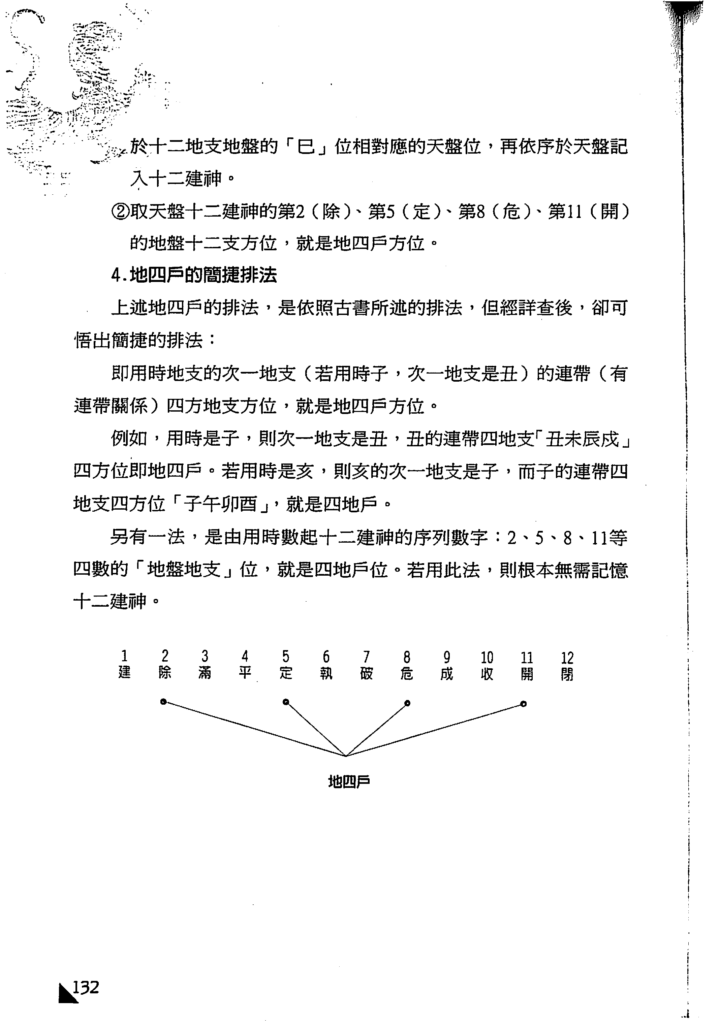



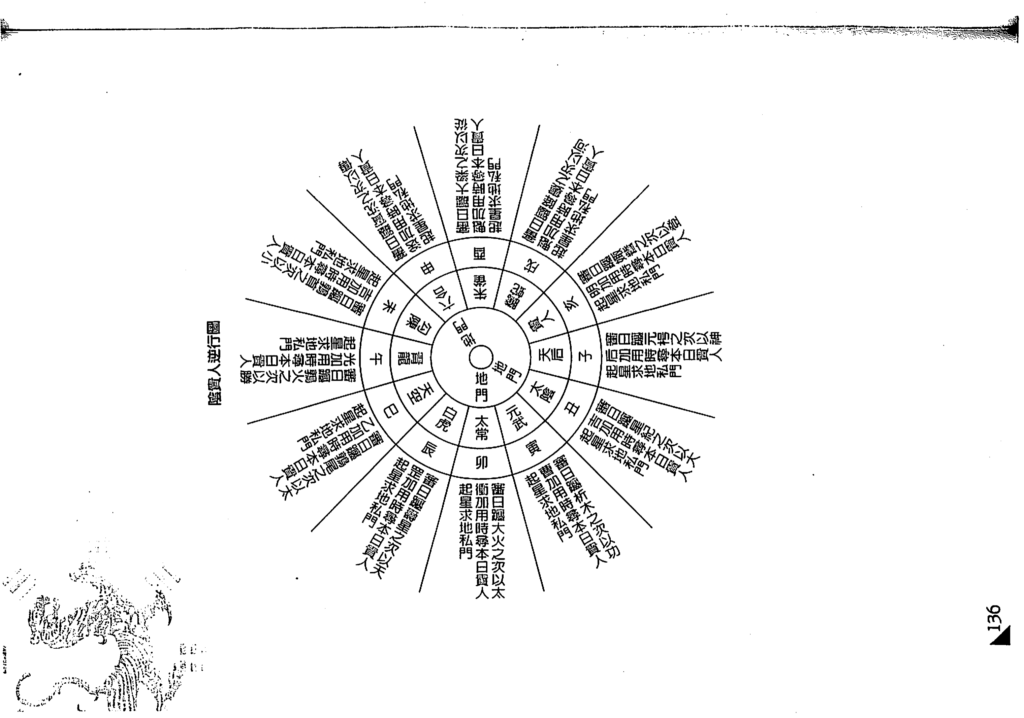
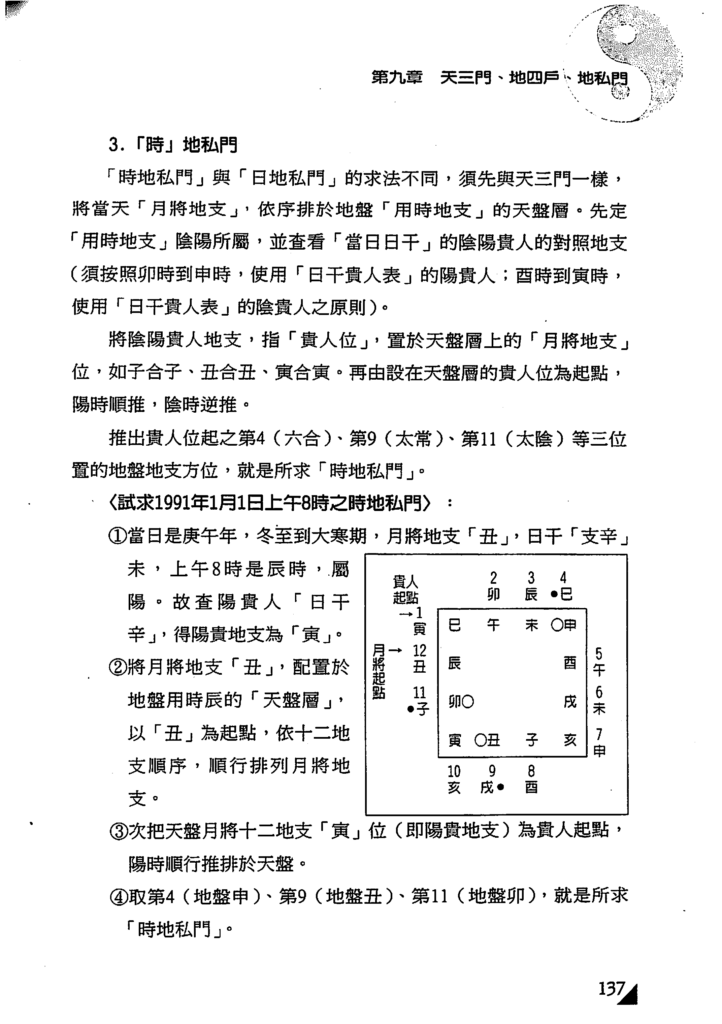
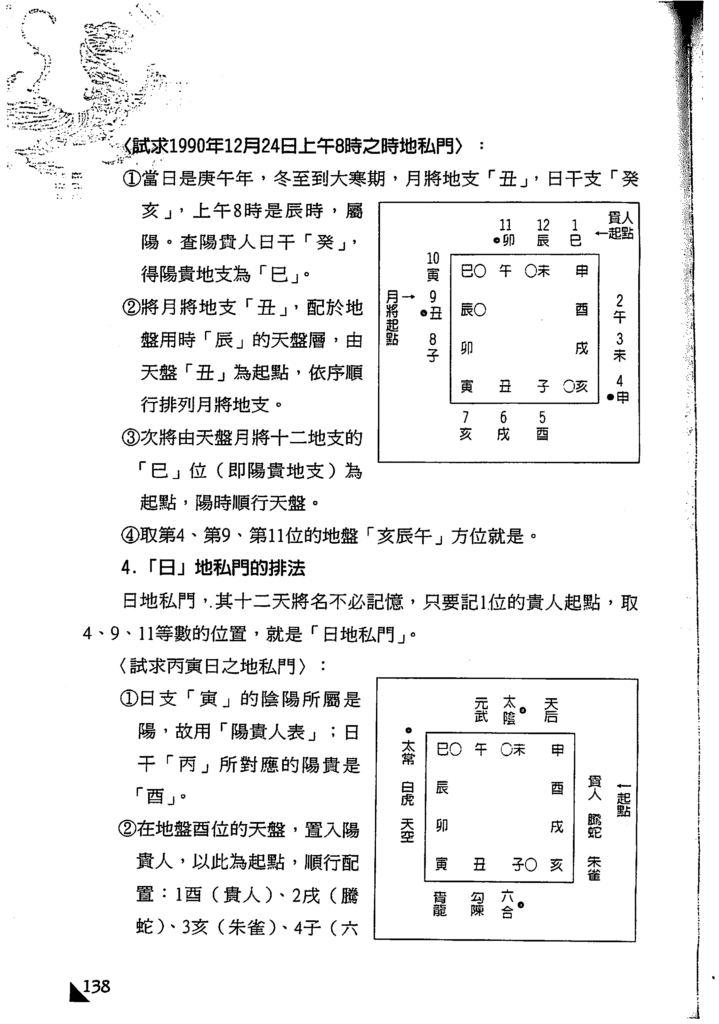
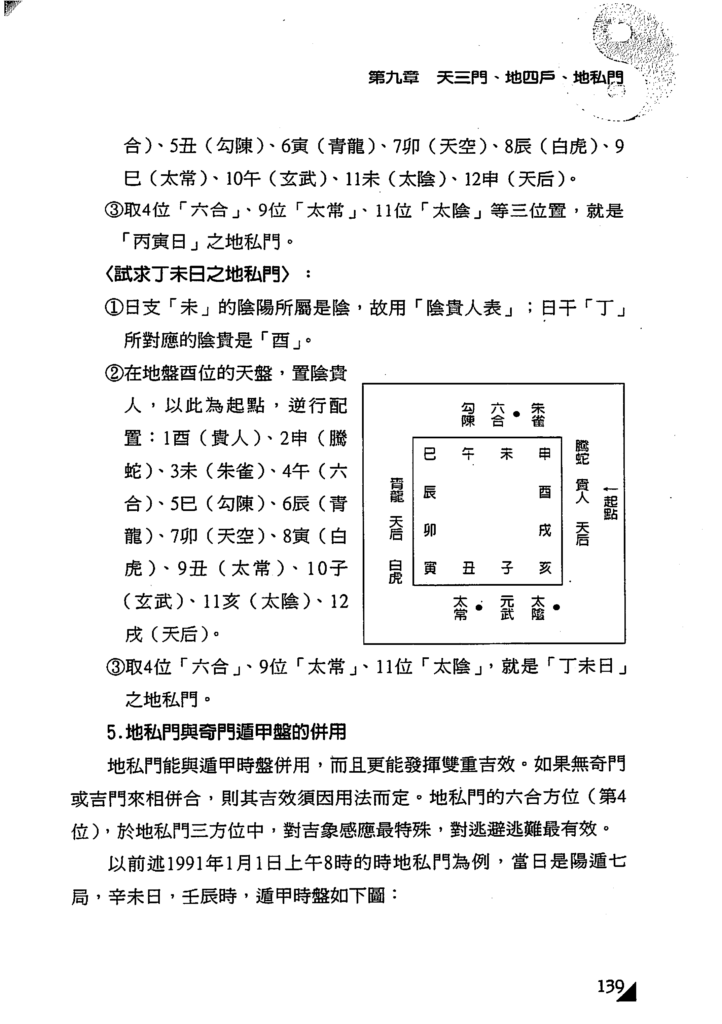
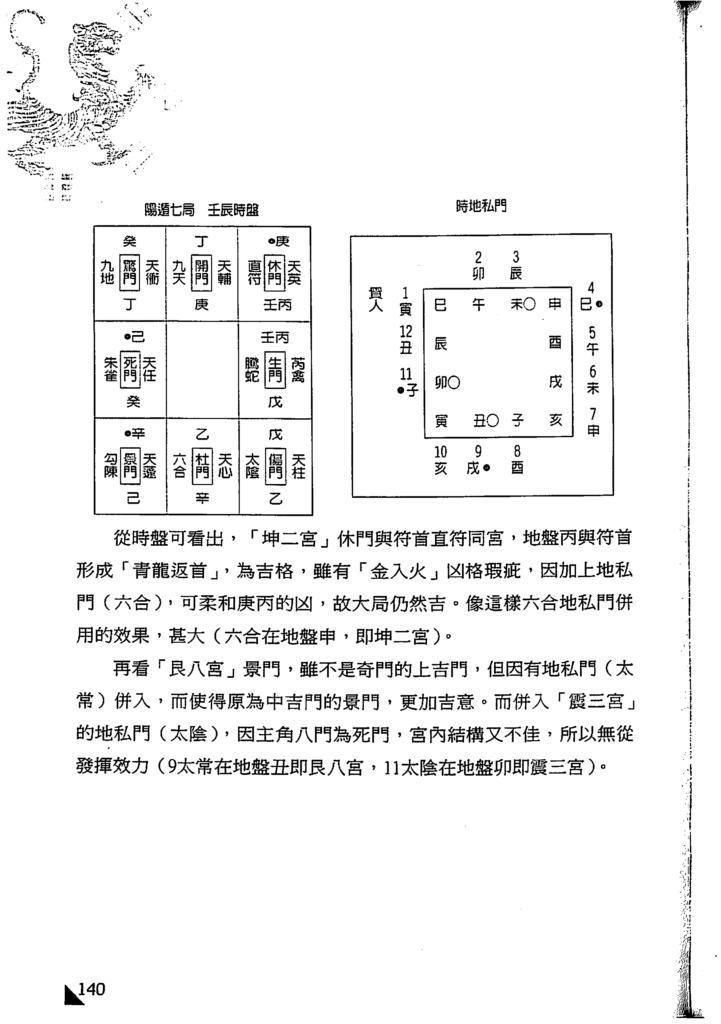
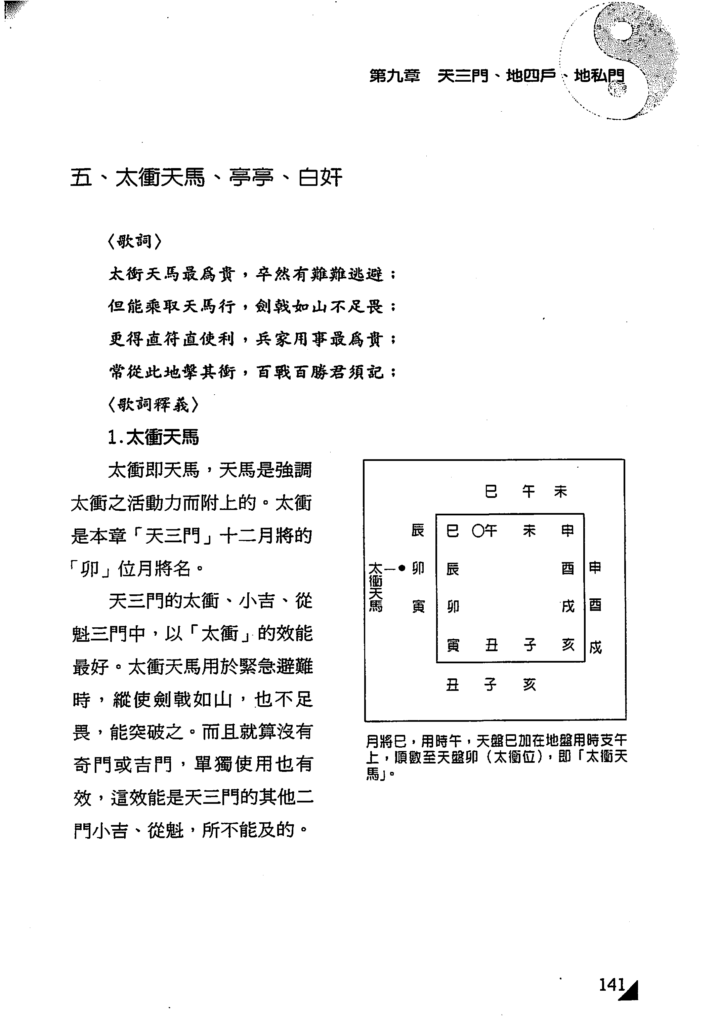

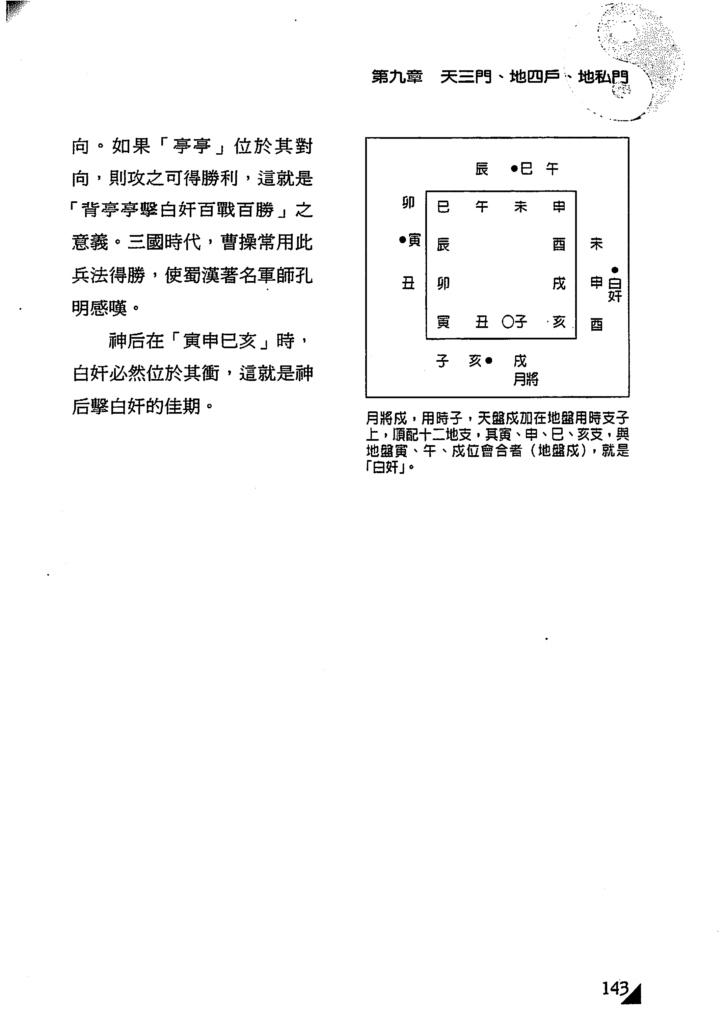

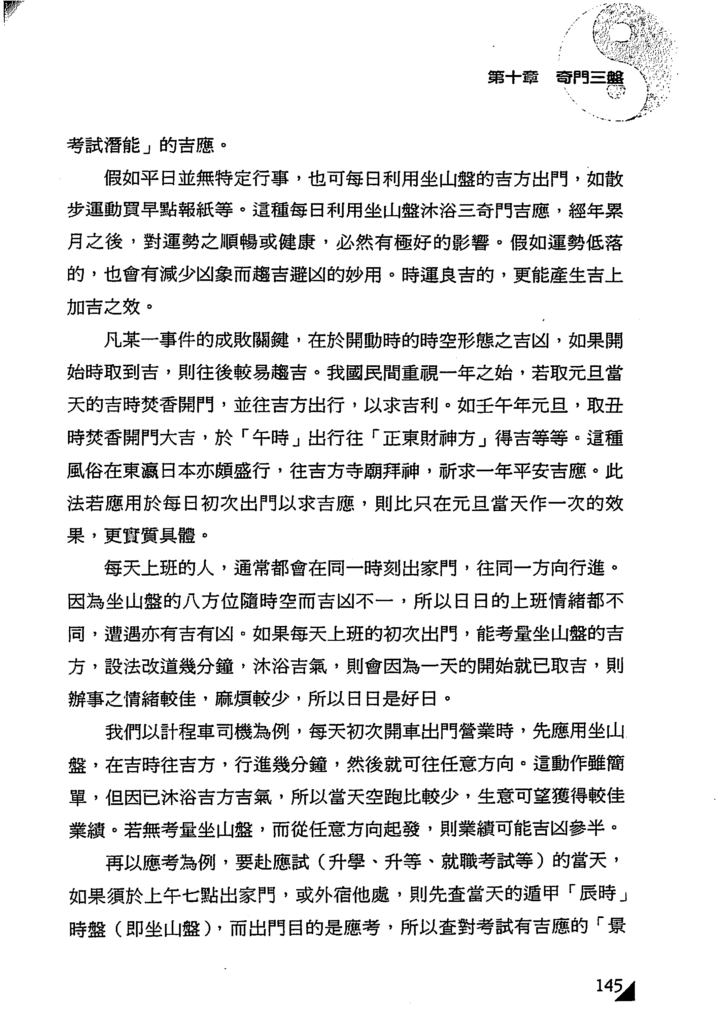
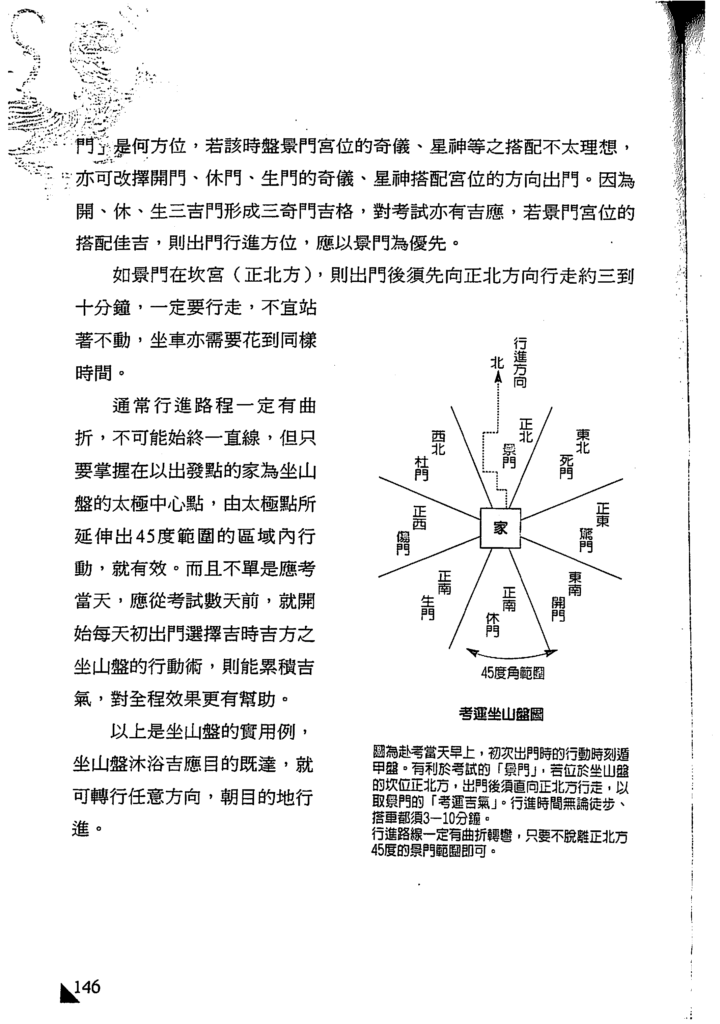

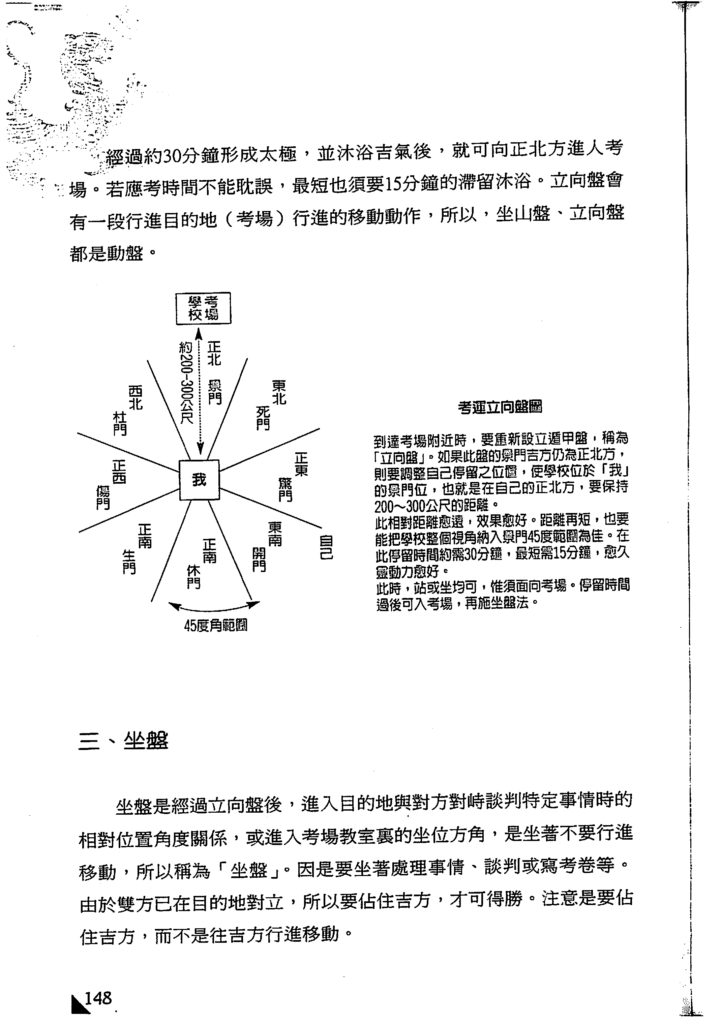
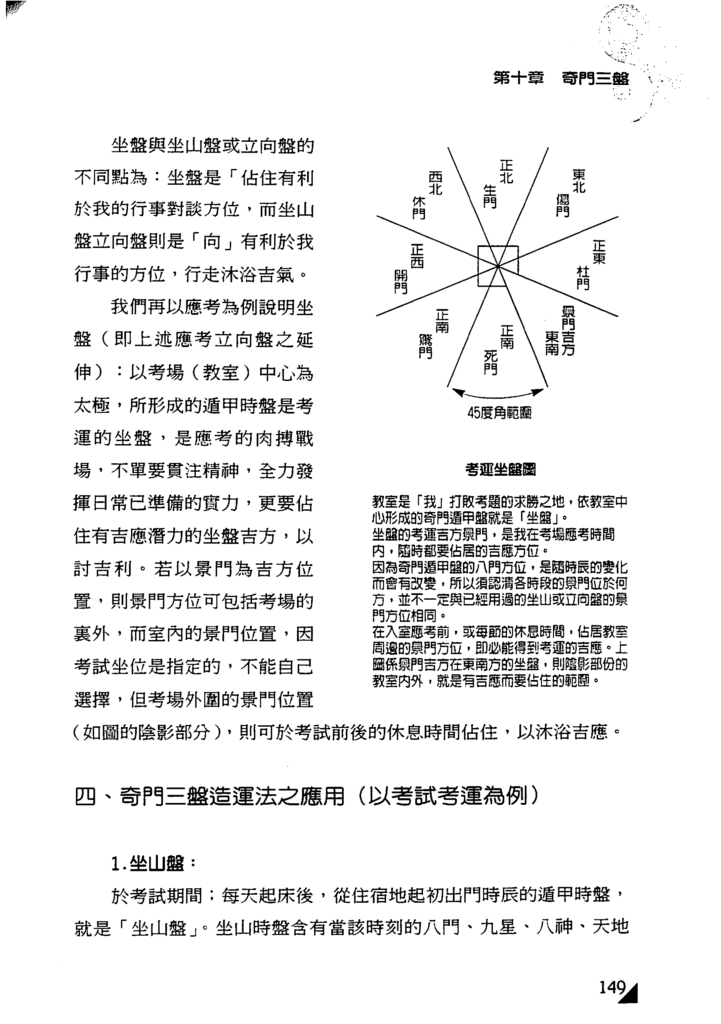
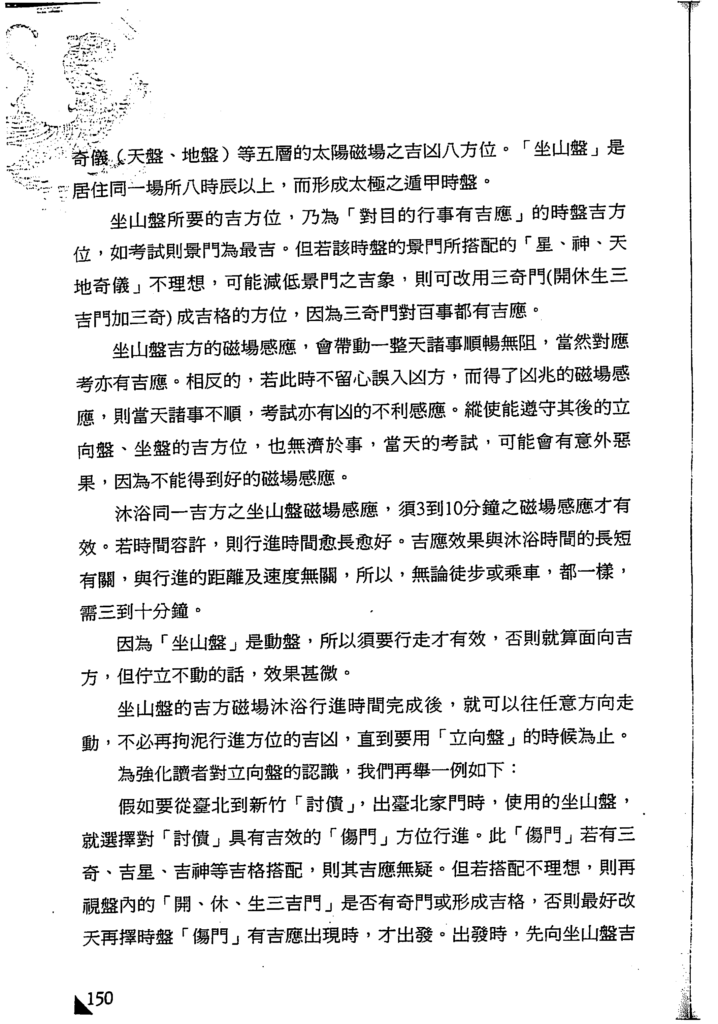

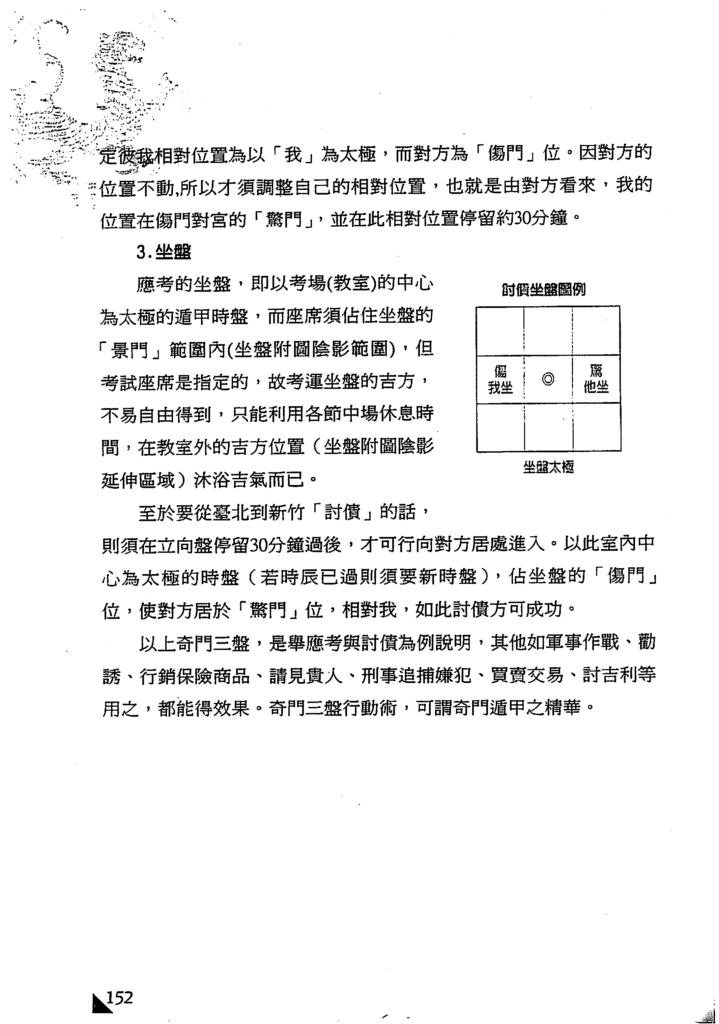
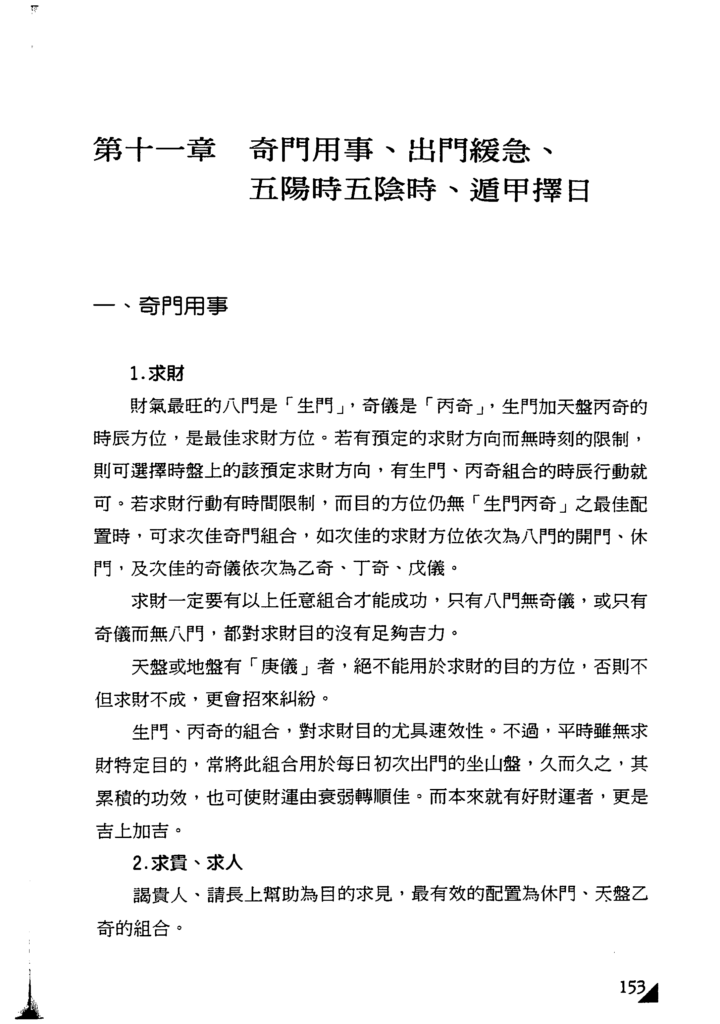
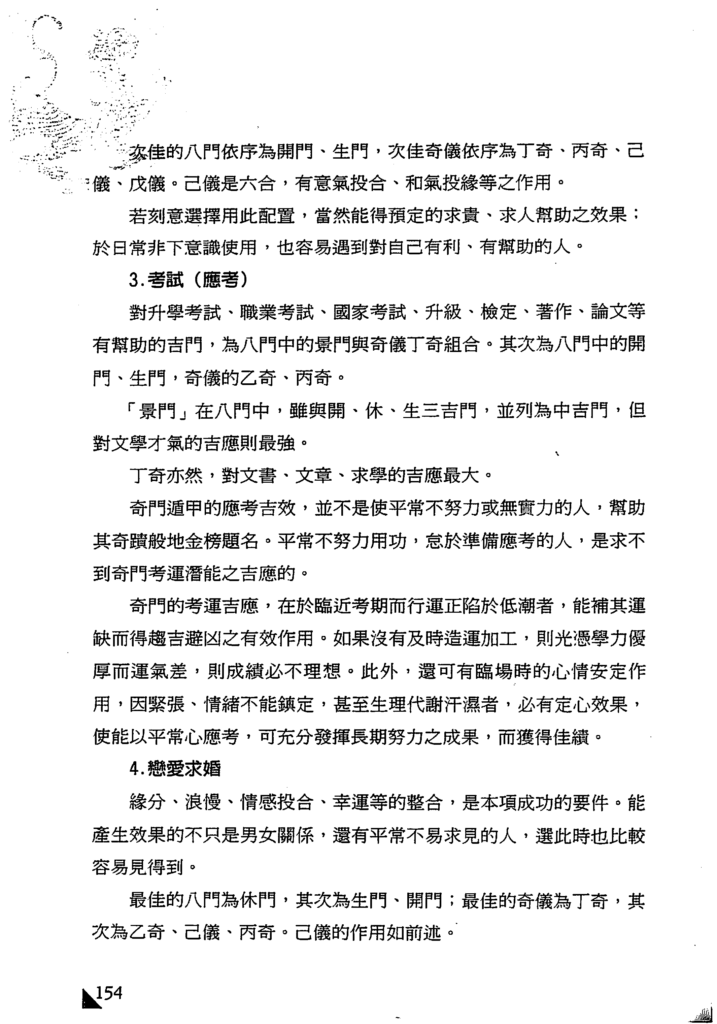
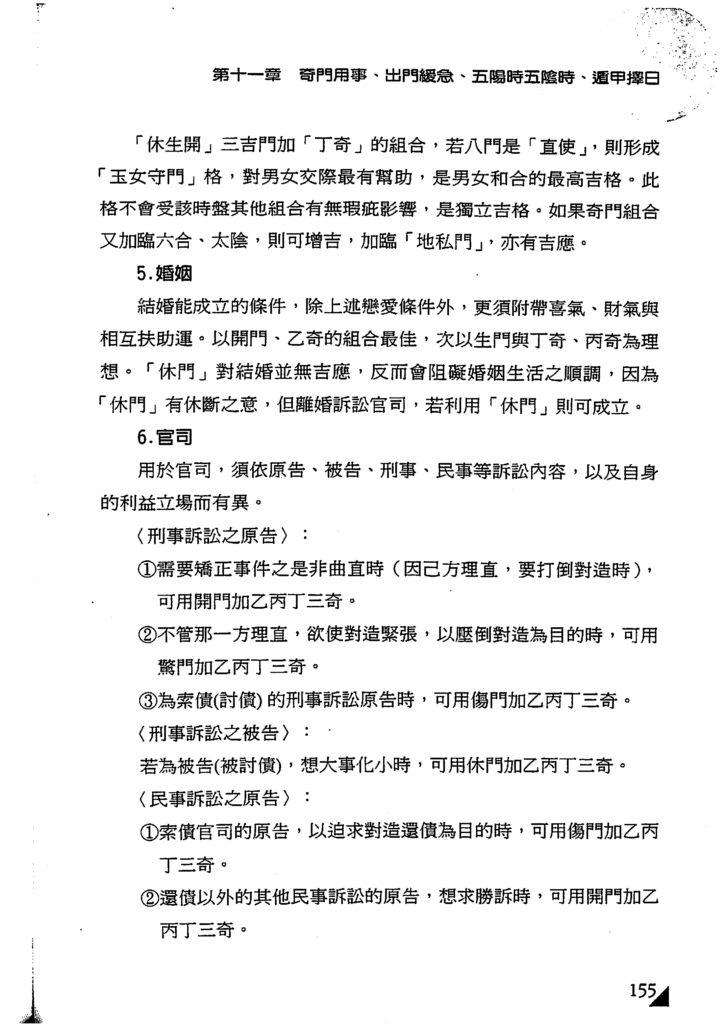
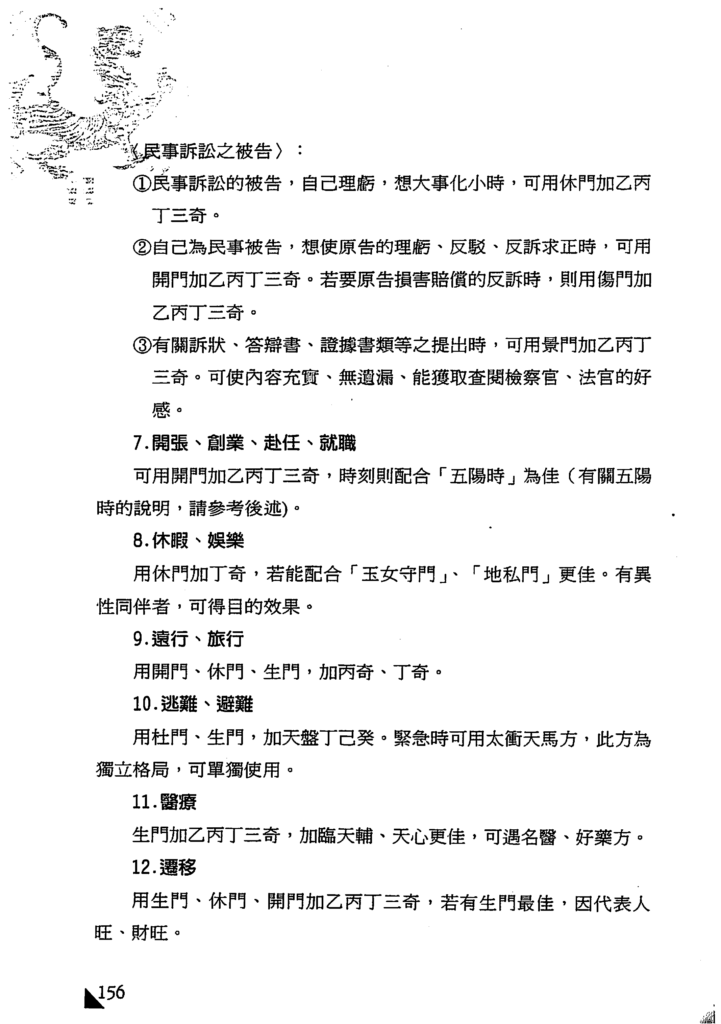


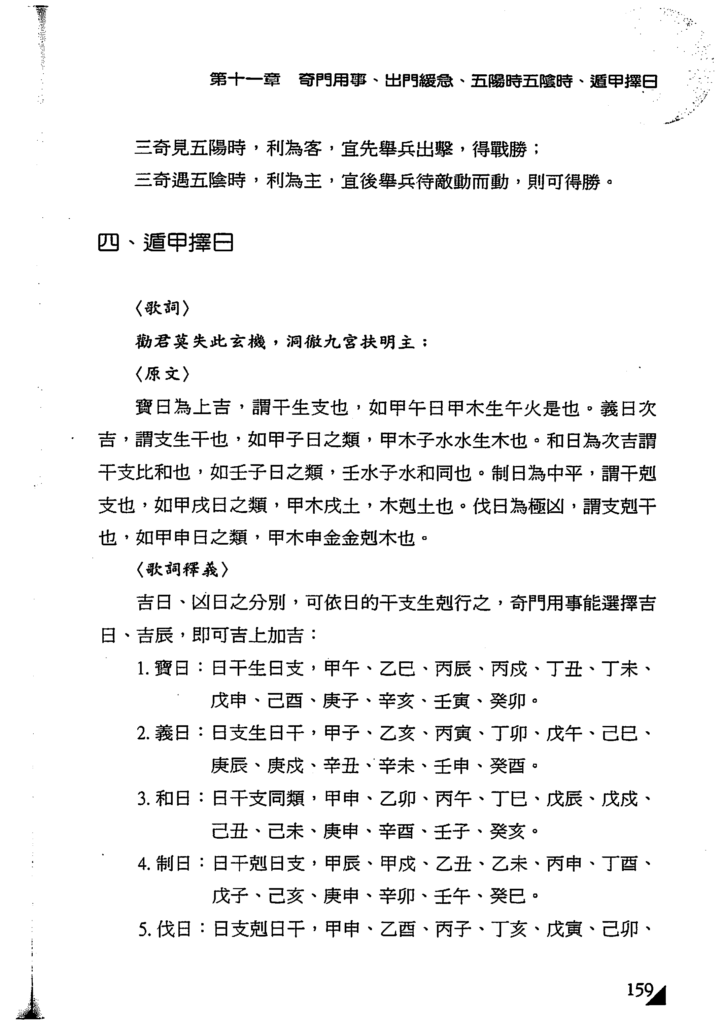

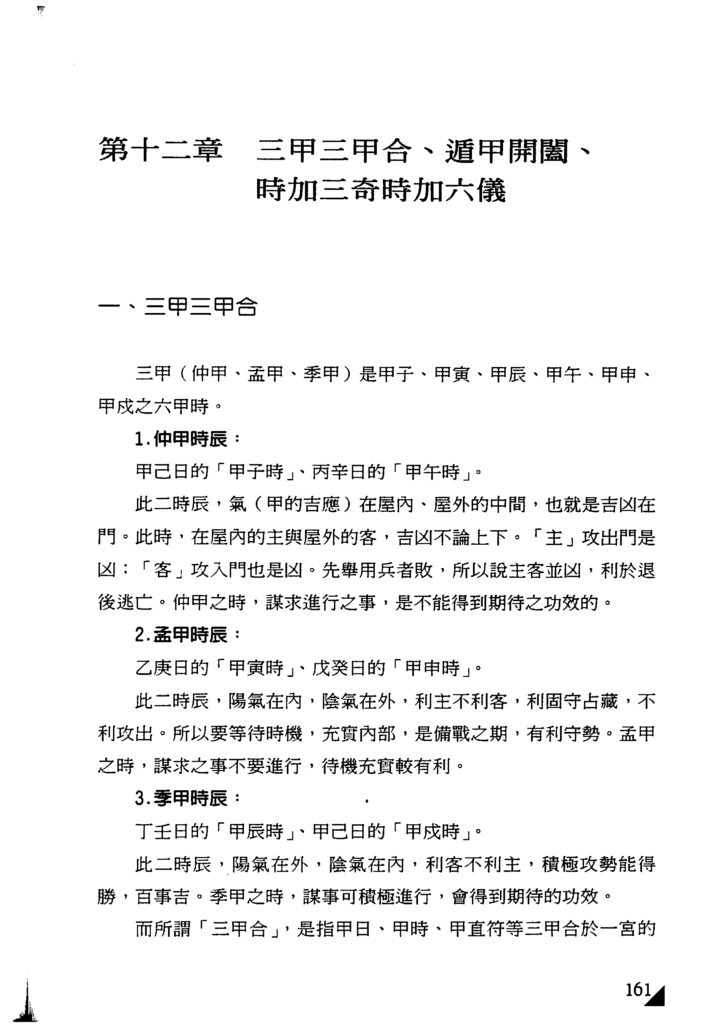

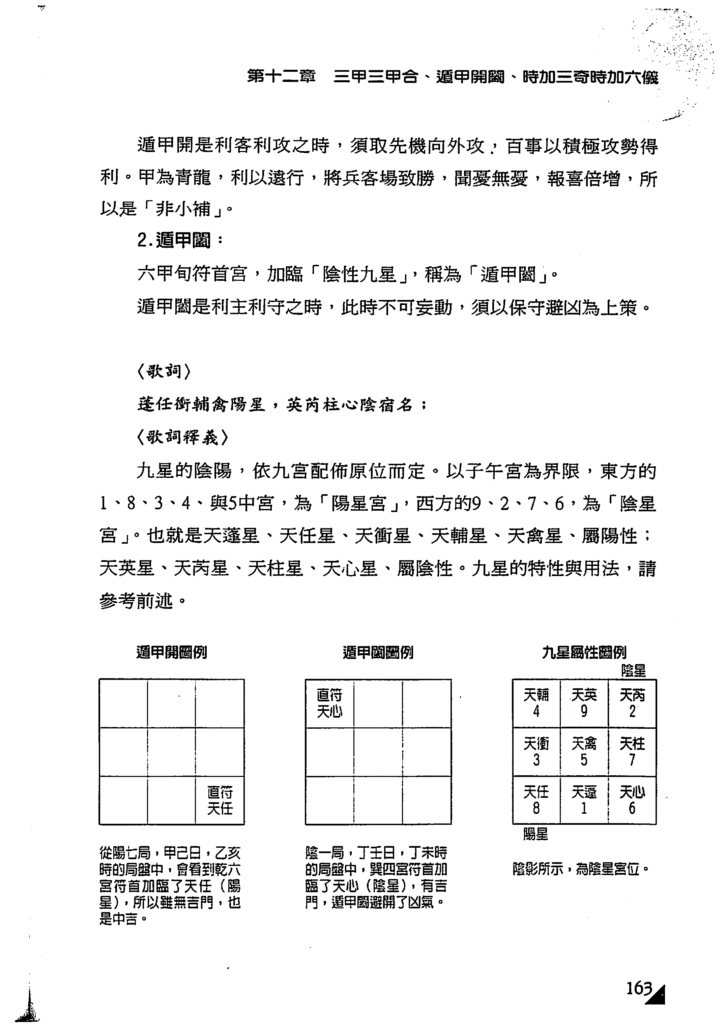
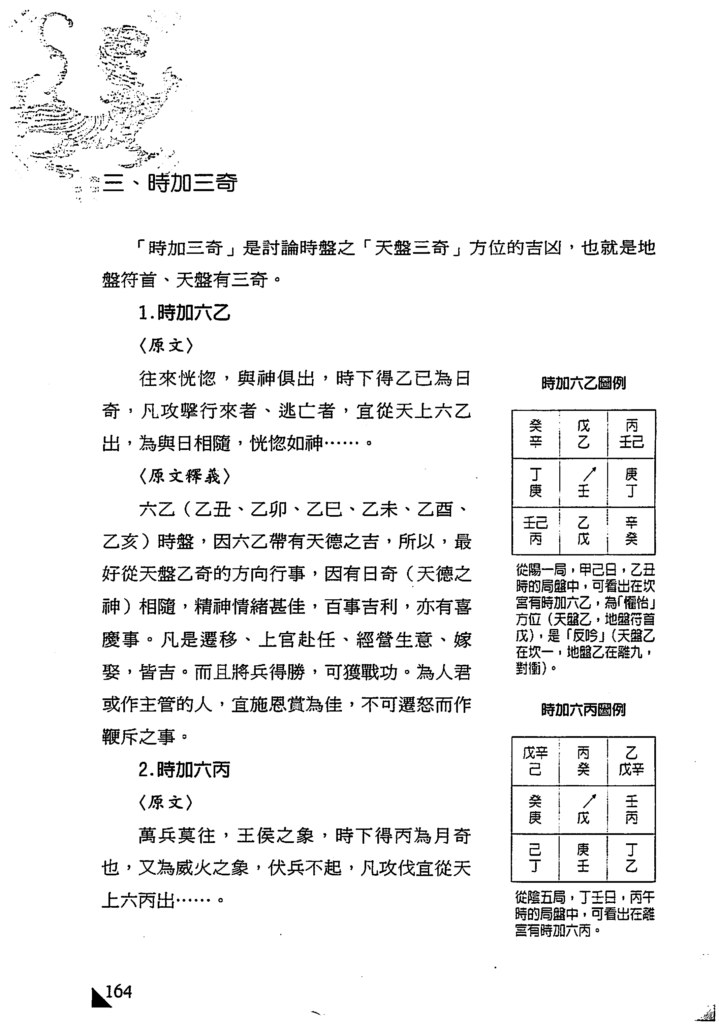
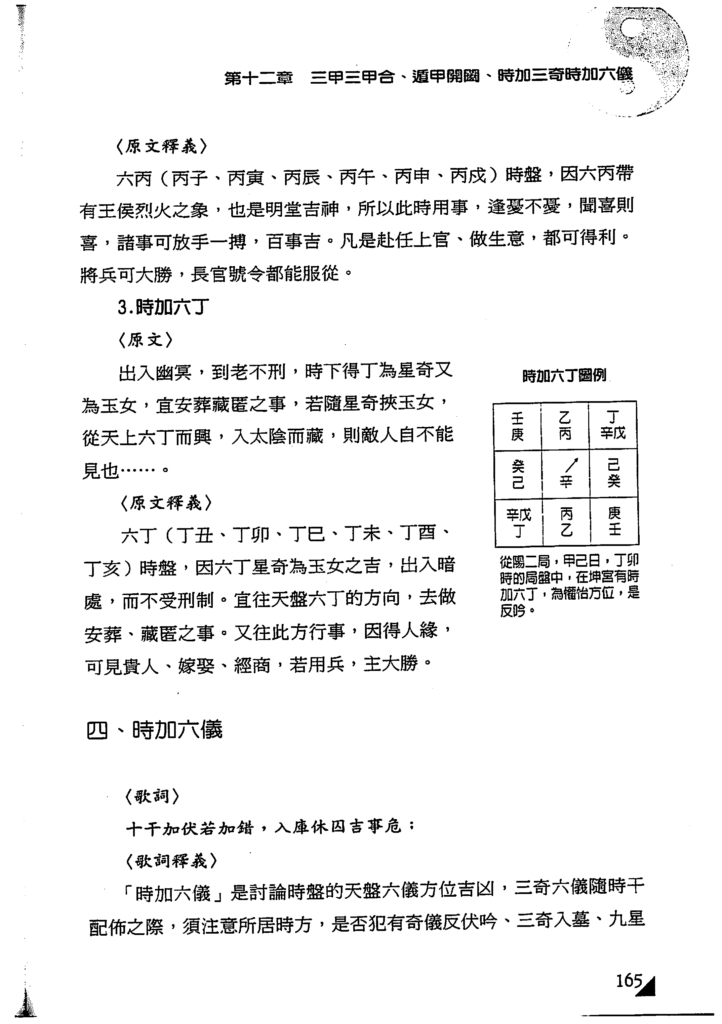


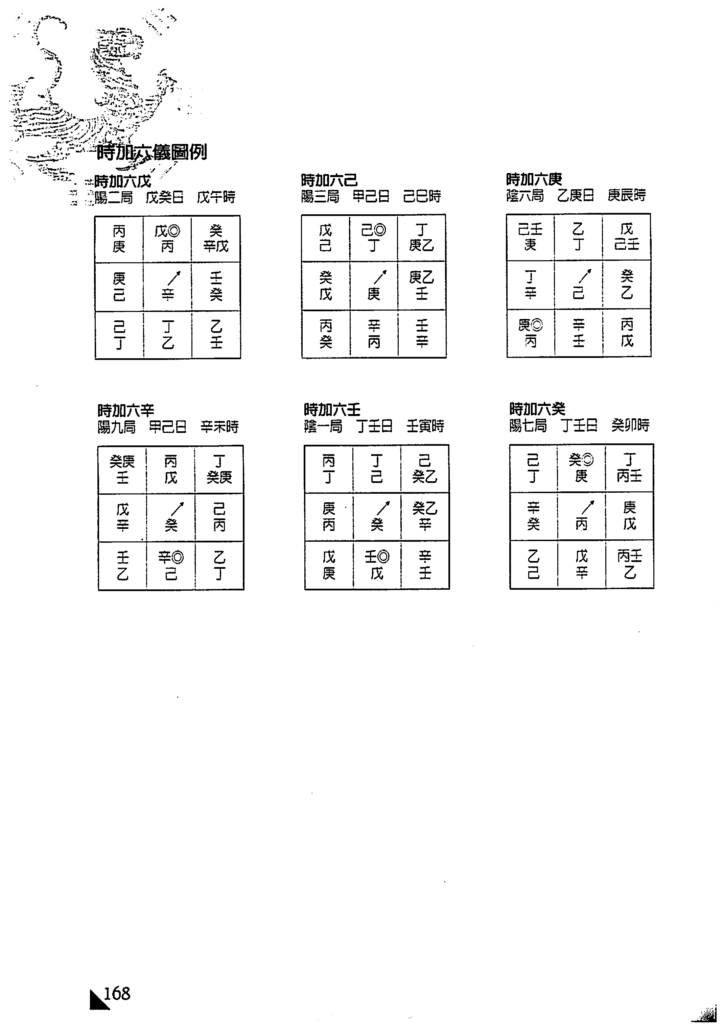





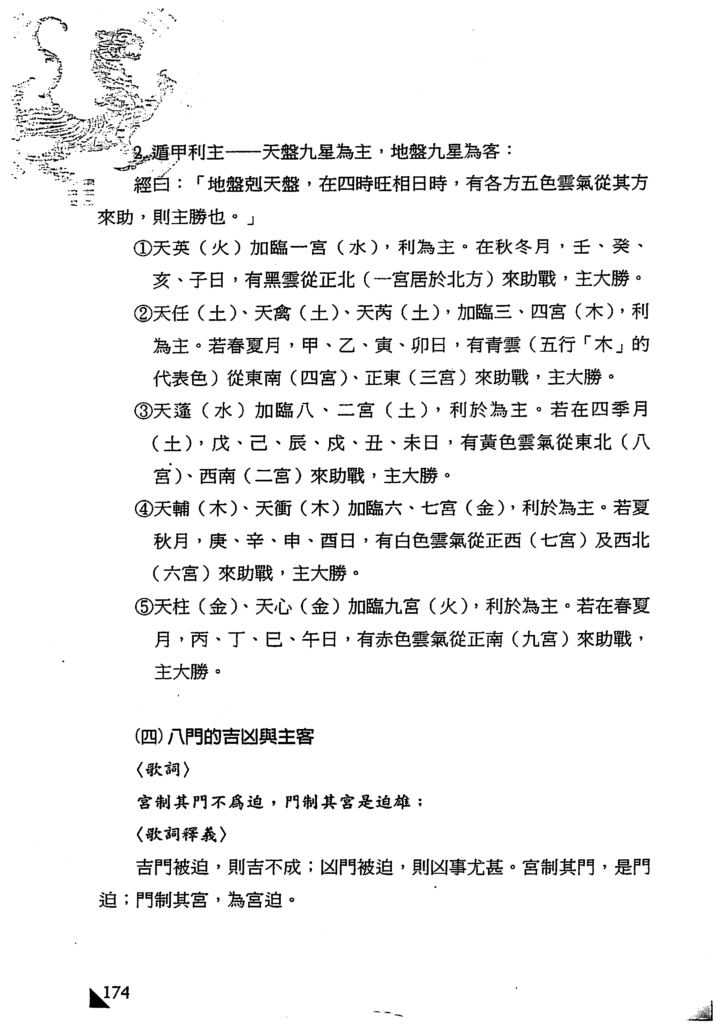


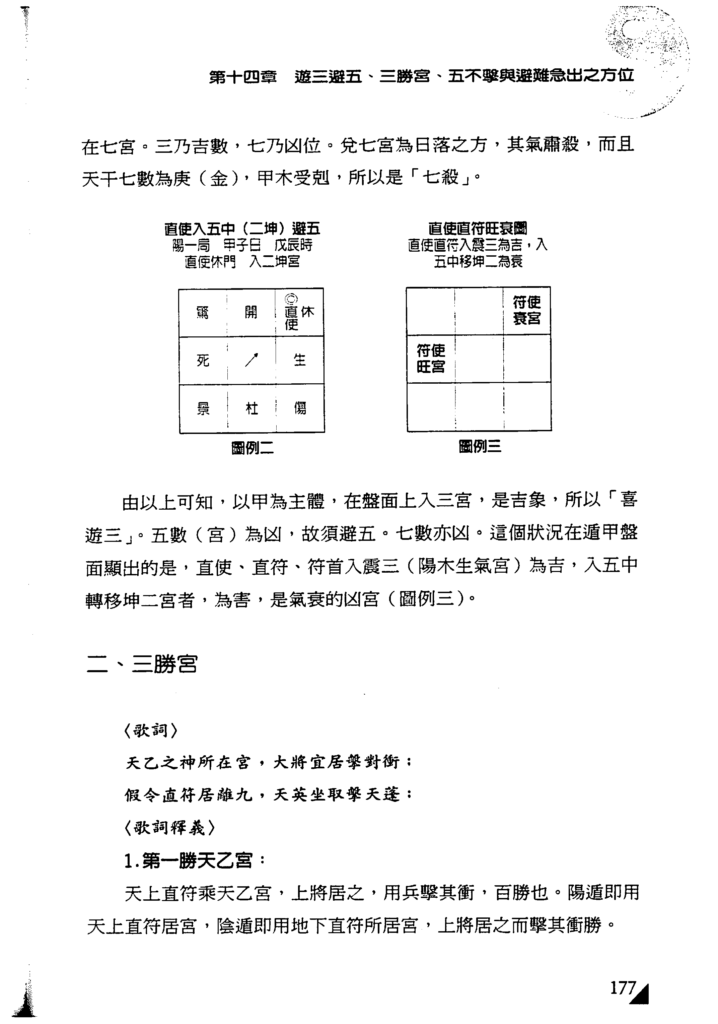
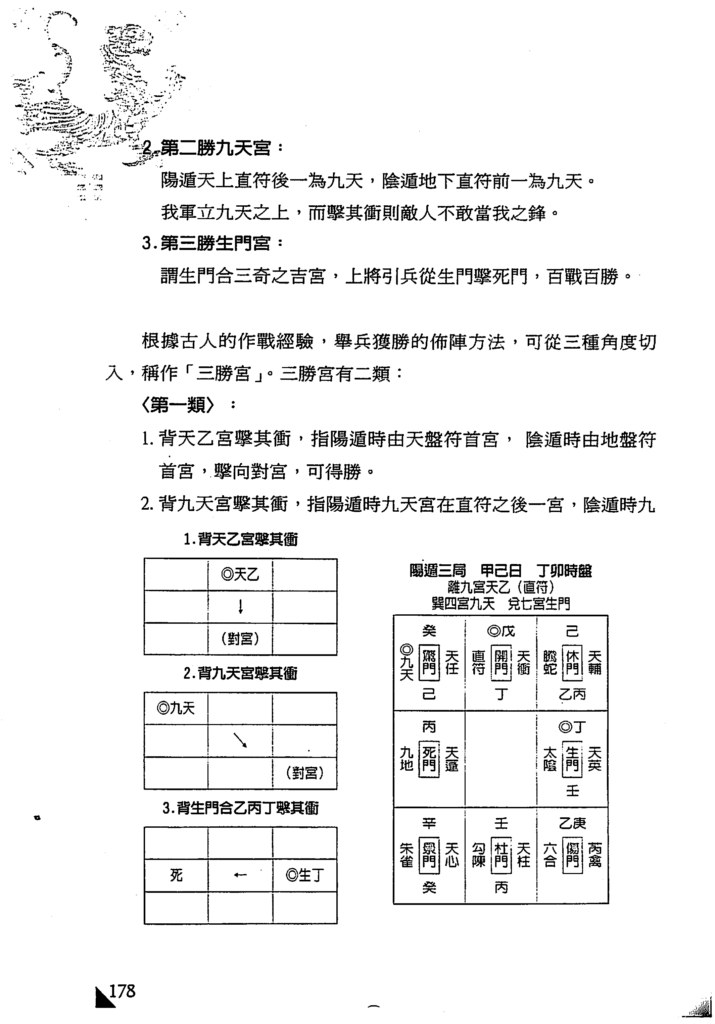
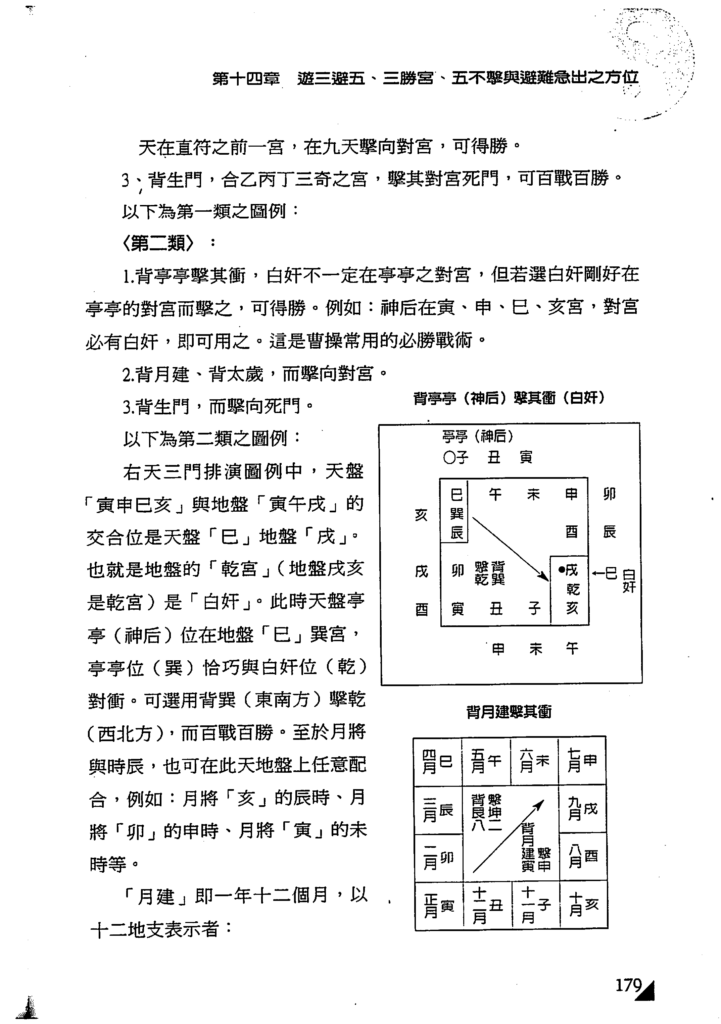

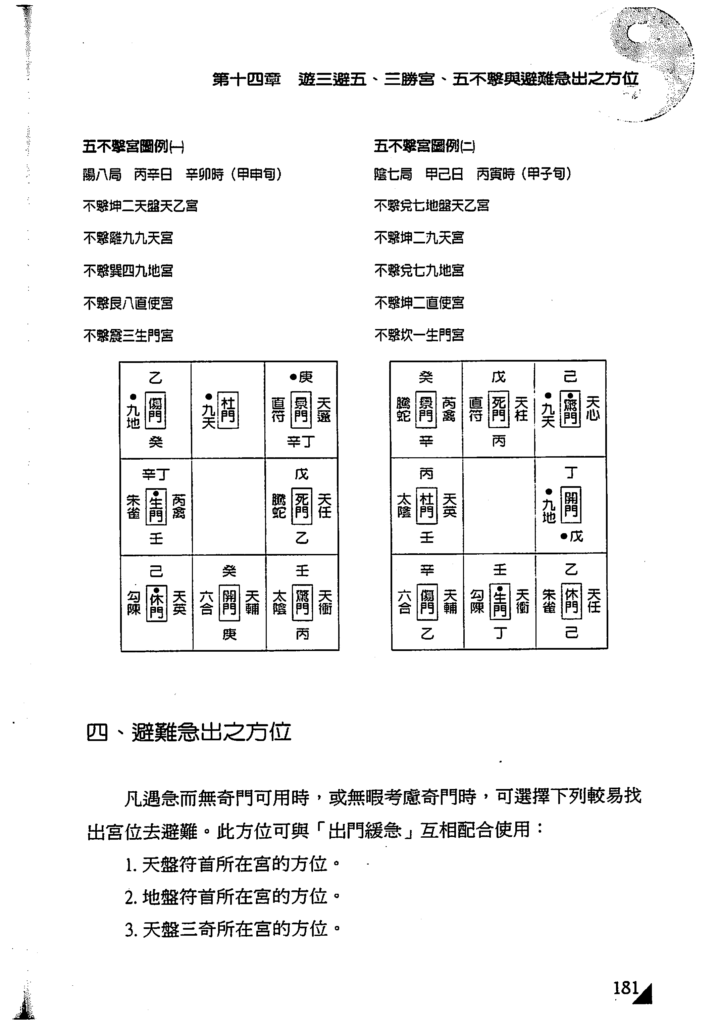



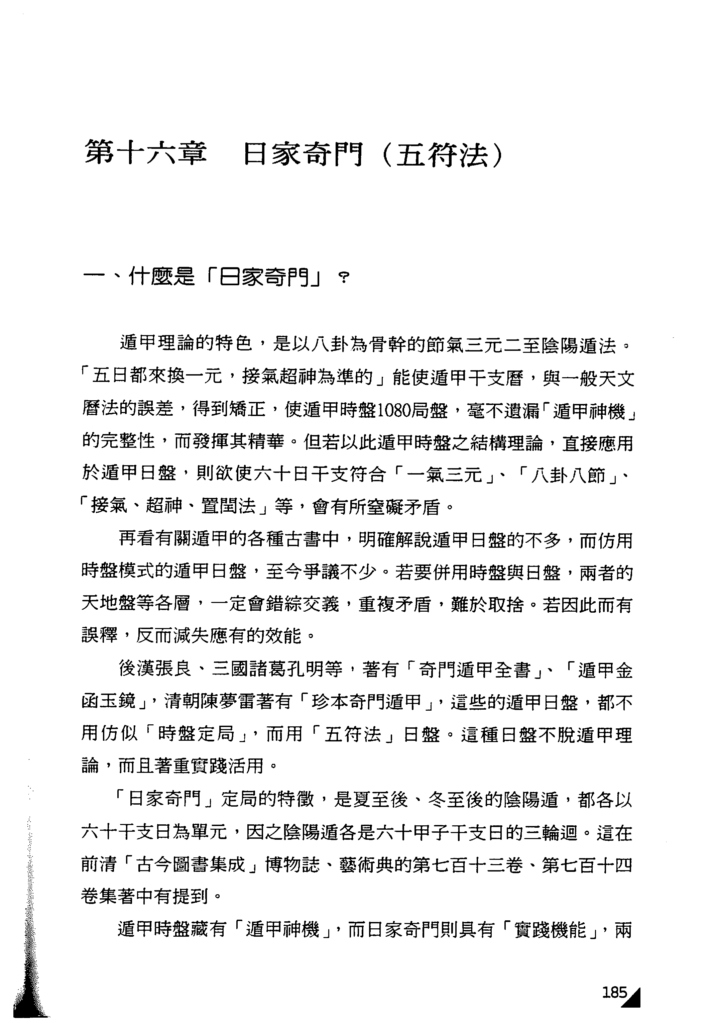


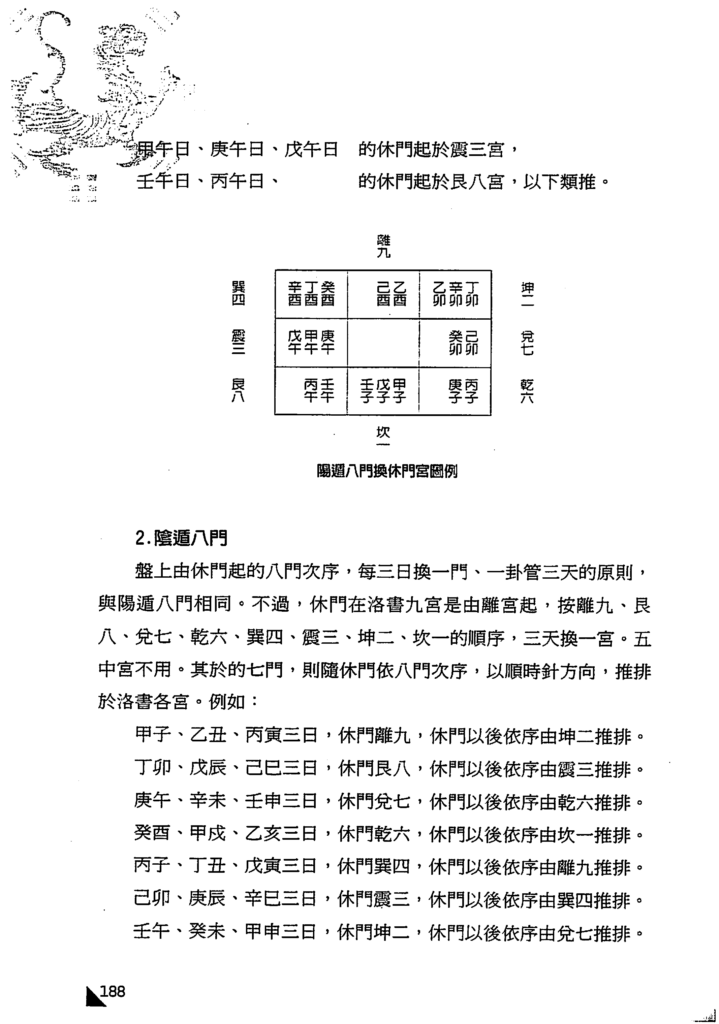
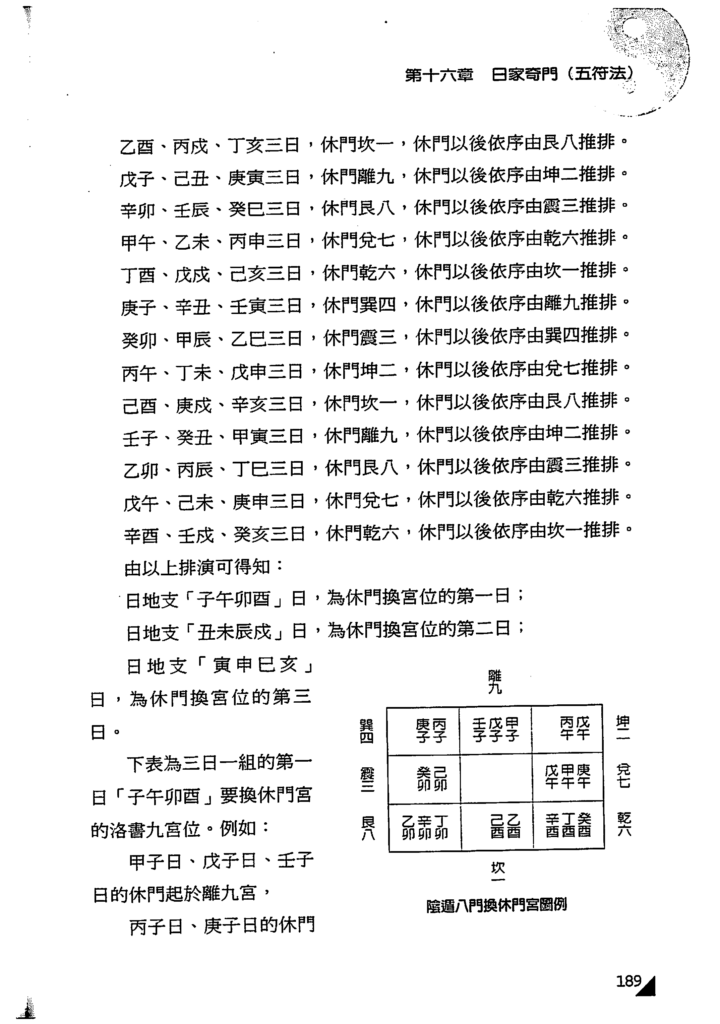
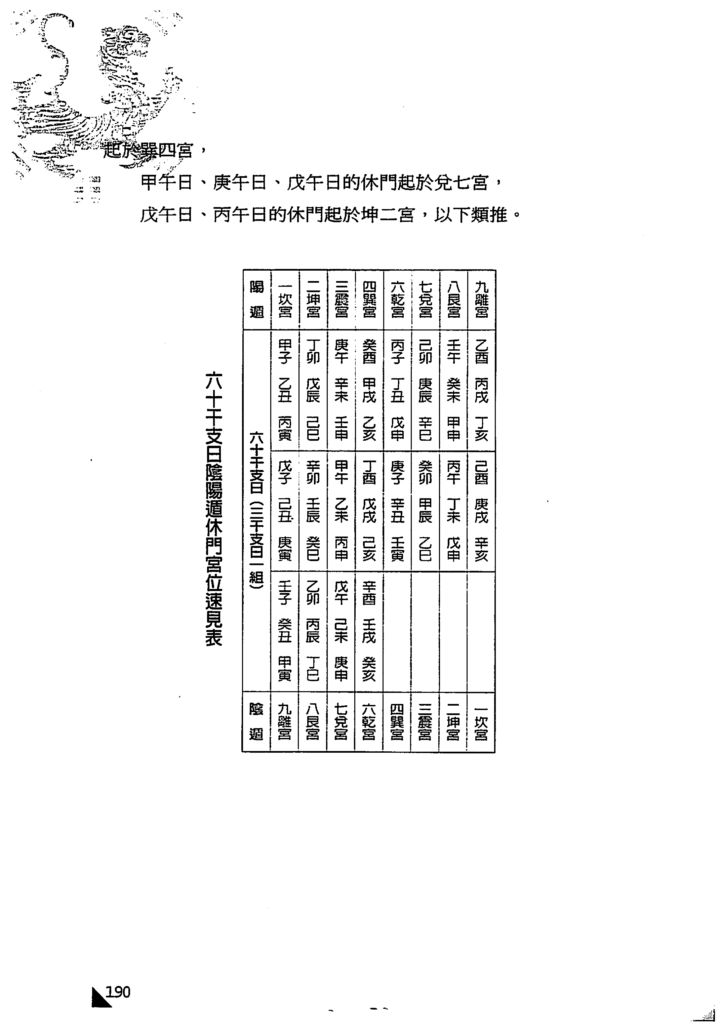
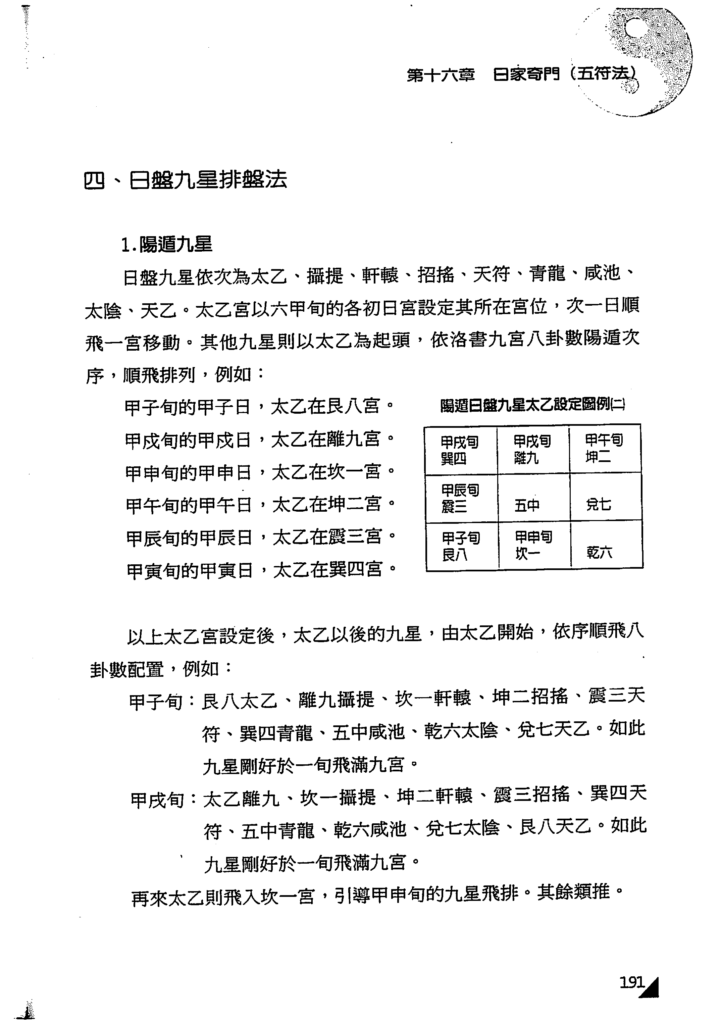

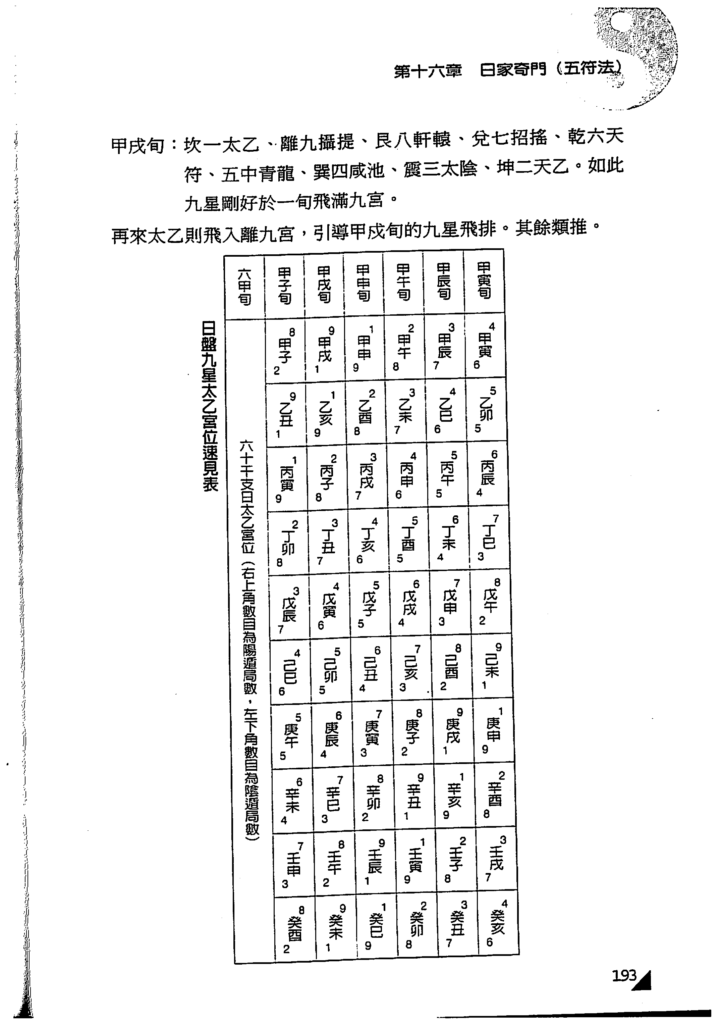

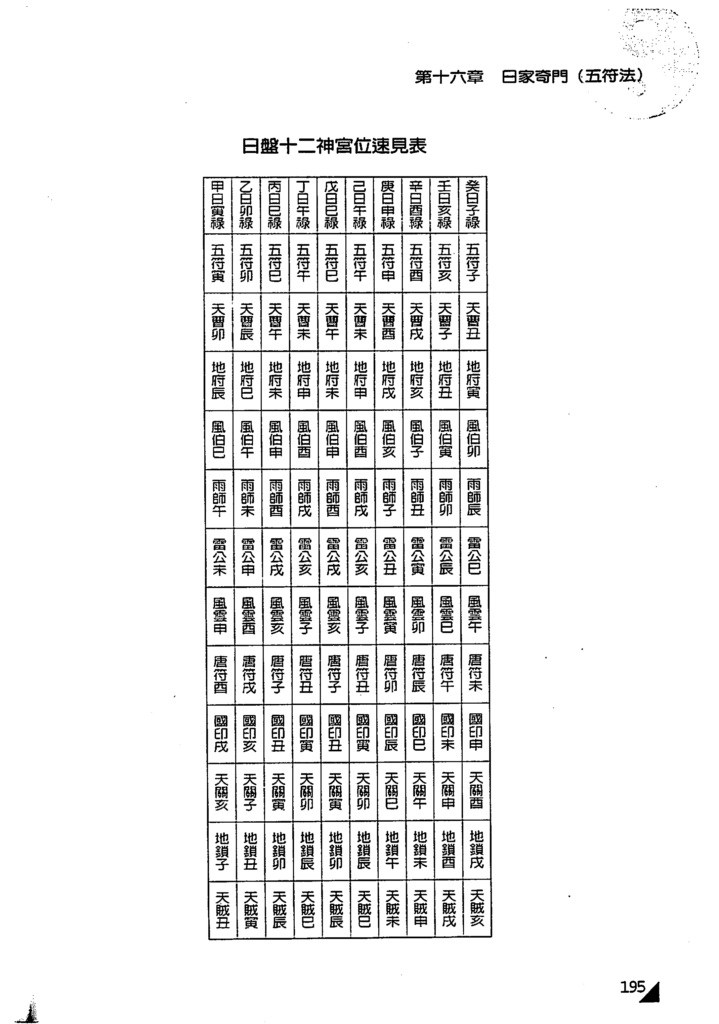
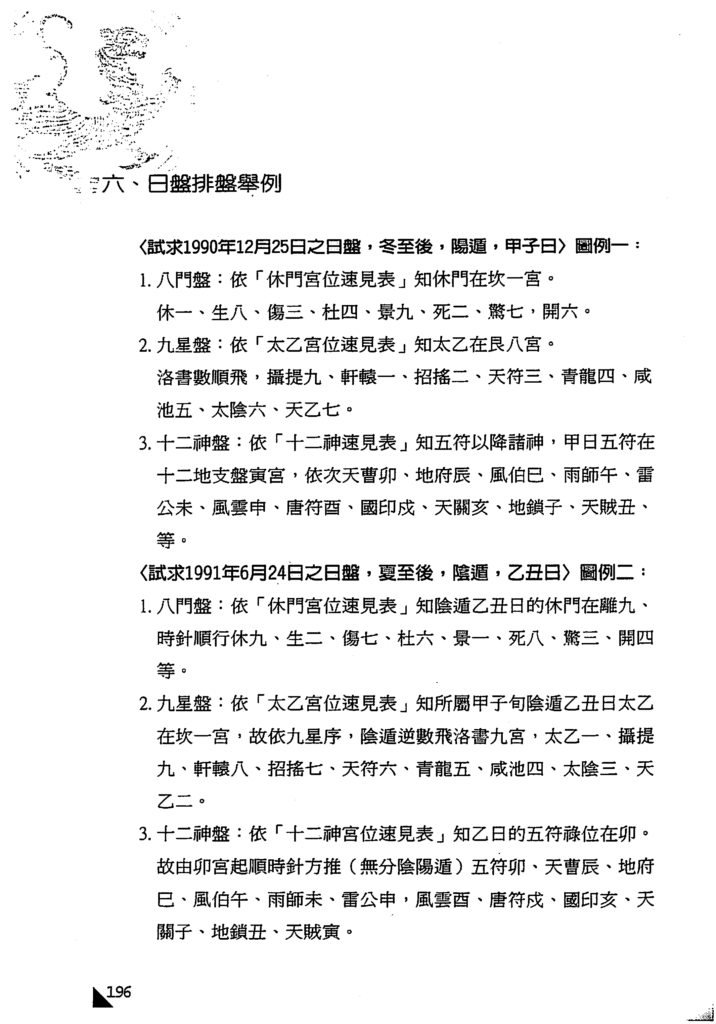

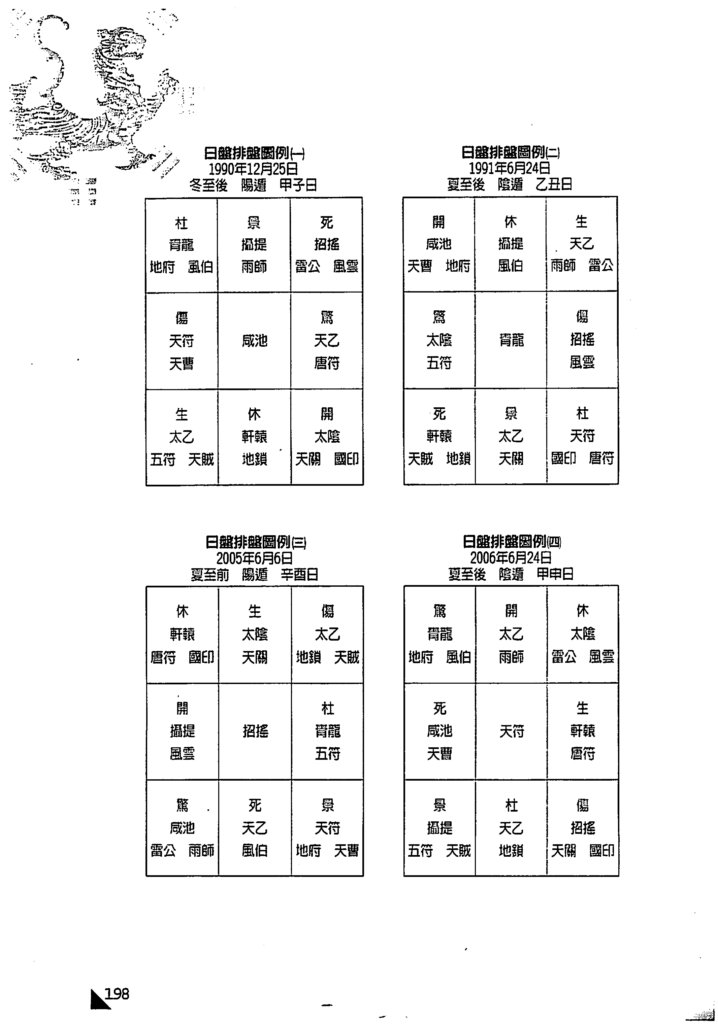


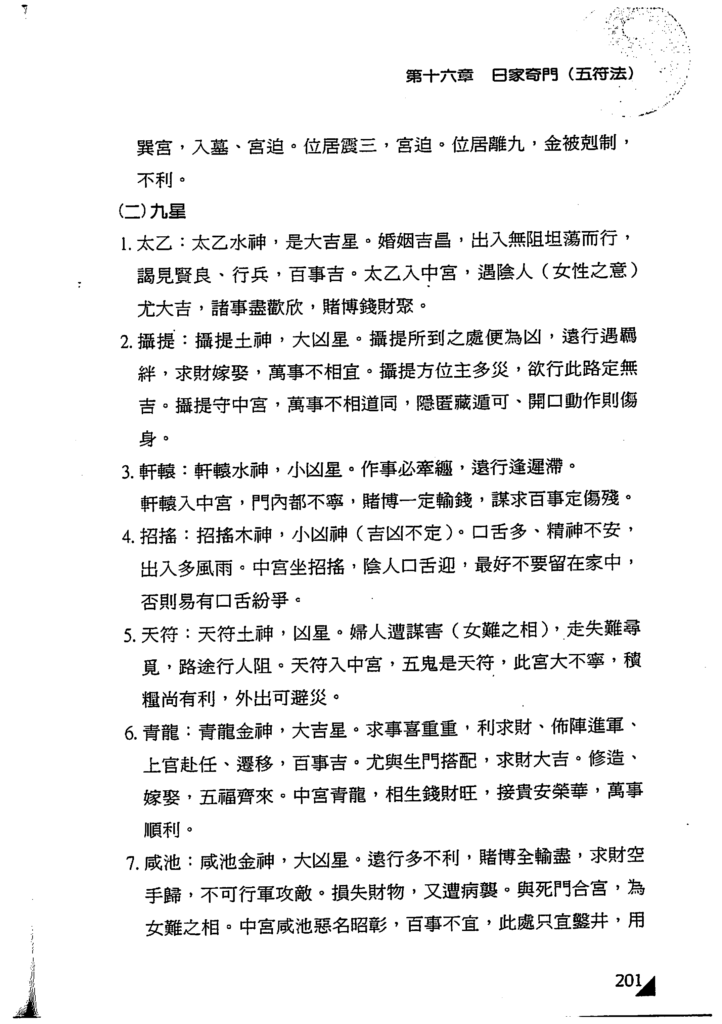

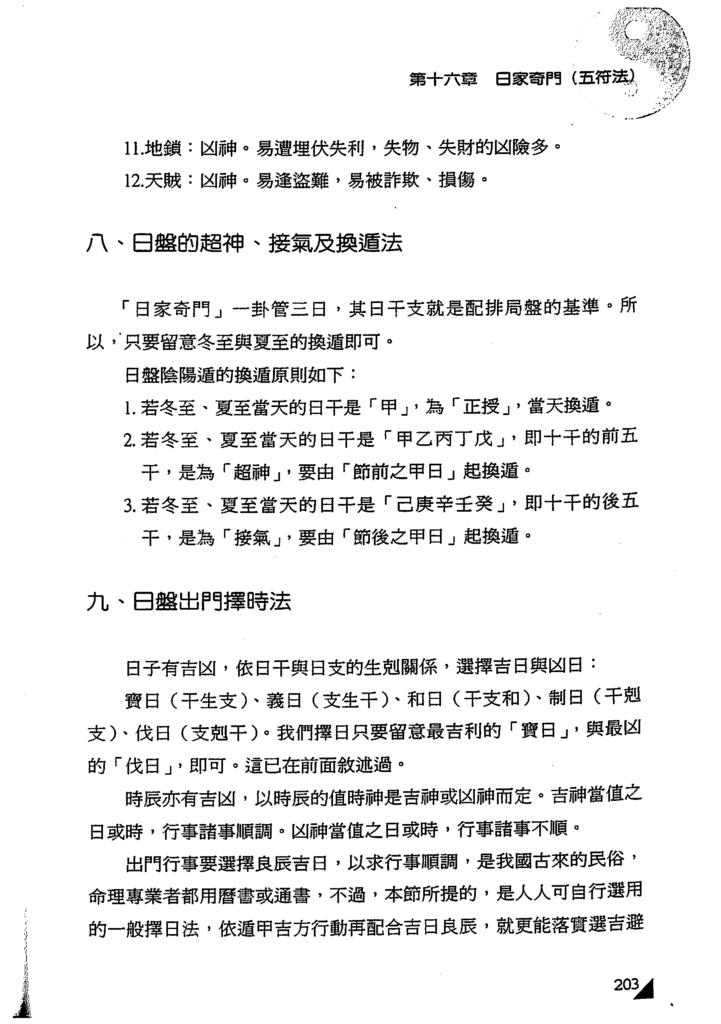
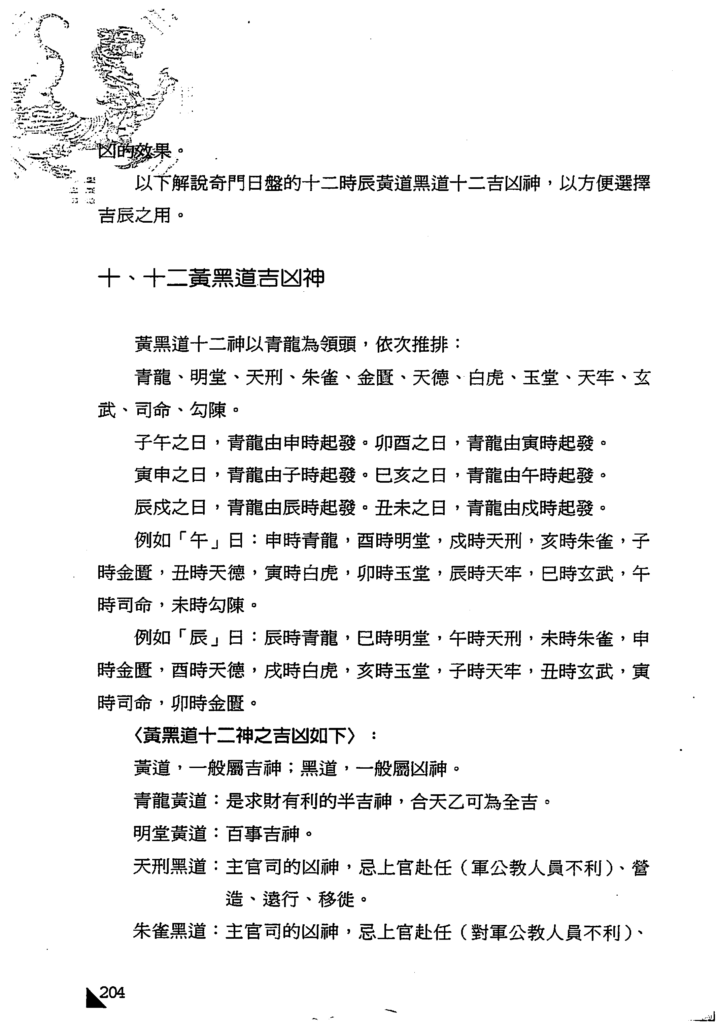
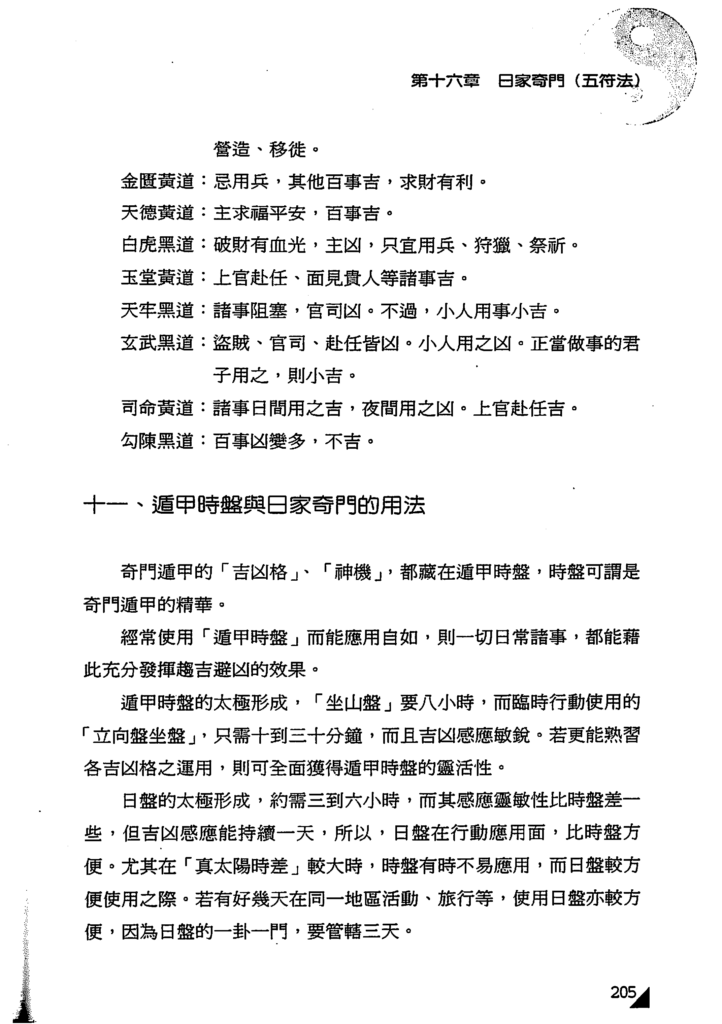
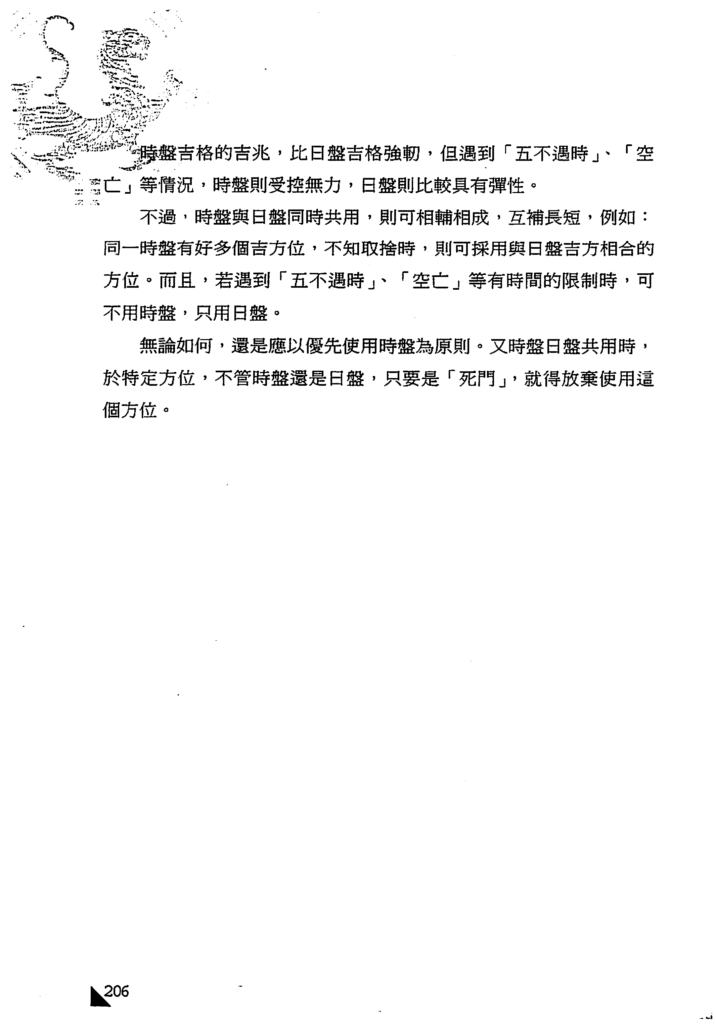
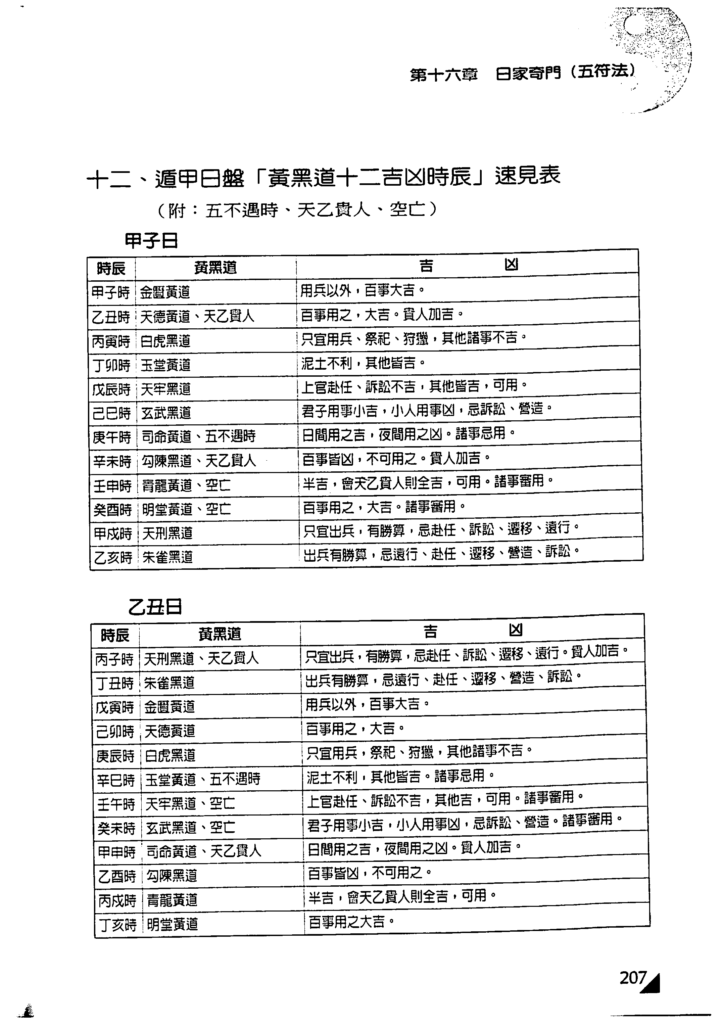


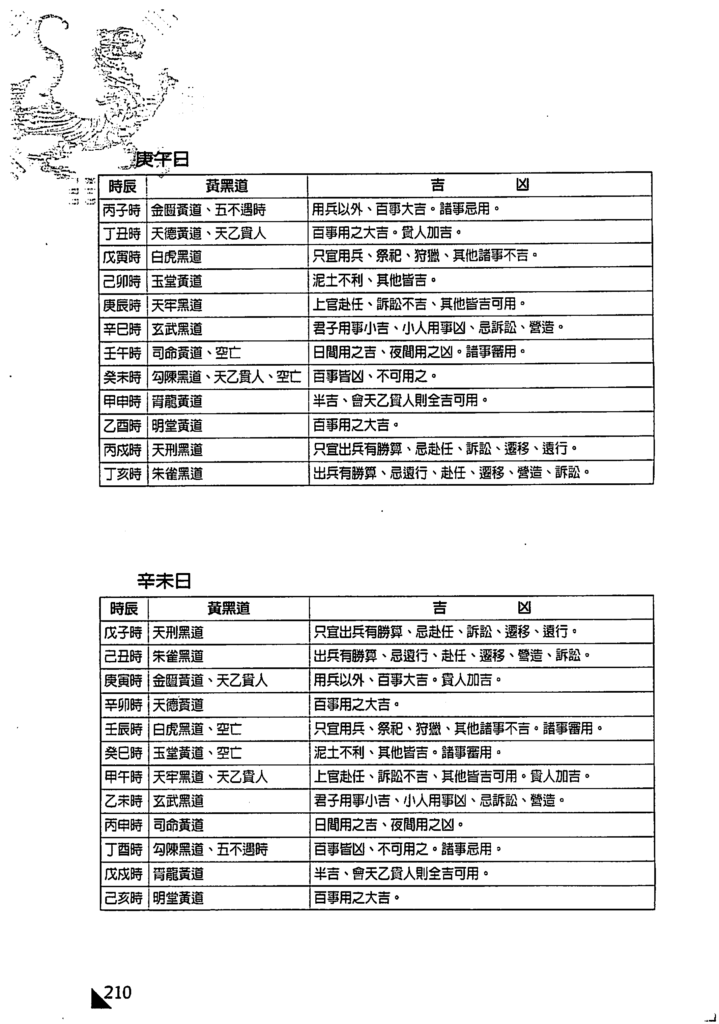
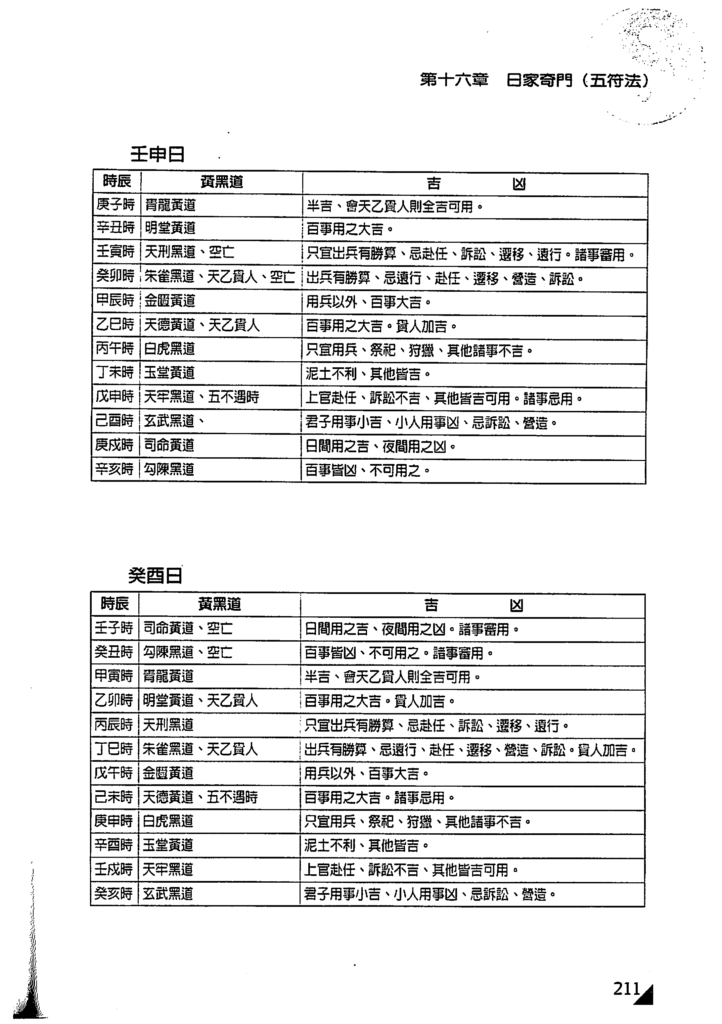
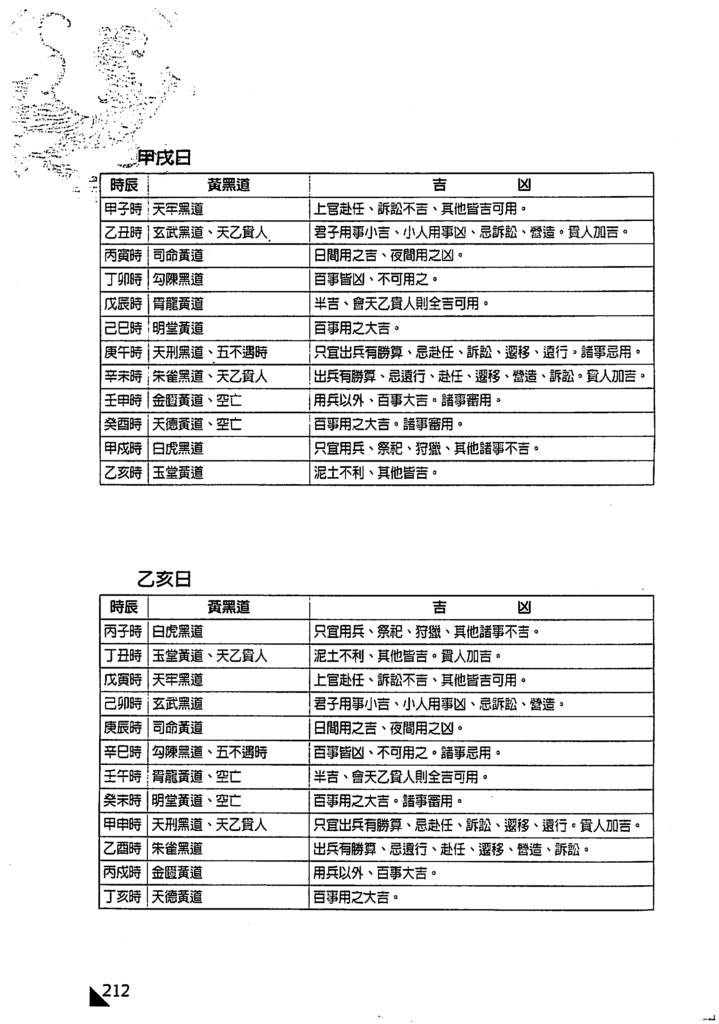

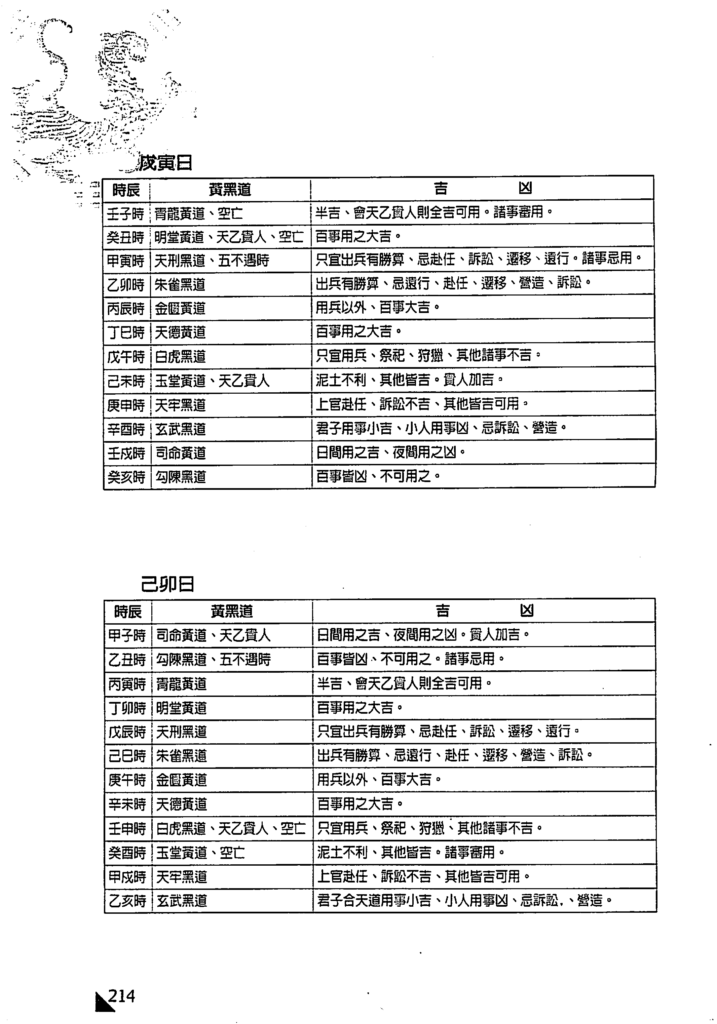


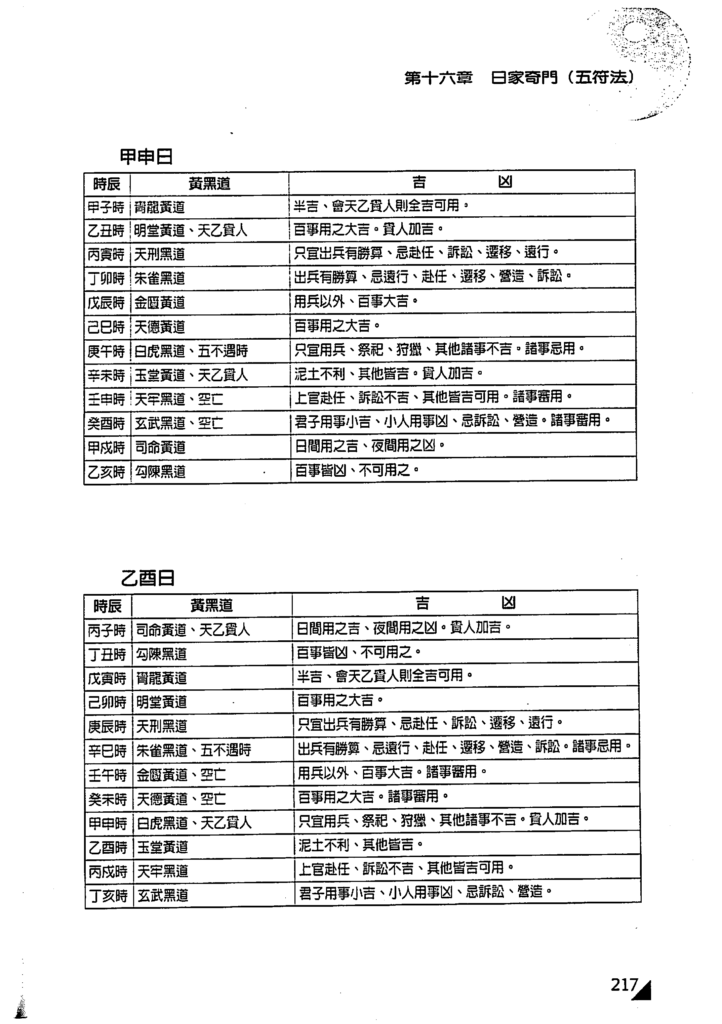

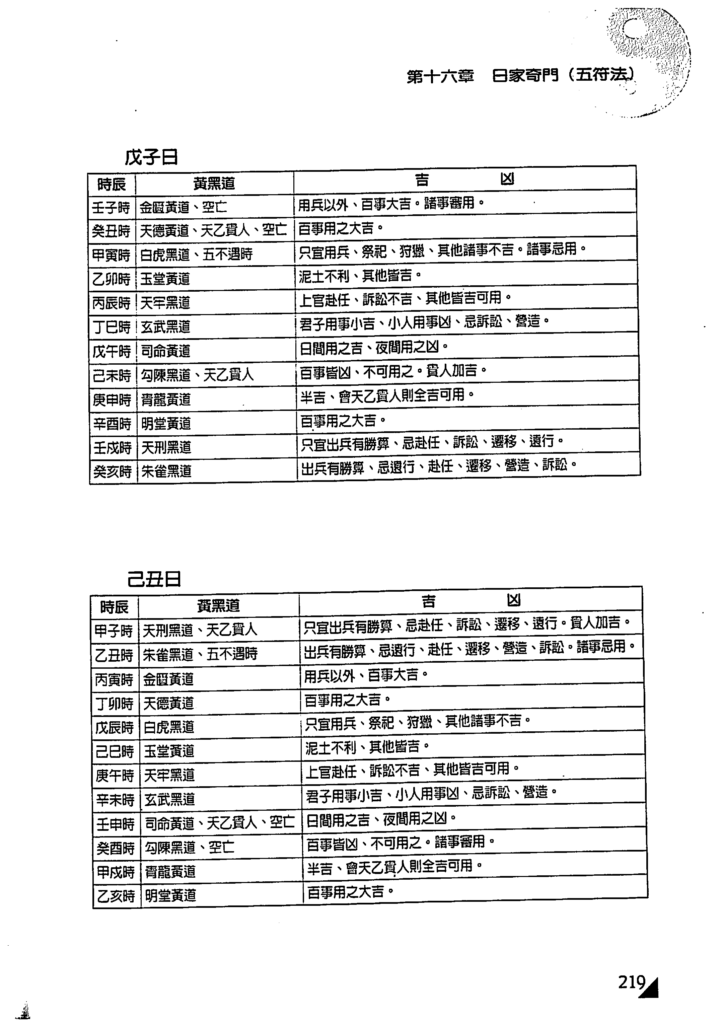

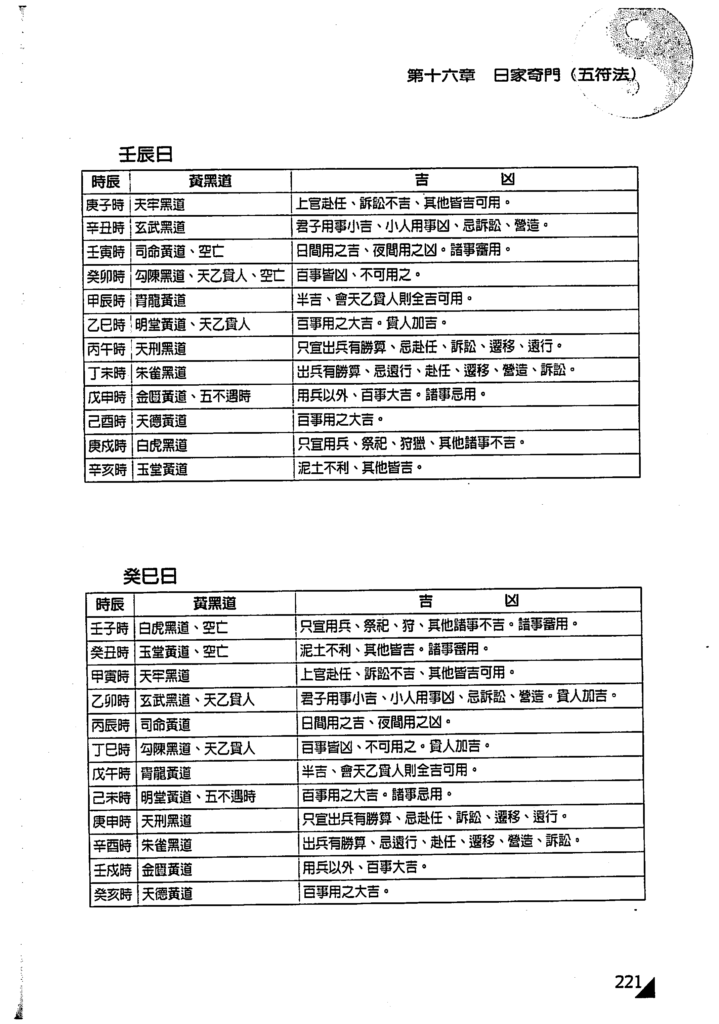
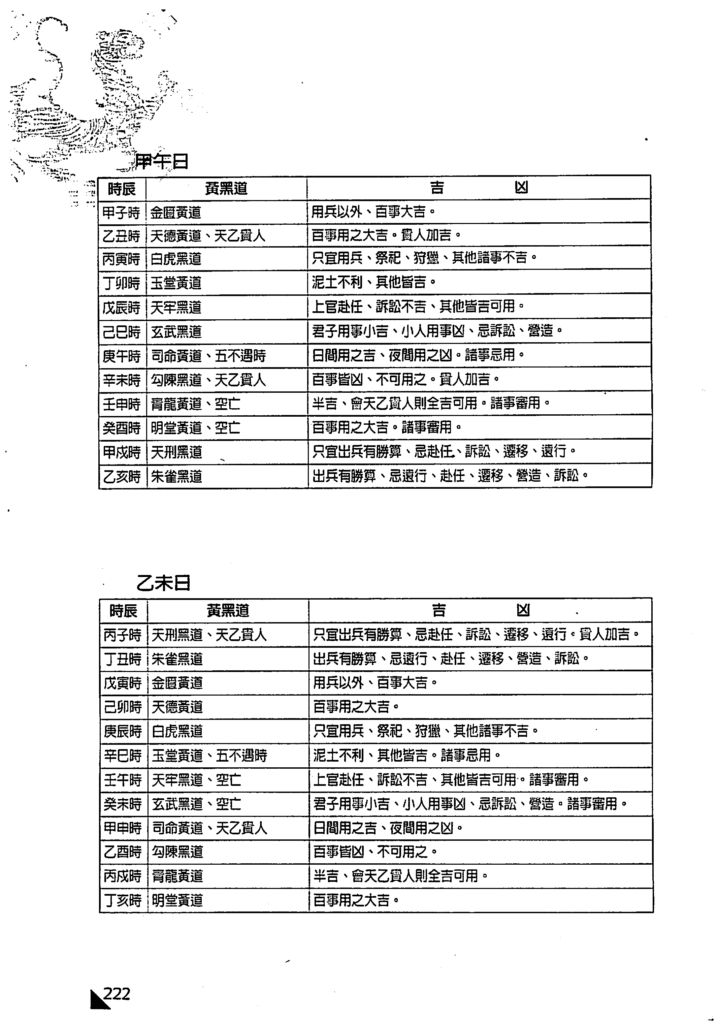


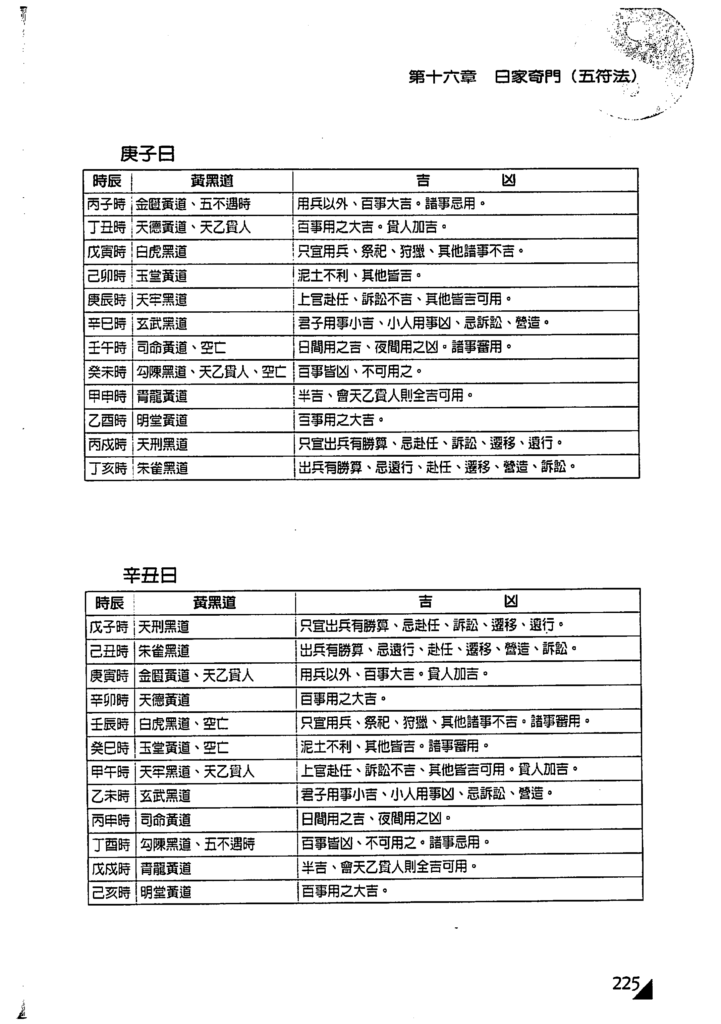


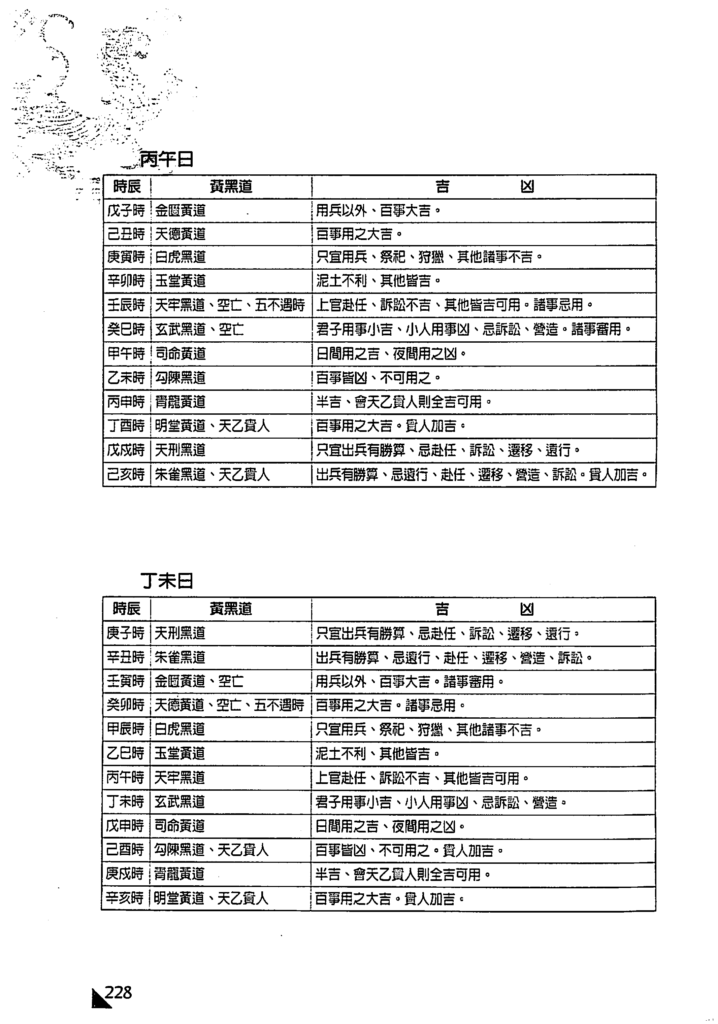

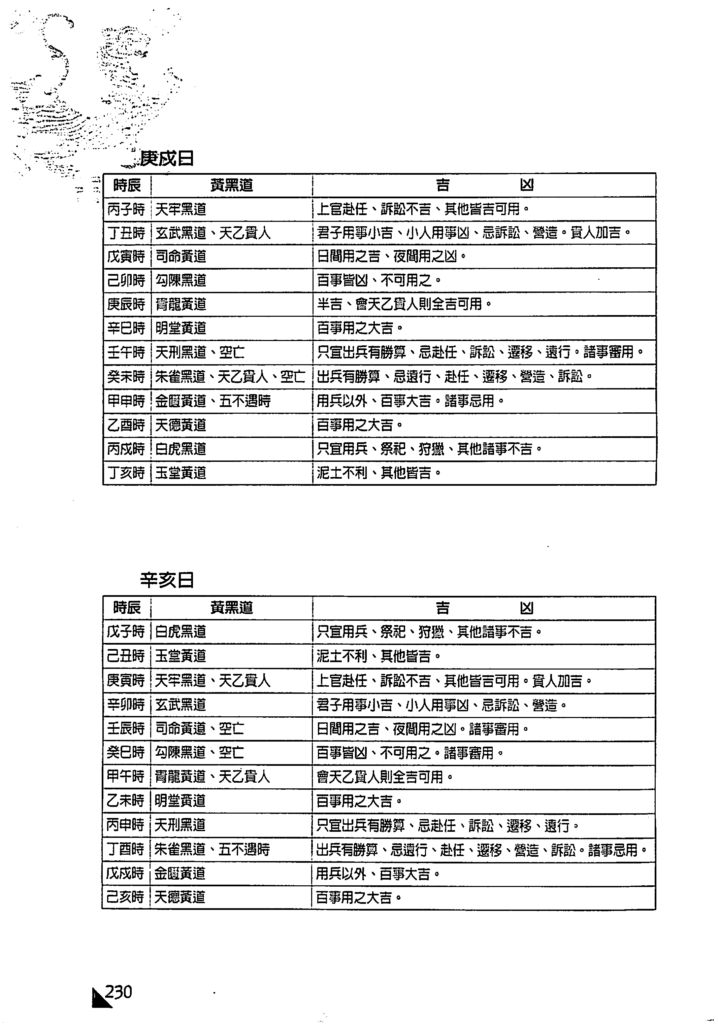


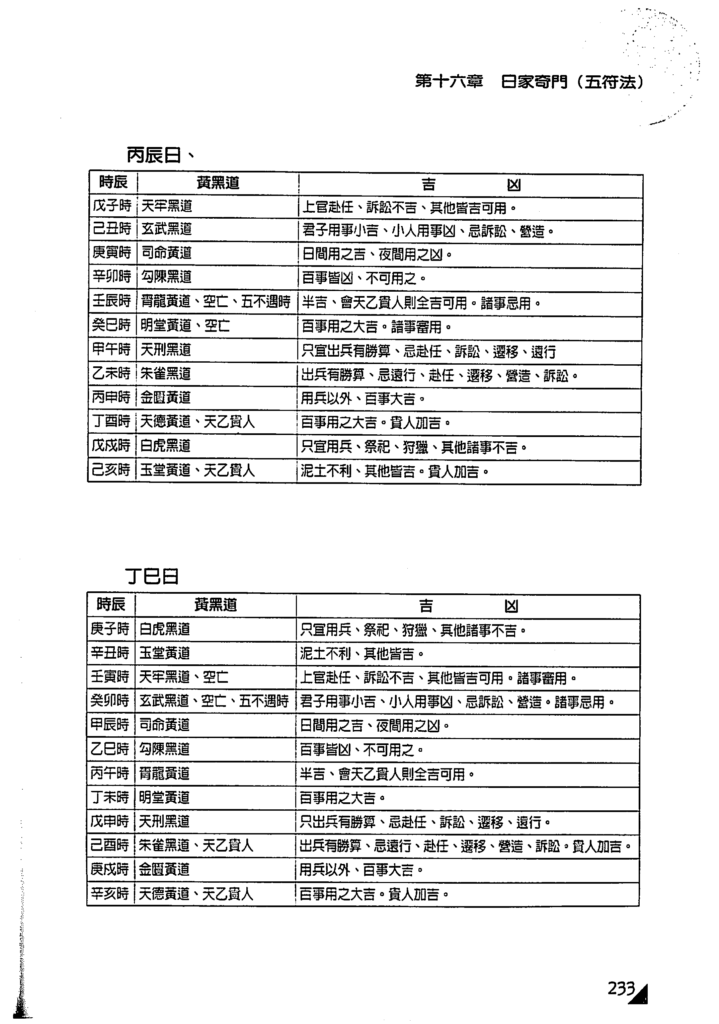



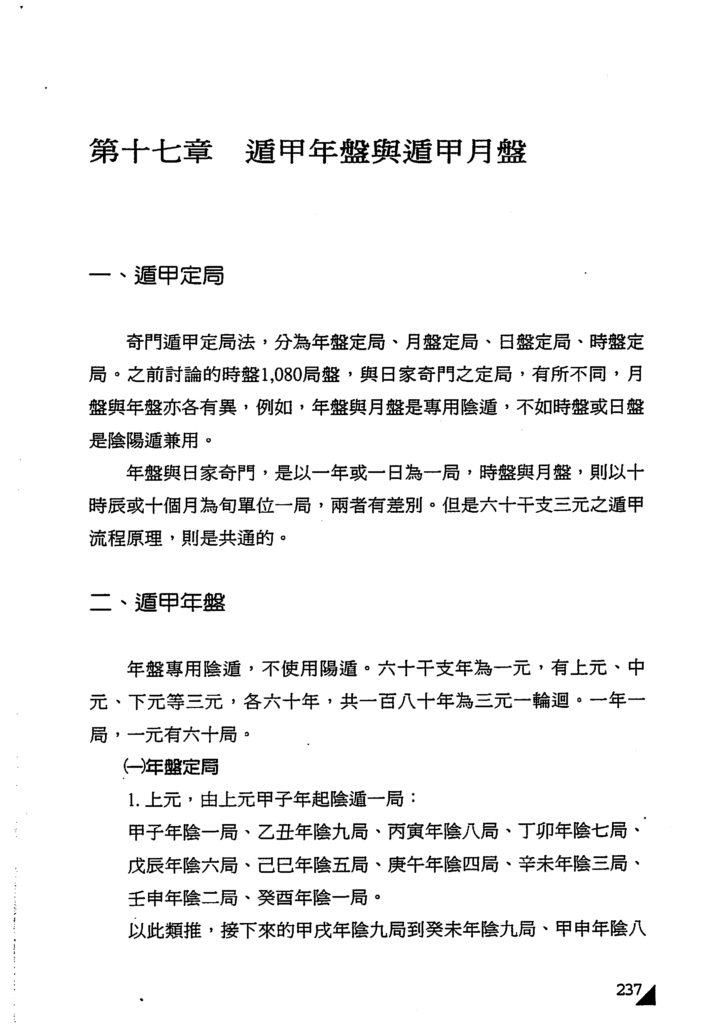


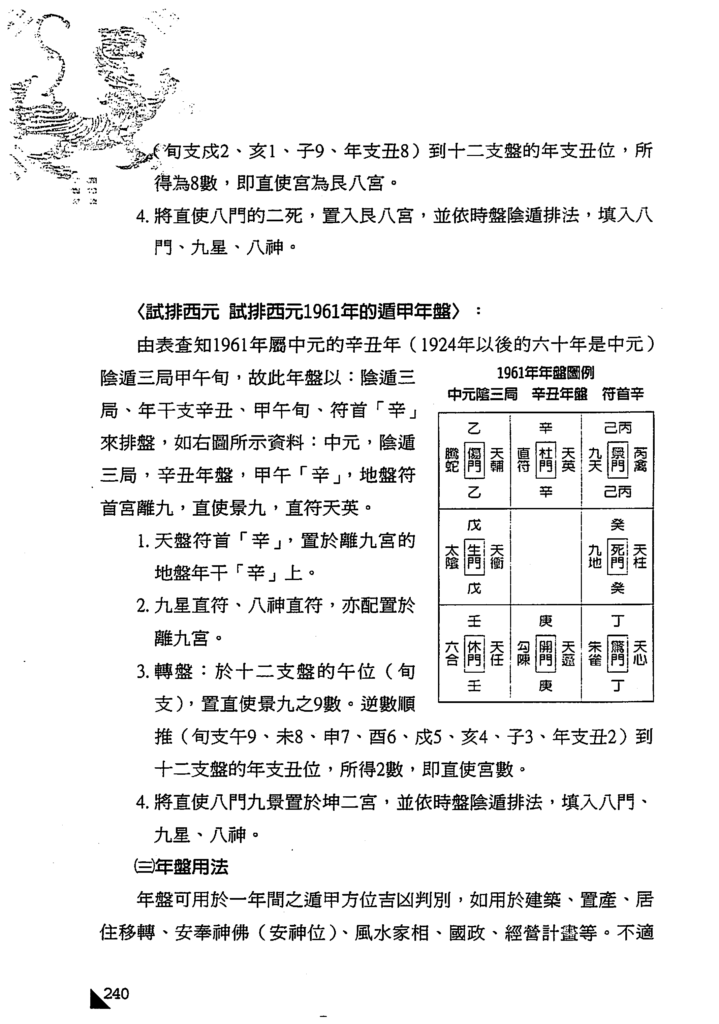

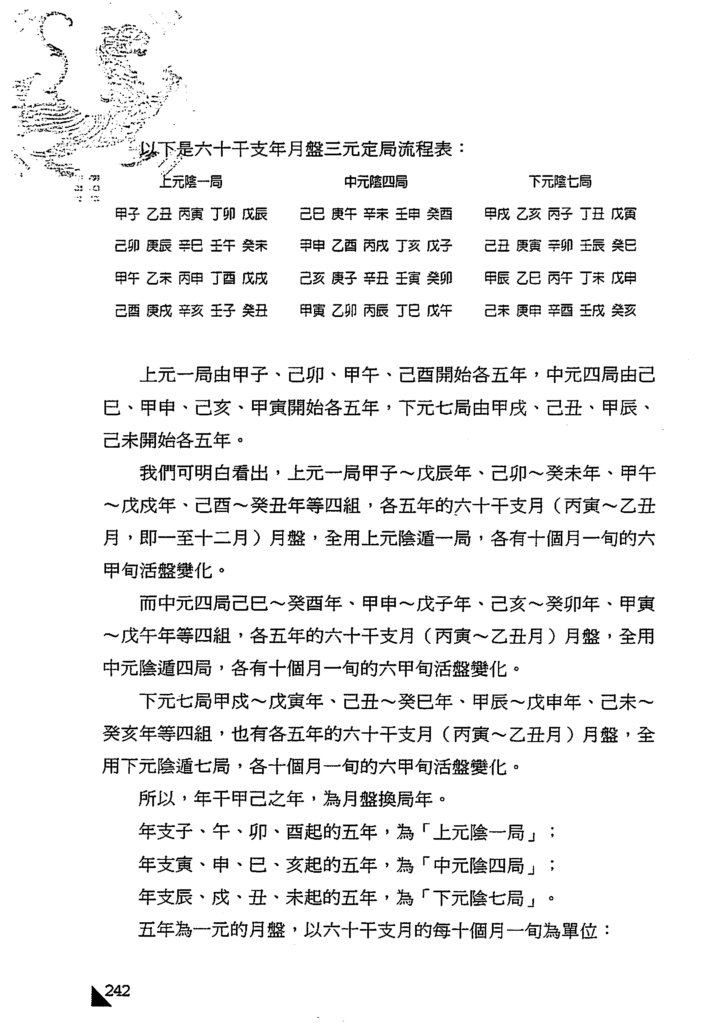




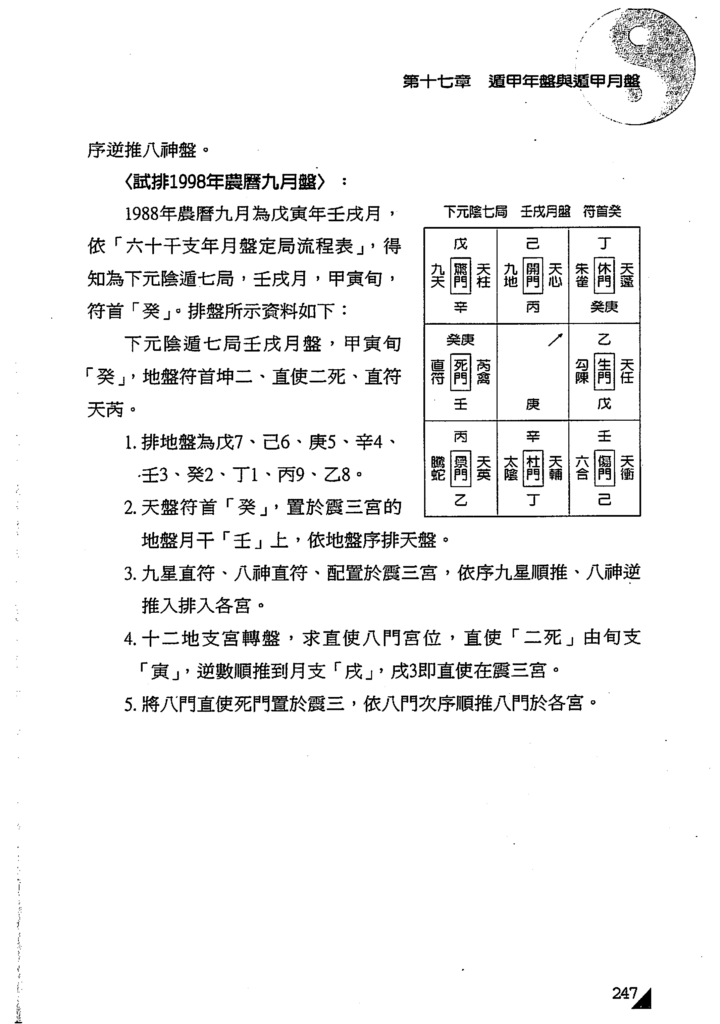
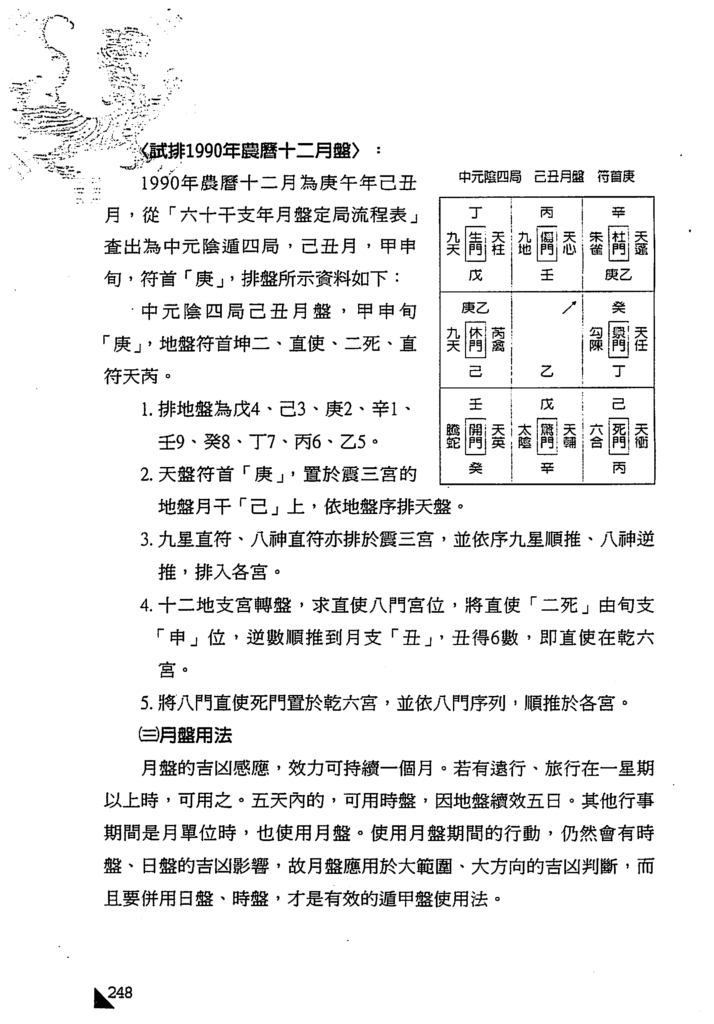

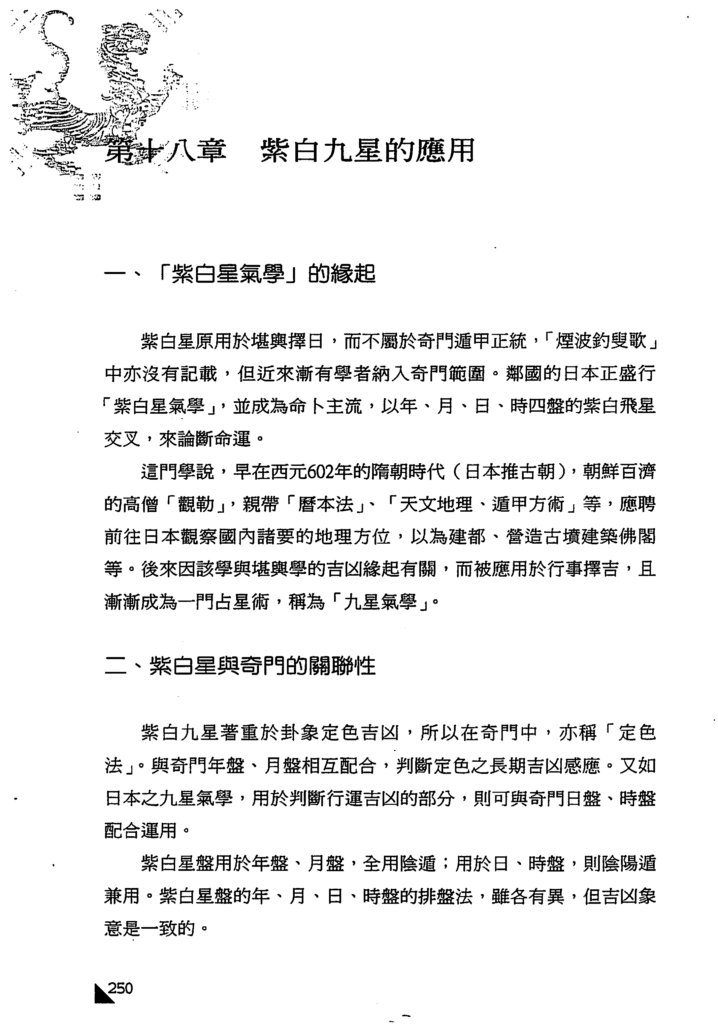
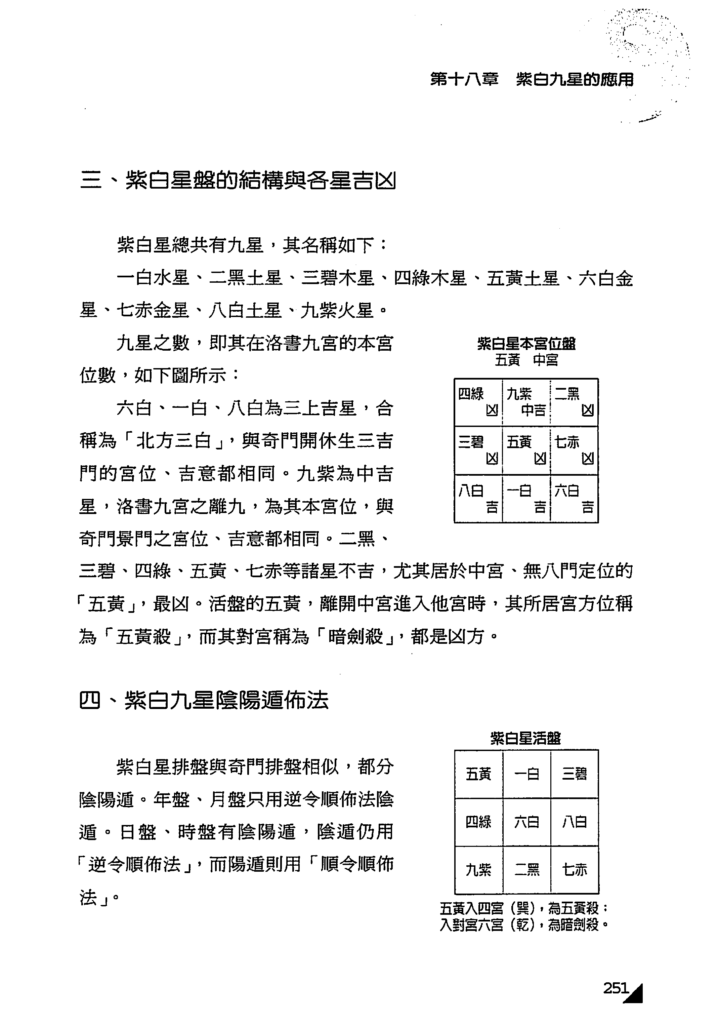
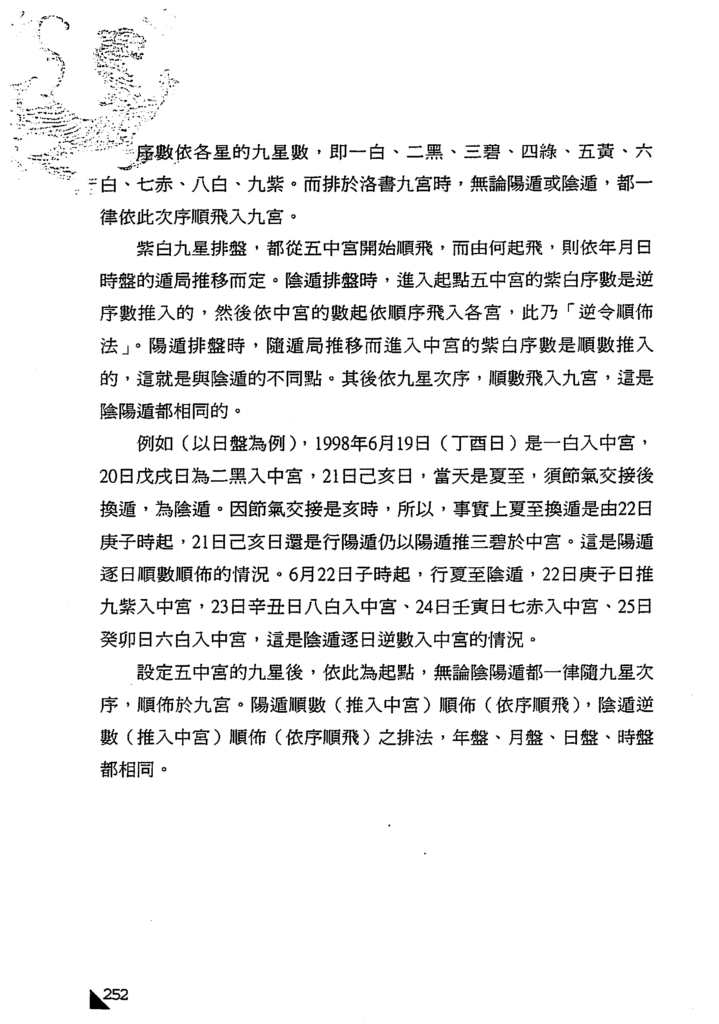



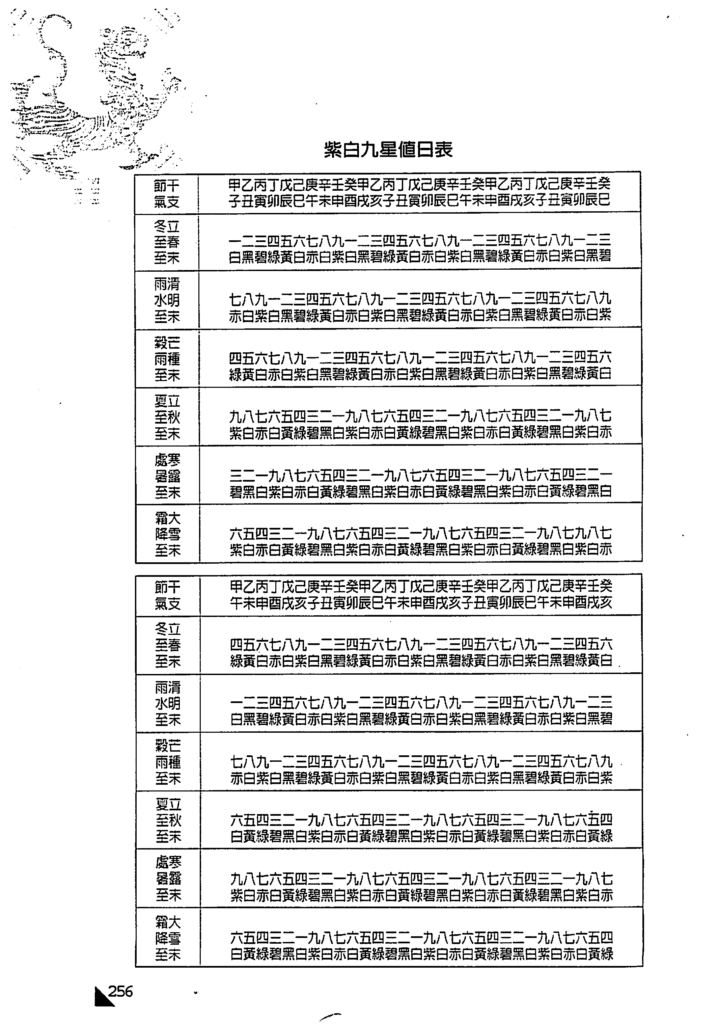

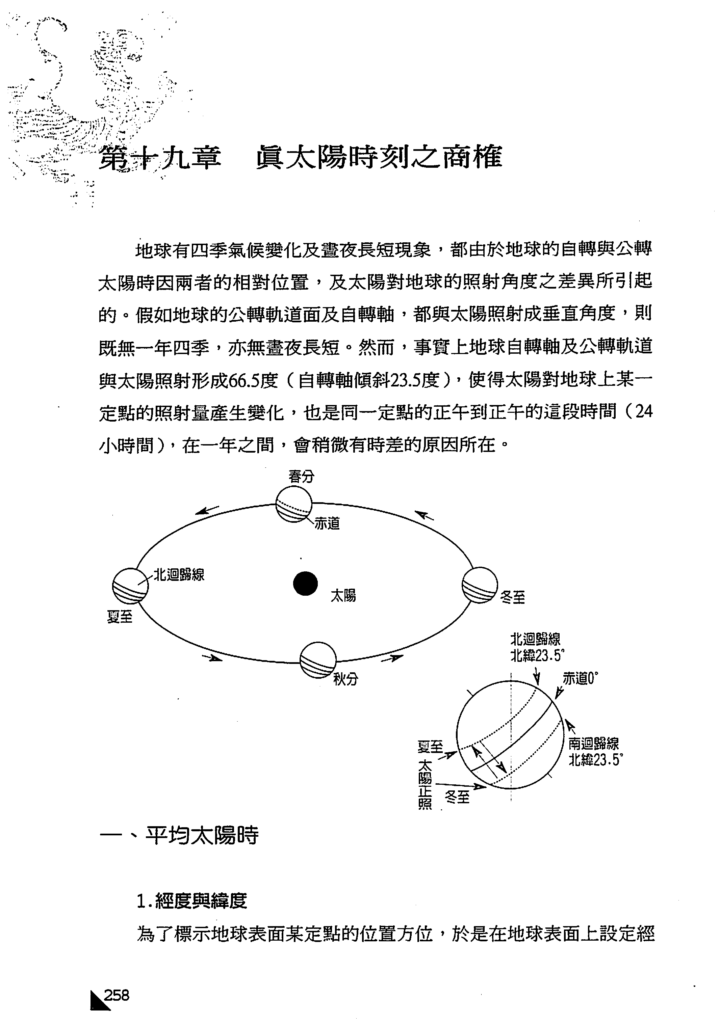
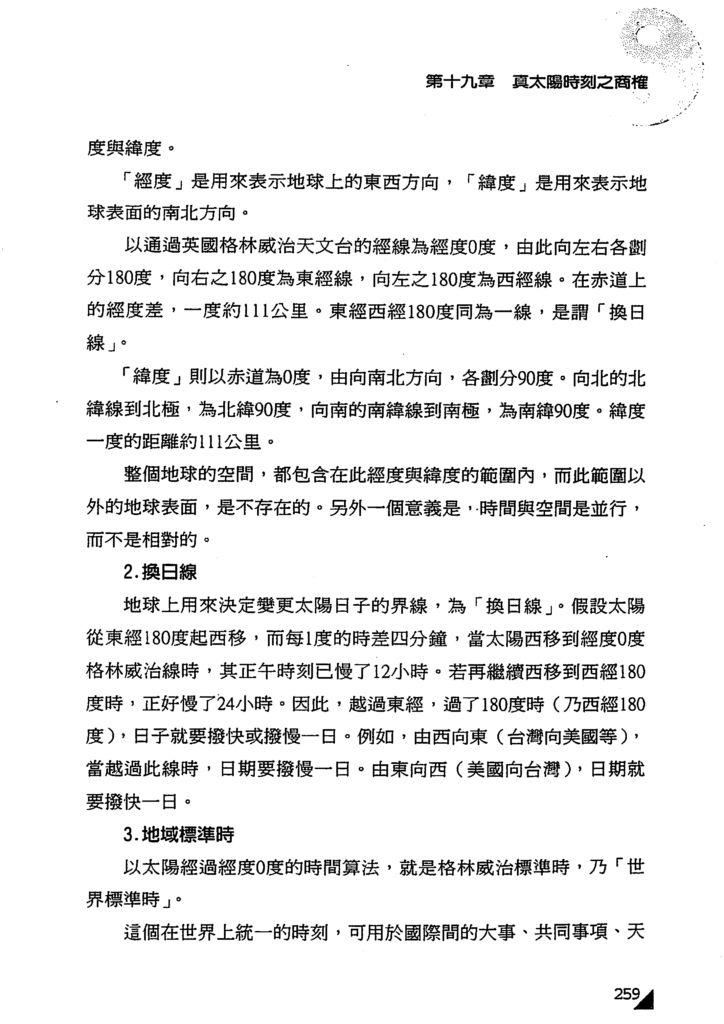
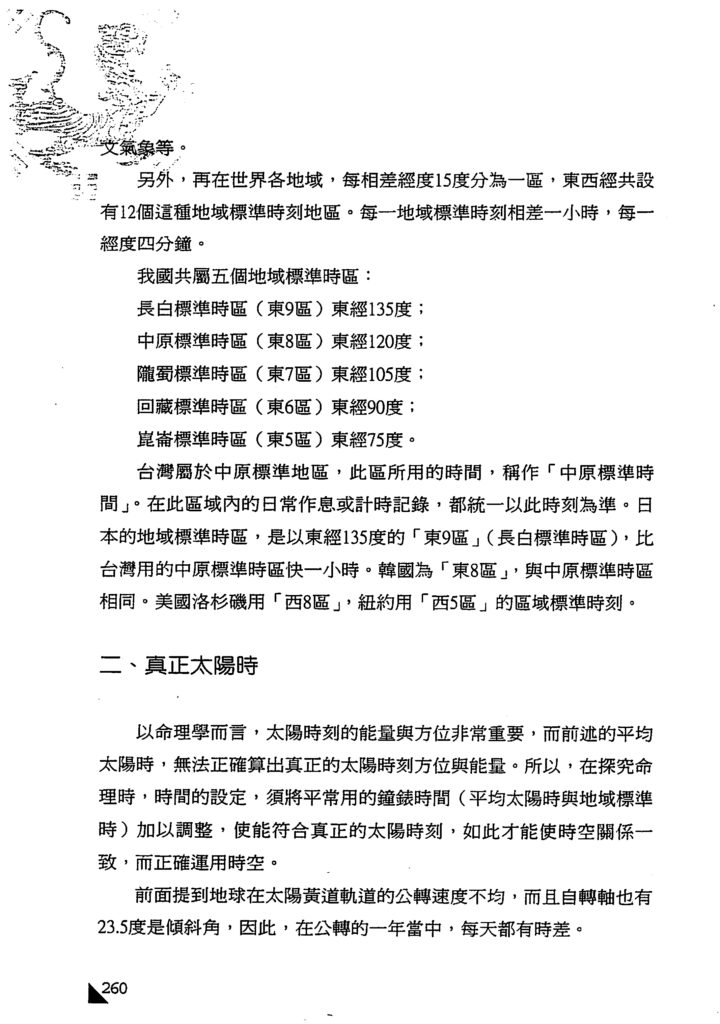
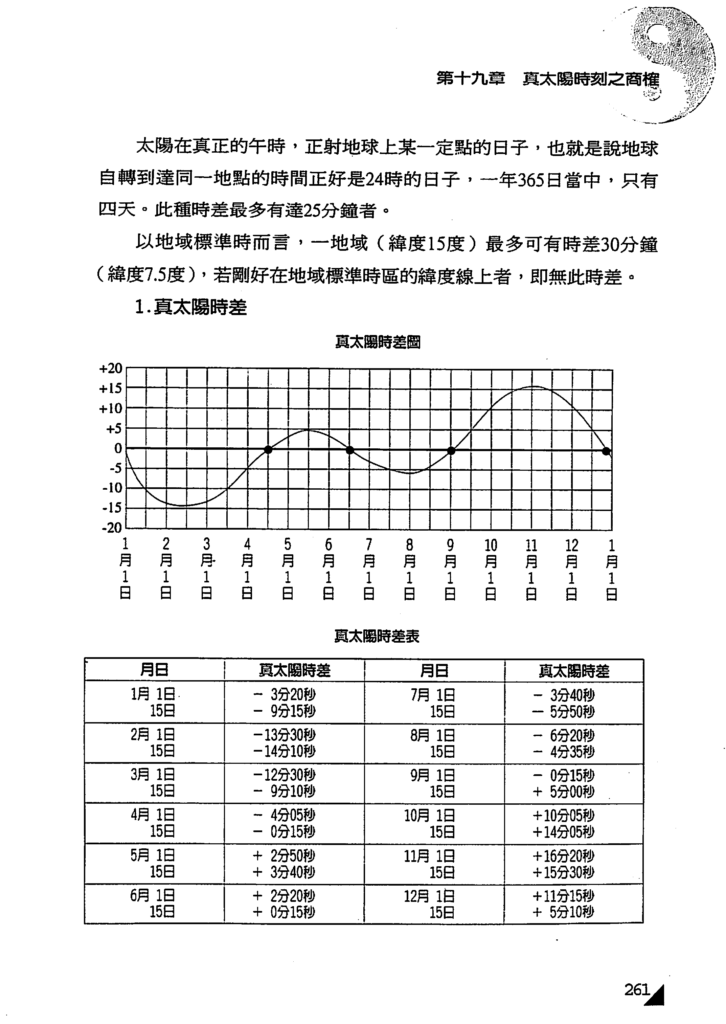

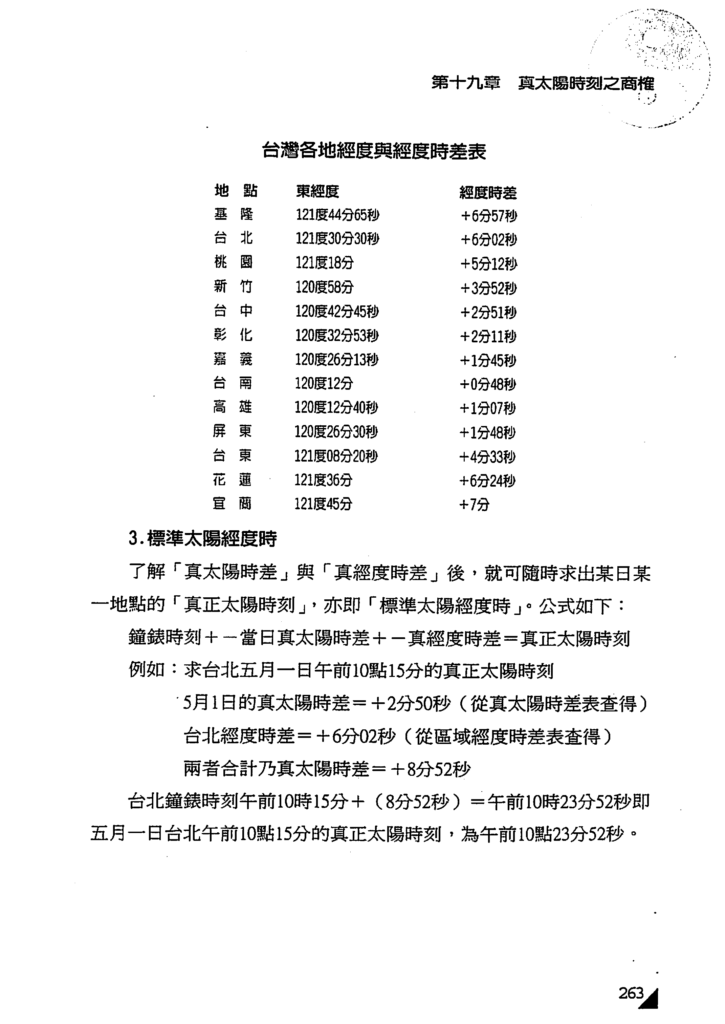

Culture文化 Metaphysics玄学 275P 奇门遁甲基础篇
历史上的今天 ( 16 ):
- 2022年-12月-05日:GBA:EZ-Talk - Shokyuu Hen 2 简单说英文初级篇2-gba
- 2022年-12月-05日:GBA:禁货猎人时空的冒险者-gba
- 2022年-12月-05日:GBA:空战神鹰II-gba
- 2022年-12月-05日:GBA:卡片聚会-gba
- 2022年-12月-05日:History历史:台湾写真帖卷3·西方的中国影像 1793-1949 (189P)
- 2022年-12月-05日:History历史:台湾写真帖卷2·西方的中国影像 1793-1949 (189P)
- 2022年-12月-05日:History历史:台湾写真帖卷1·西方的中国影像 1793-1949 (201P)
- 2022年-12月-05日:Culture文化:人民画报196013增刊 (8P)
- 2022年-12月-05日:Culture文化:人民画报196013 (25P)
- 2022年-12月-05日:Culture文化:人民画报196012 (25P)
- 2022年-12月-05日:Culture文化:人民画报196011 (26P)
- 2022年-12月-05日:Radio收音机:如皋汽车广播
- 2022年-12月-05日:Radio收音机:金湖人民广播电台
- 2022年-12月-05日:Radio收音机:979丹阳之声
- 2022年-12月-05日:Radio收音机:南京MIXFM1035
- 2022年-12月-05日:News新闻:12月5日,星期一,在这里每天60秒读懂世界! (1P)
可点 ➠ 2023年-12月-05日 ➠ 63 s ➠ ♥ 0

